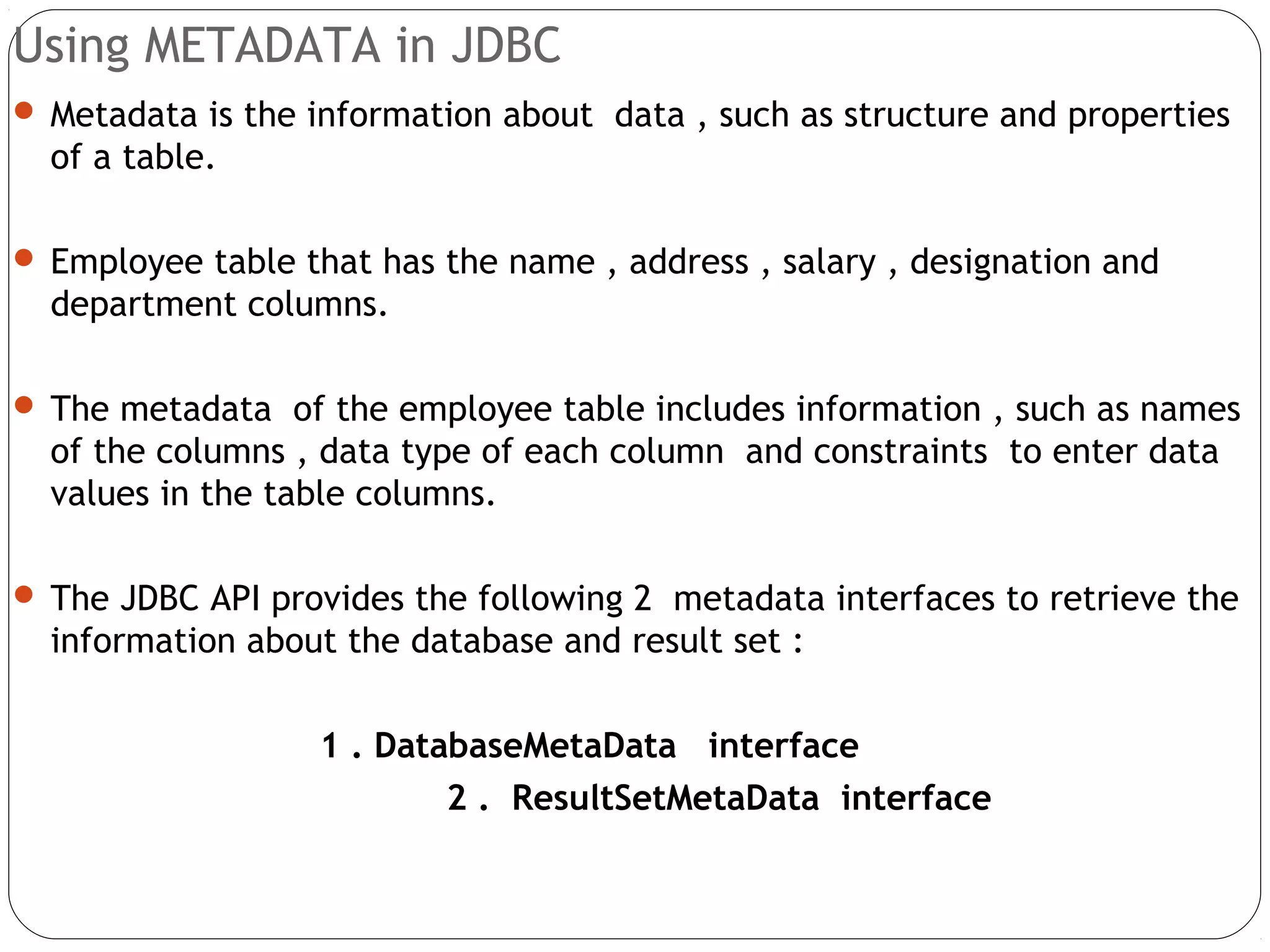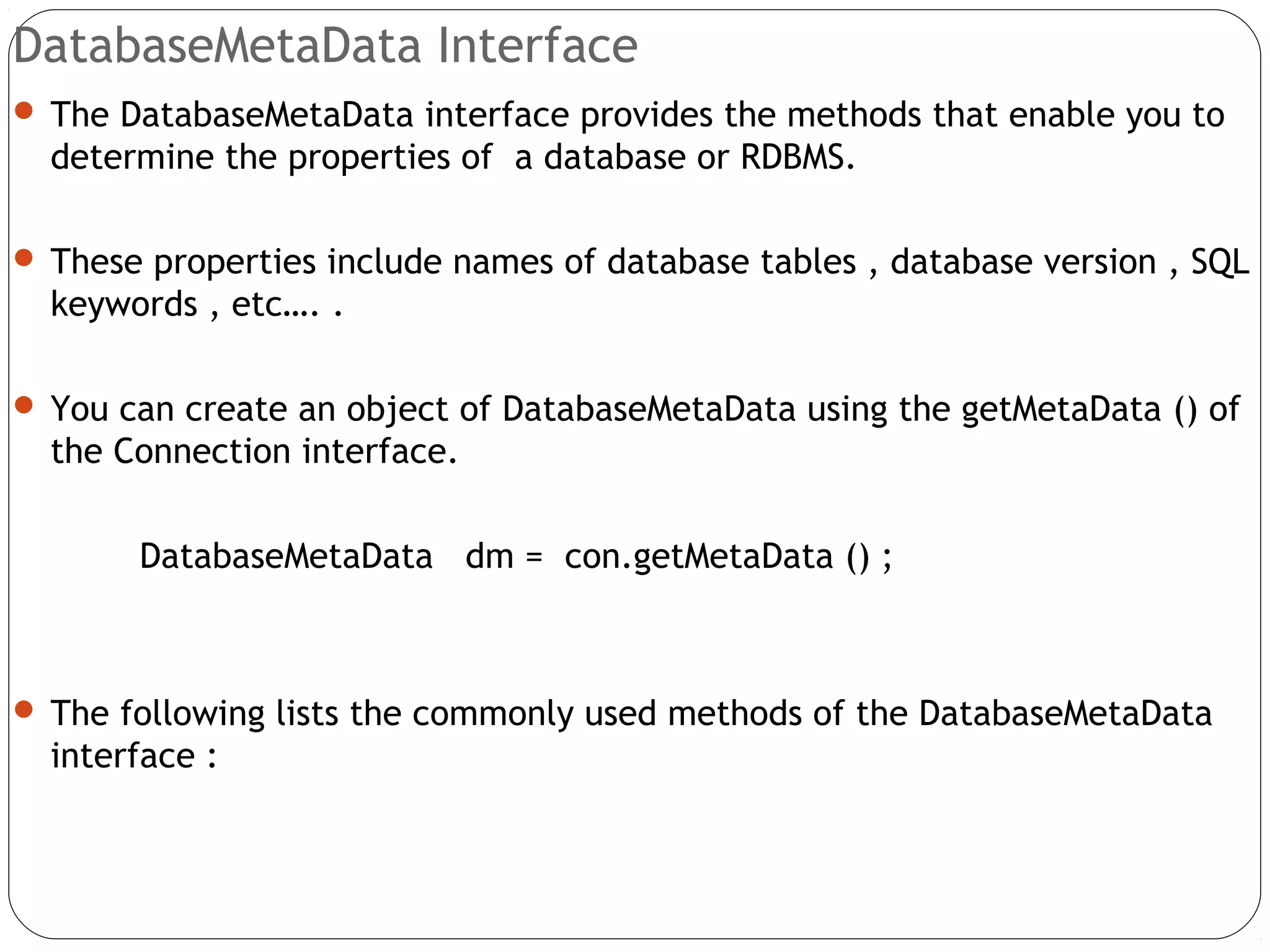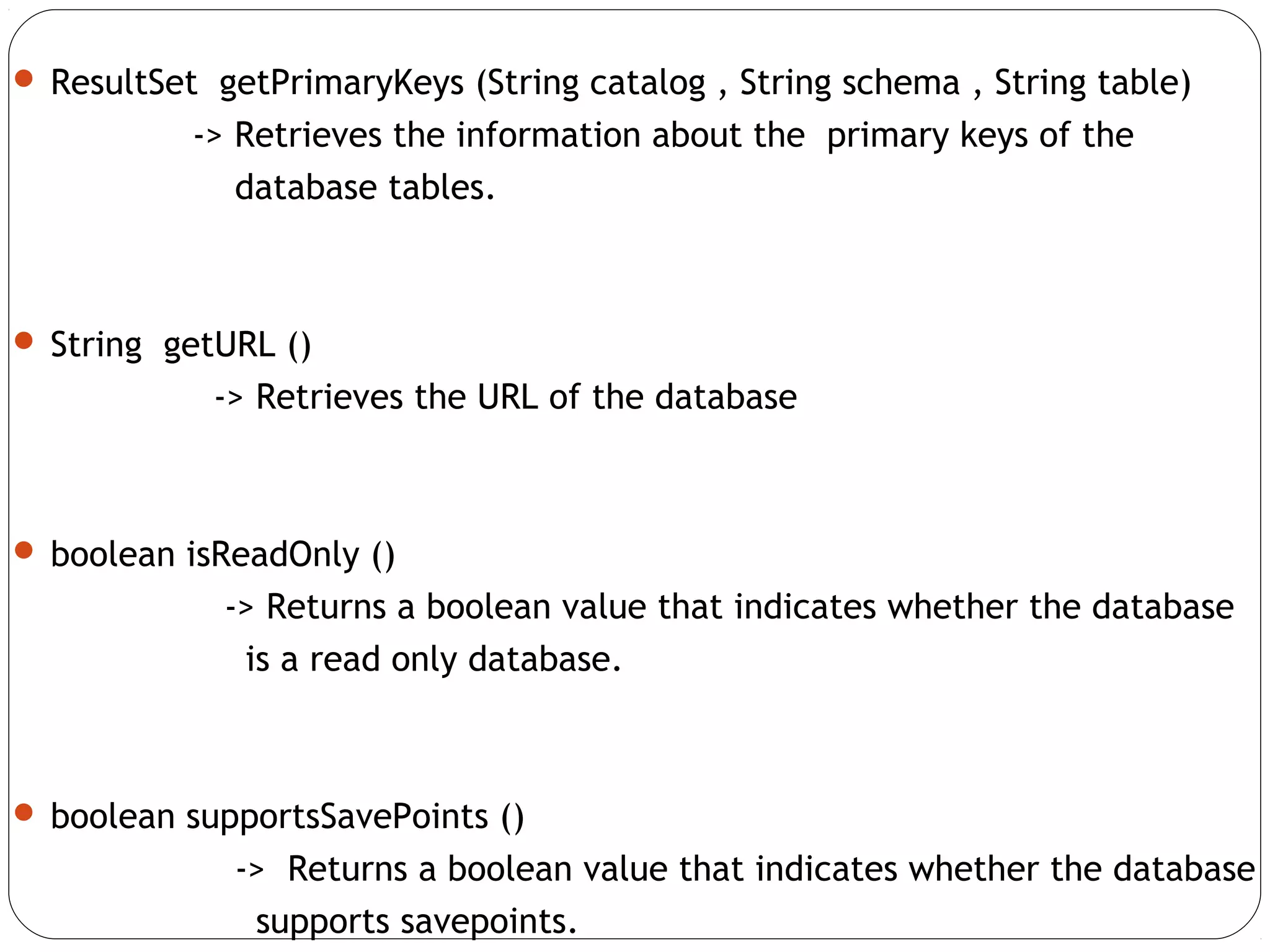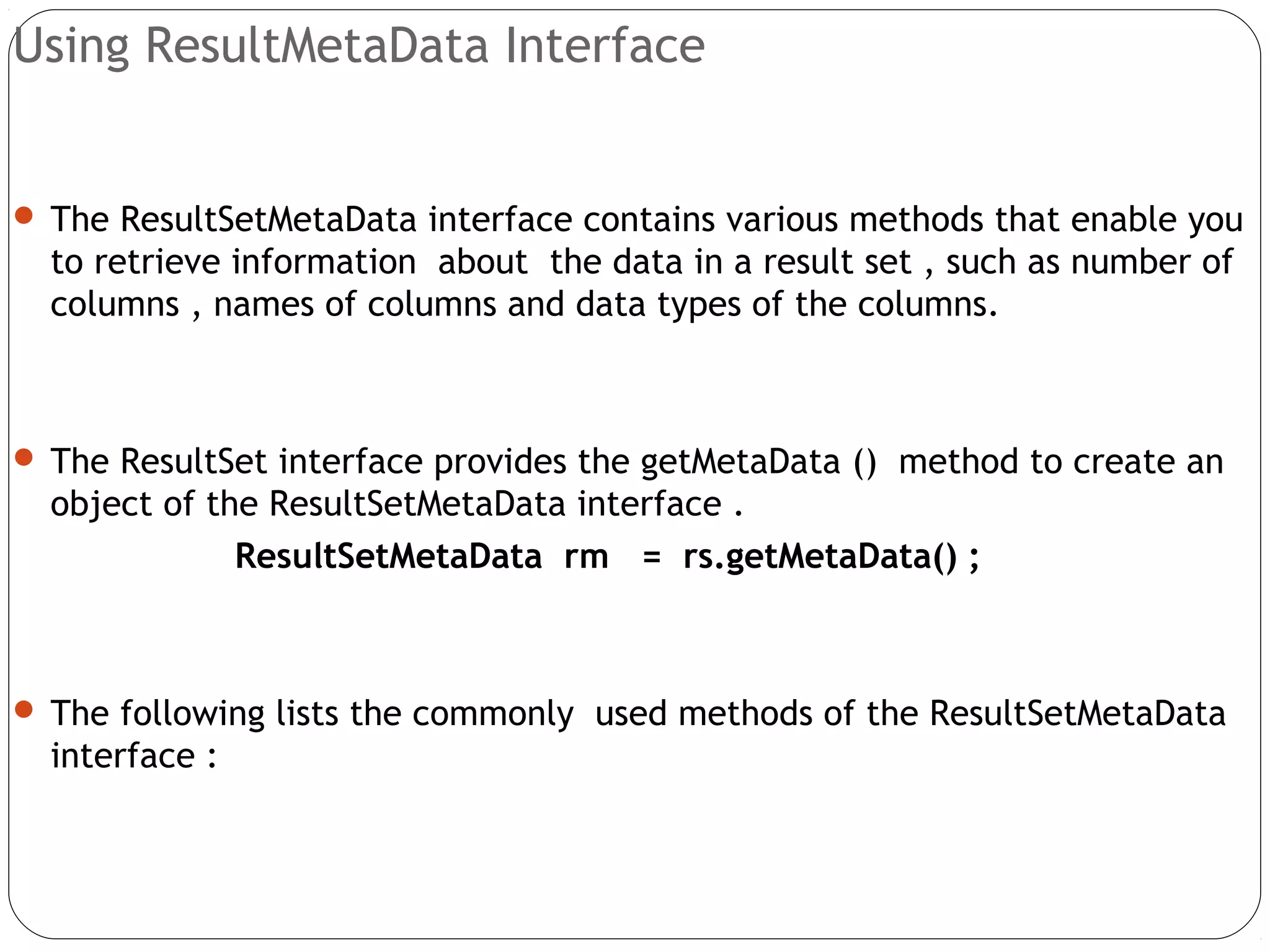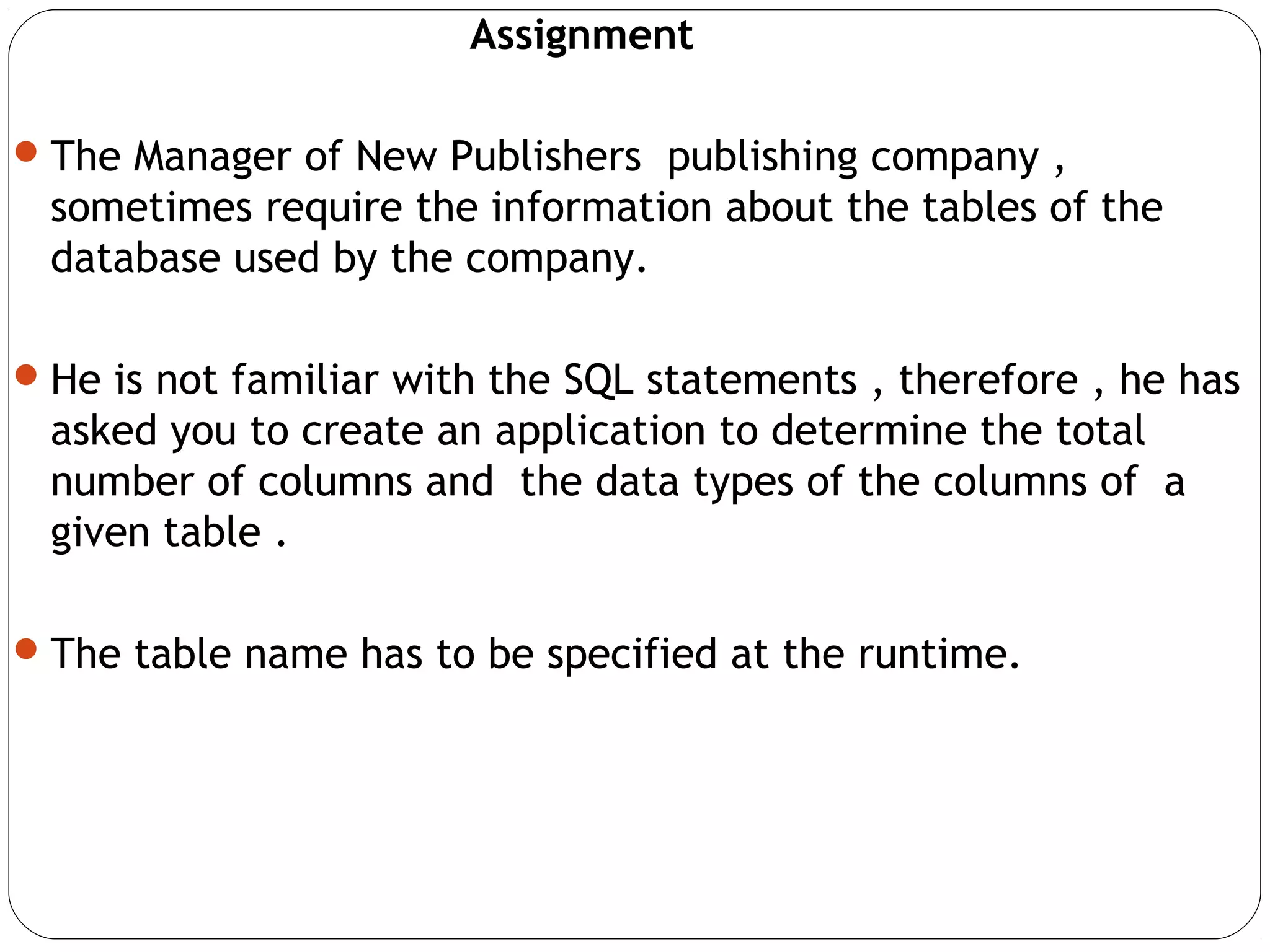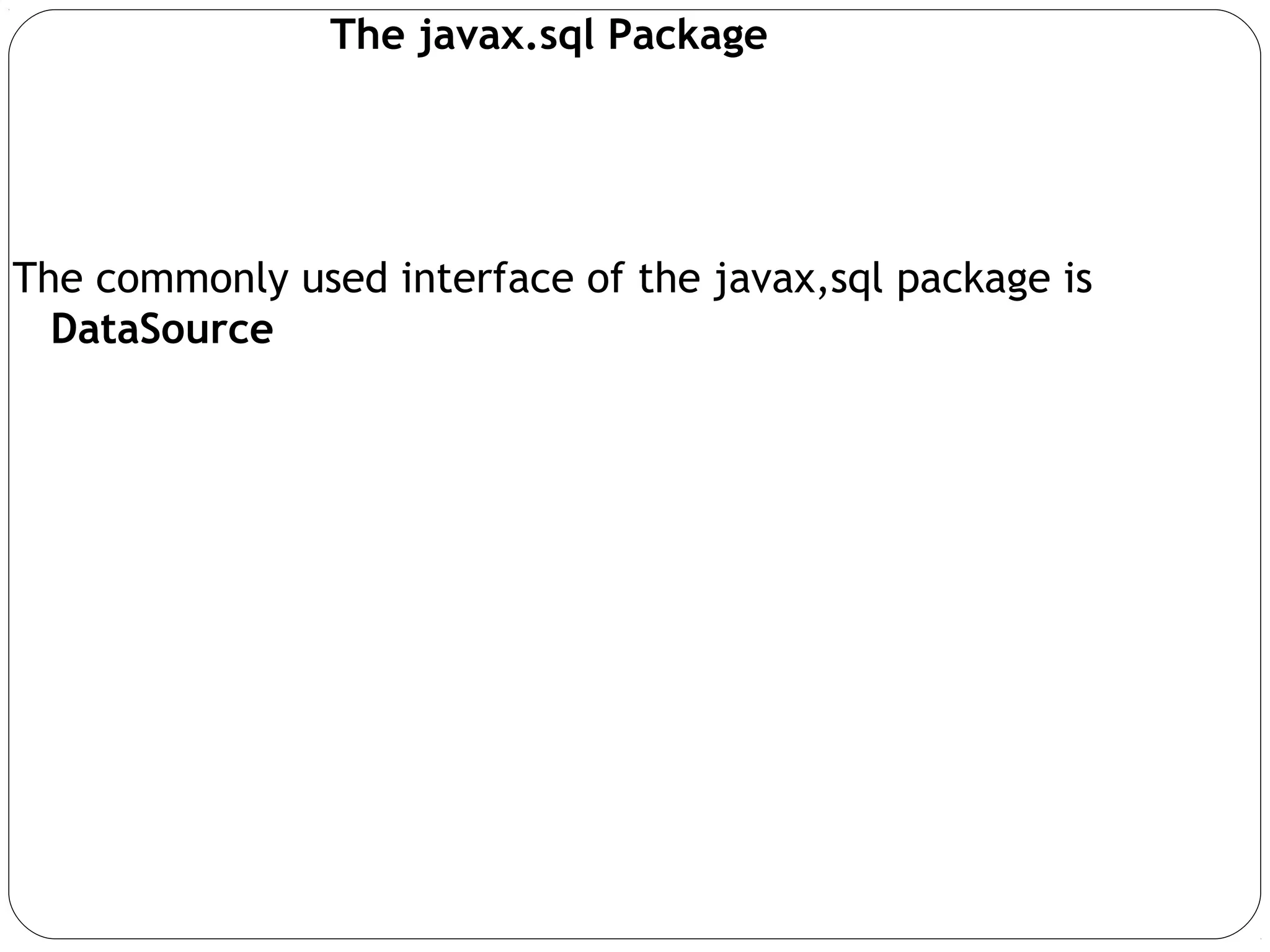The document provides an overview of Java Database Connectivity (JDBC), explaining its architecture which includes the JDBC application and driver layers. It details the various types of JDBC drivers (Type 1 to Type 4), their functions, and how they facilitate communication between Java applications and databases. Additionally, it outlines the process of loading drivers, establishing connections, executing JDBC statements, and handling SQL exceptions for querying databases.
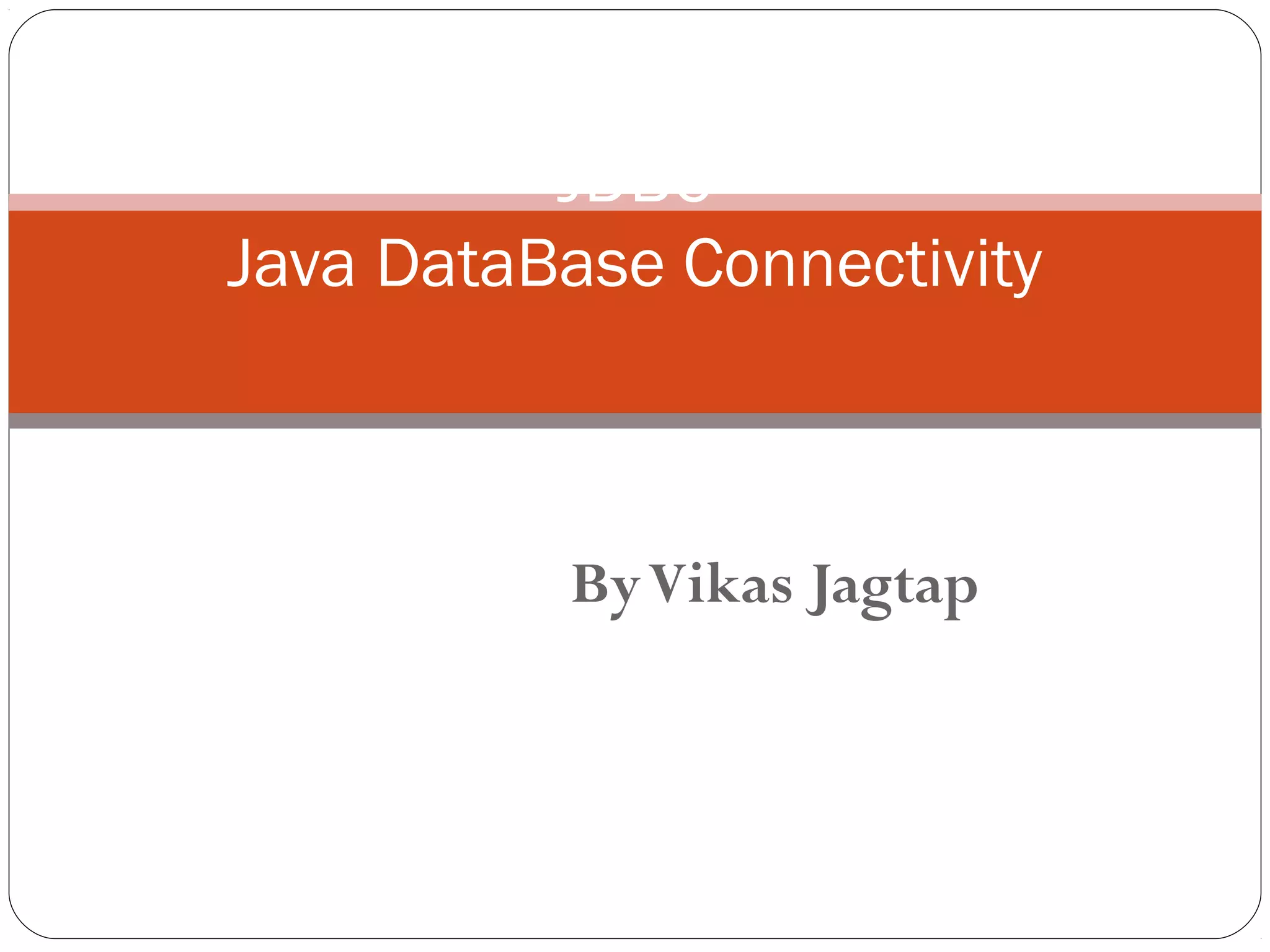
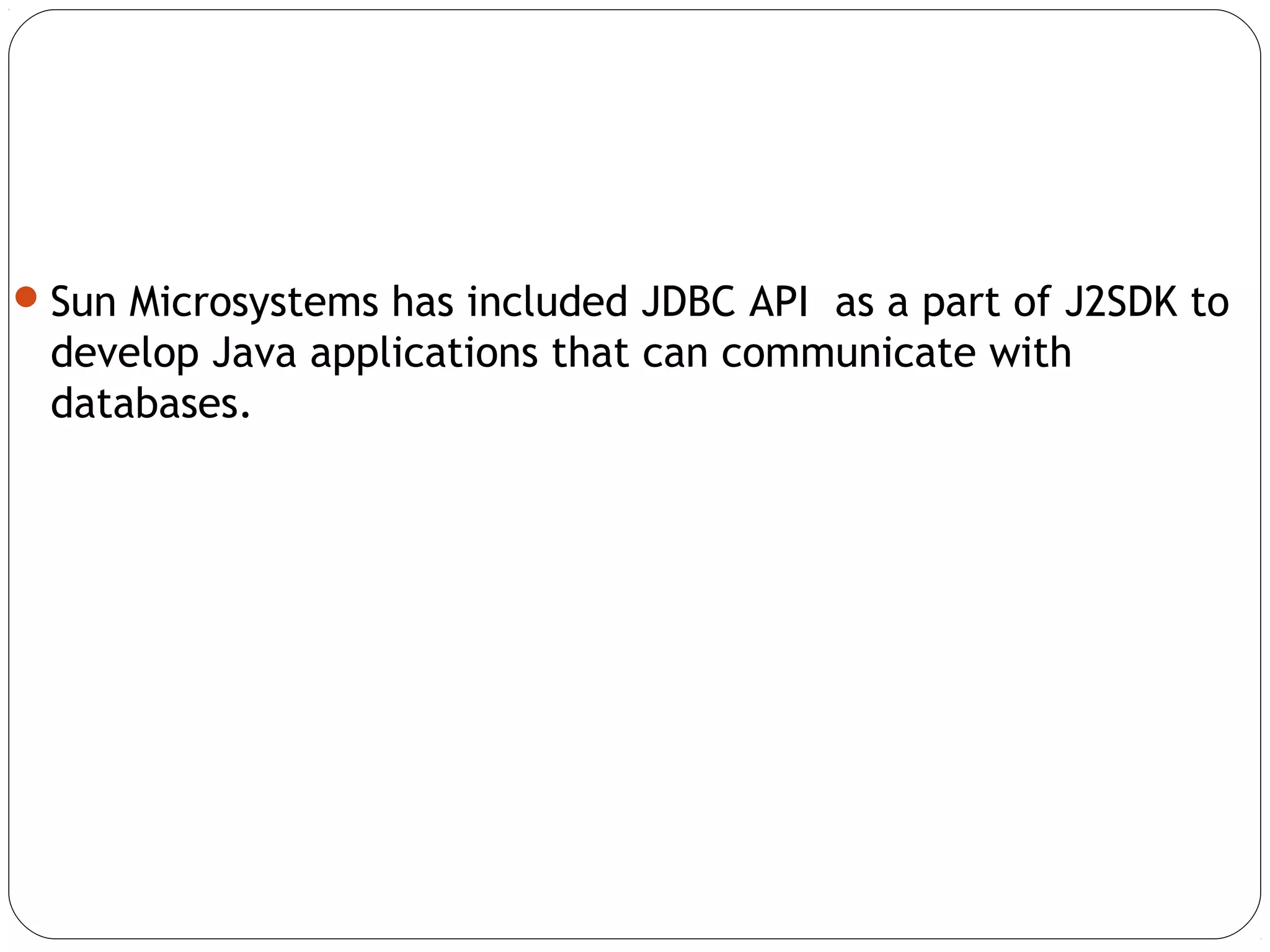
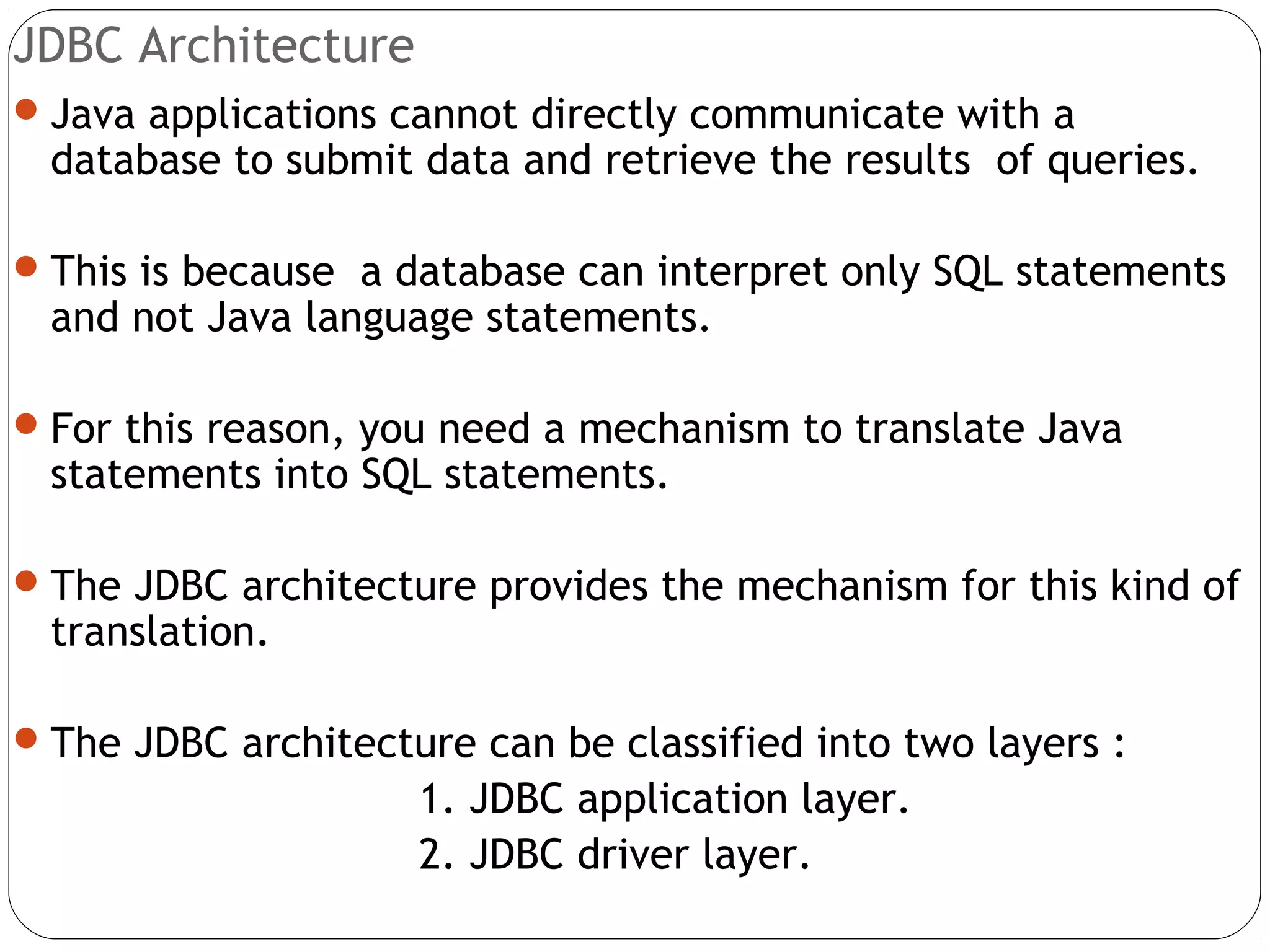
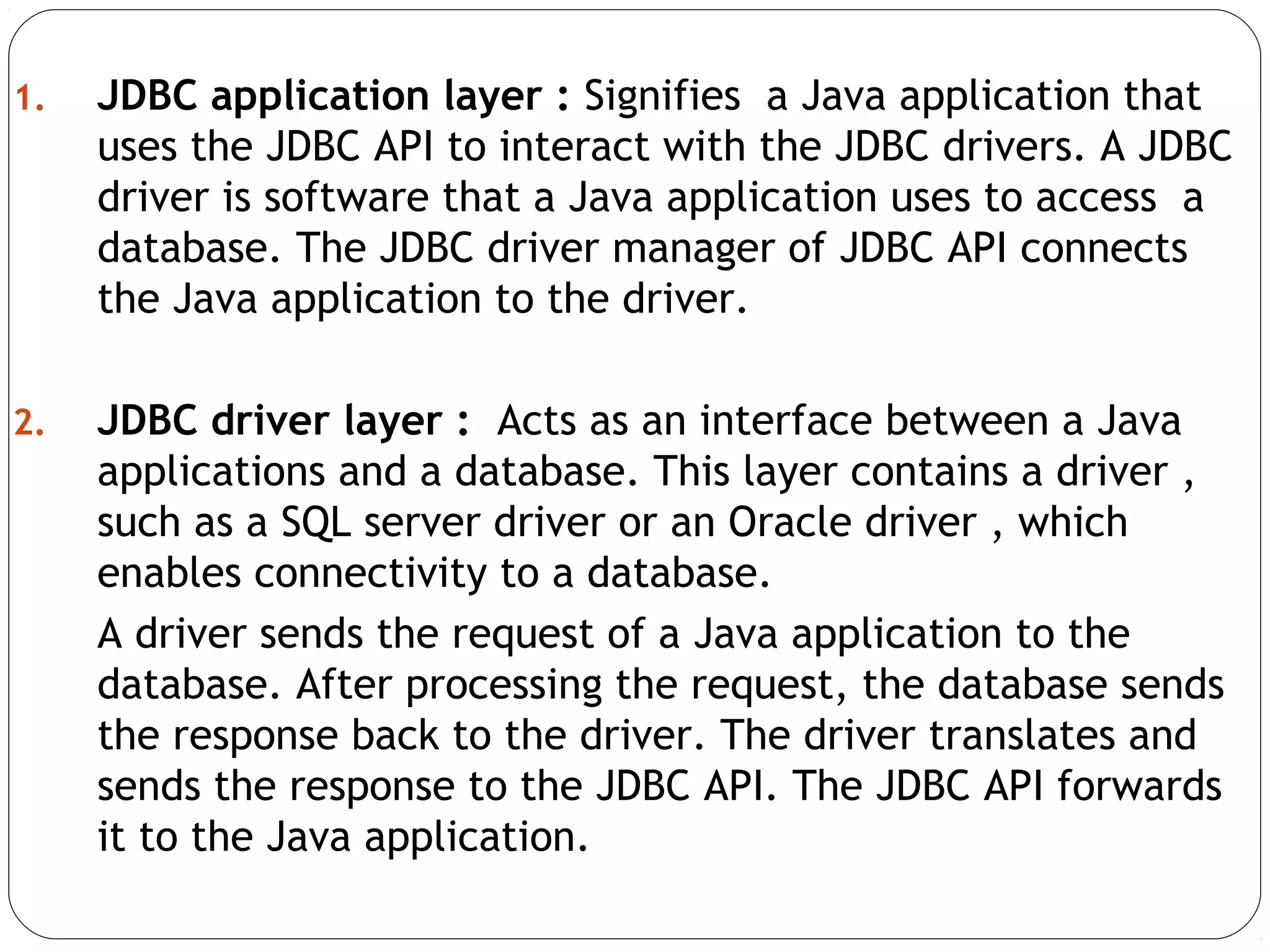

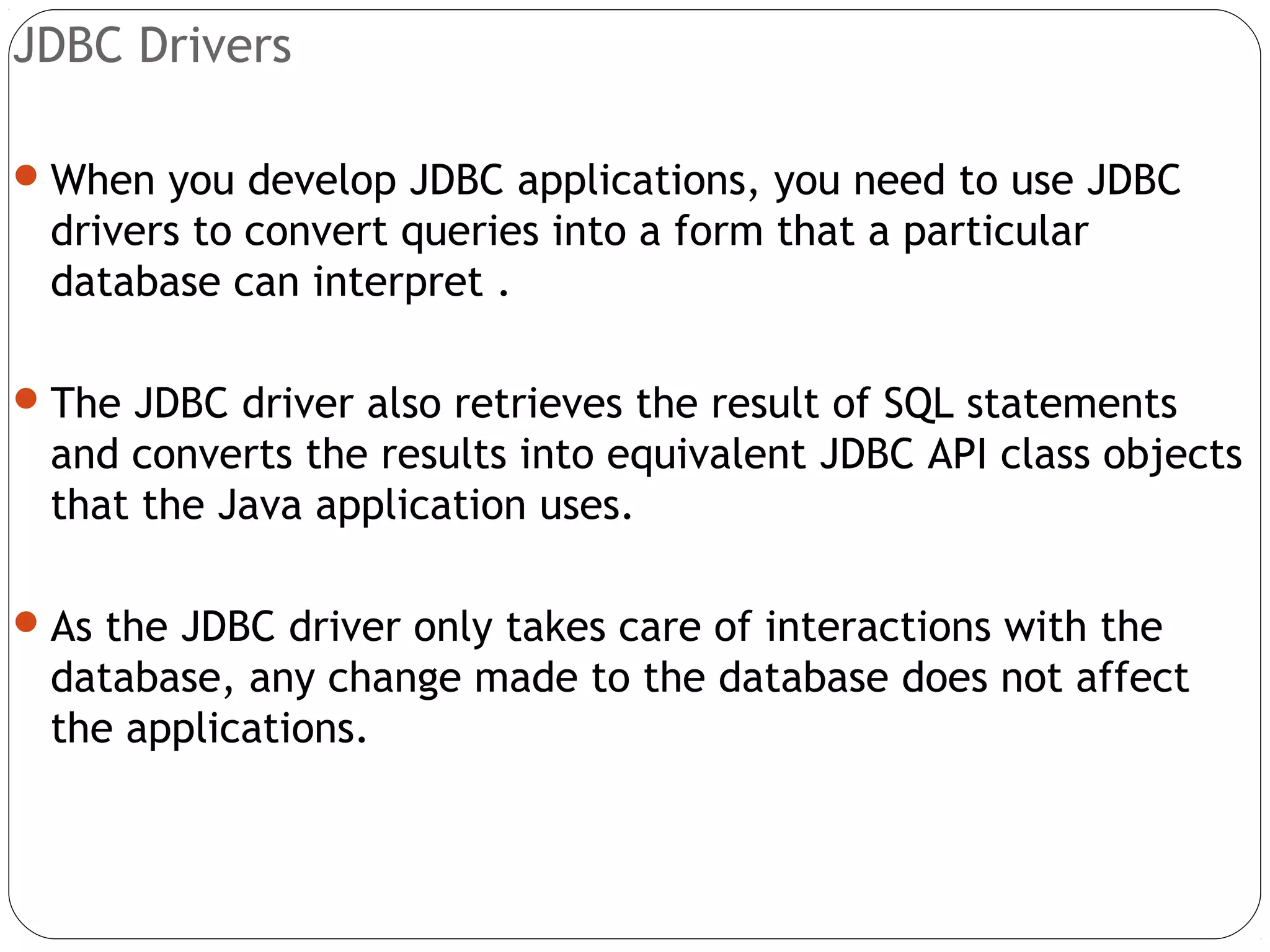
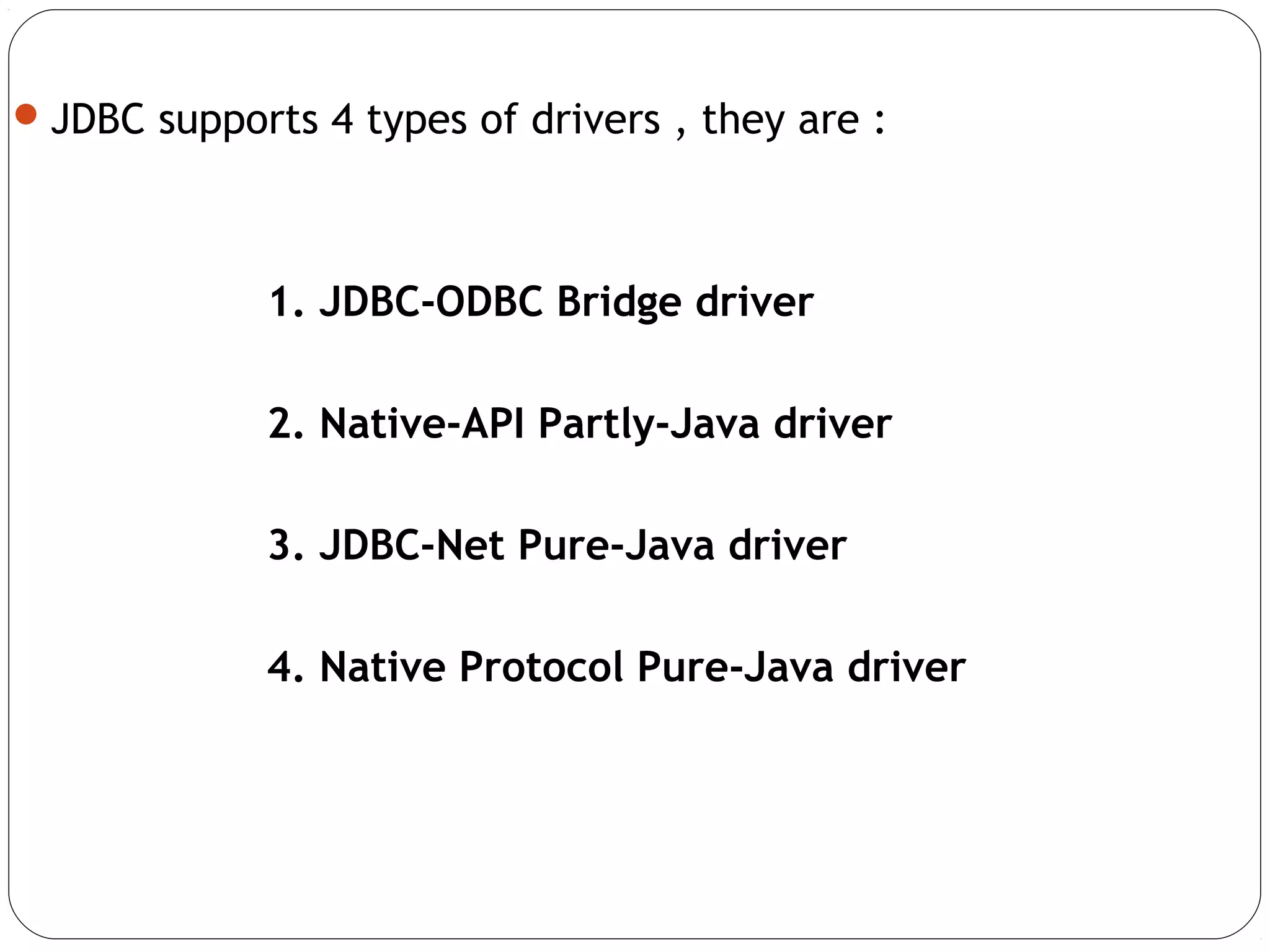
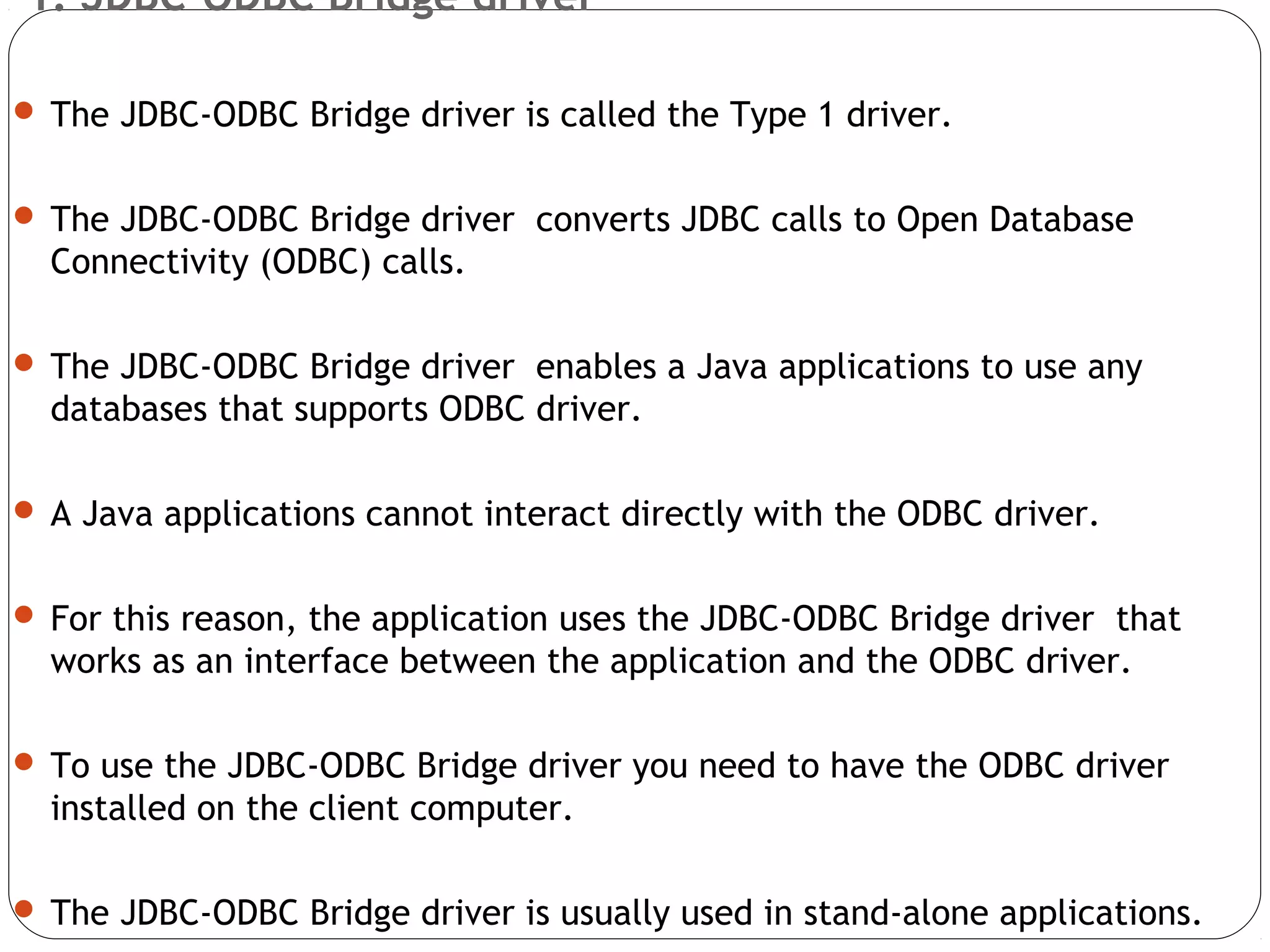
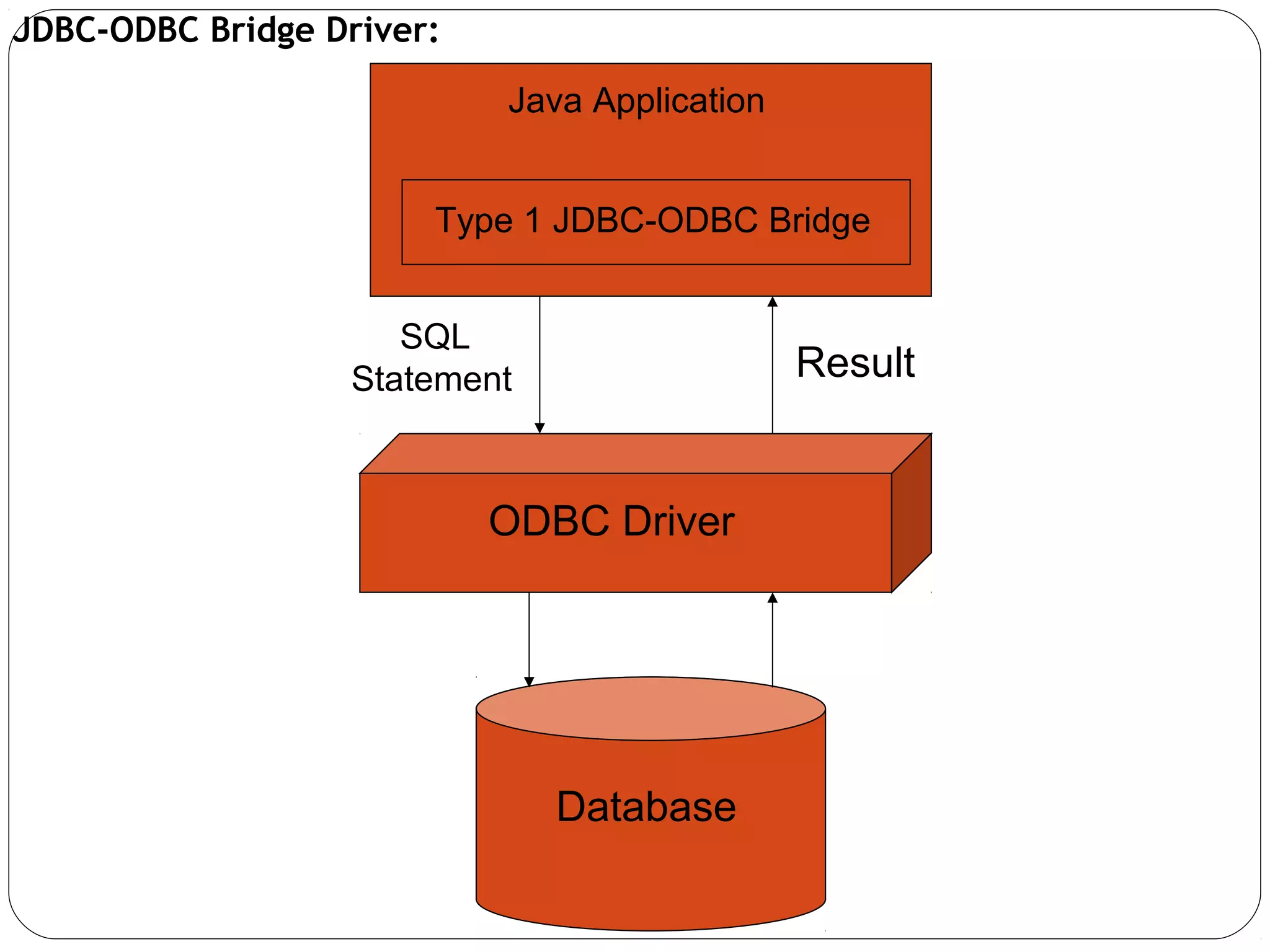
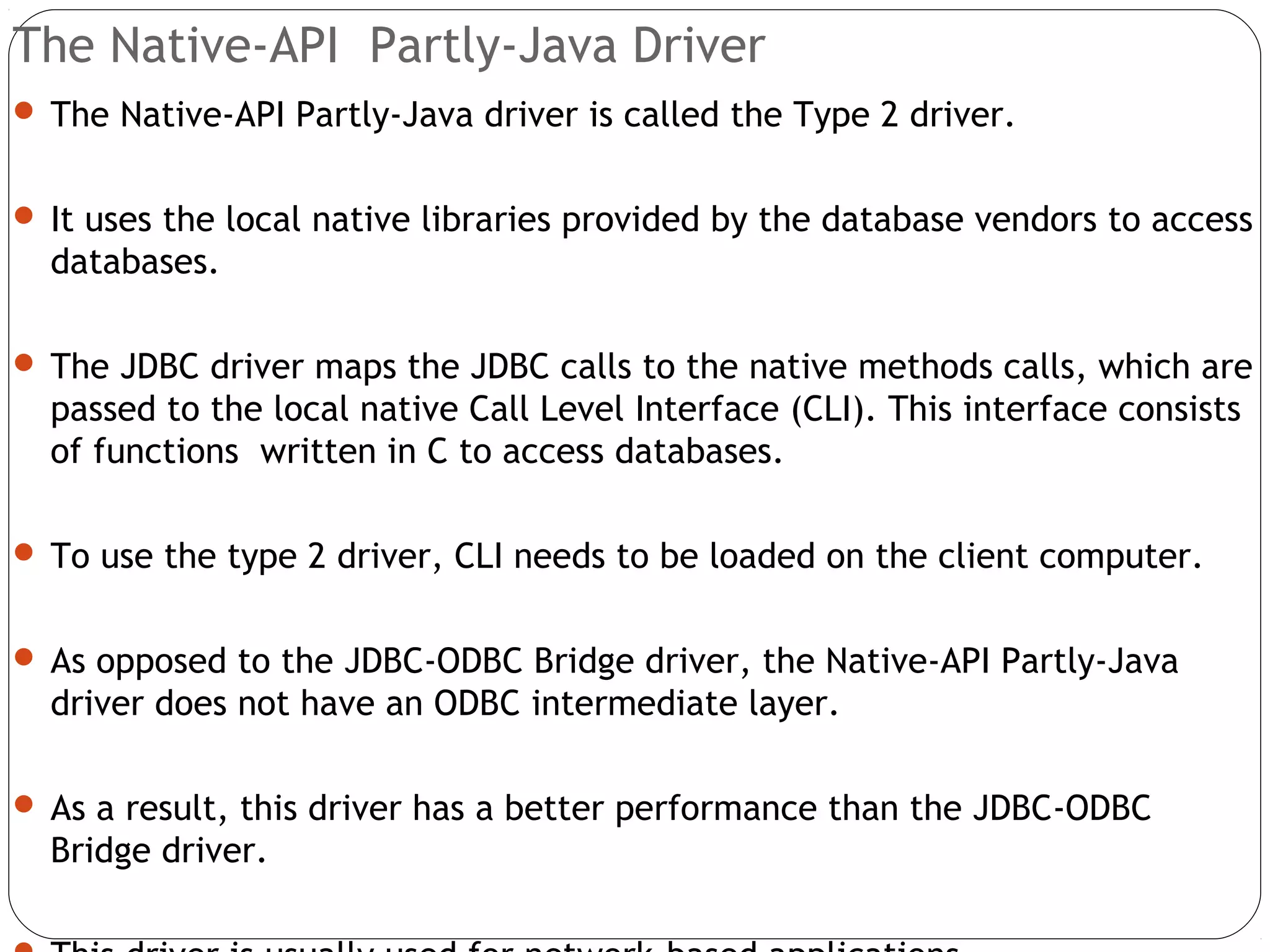
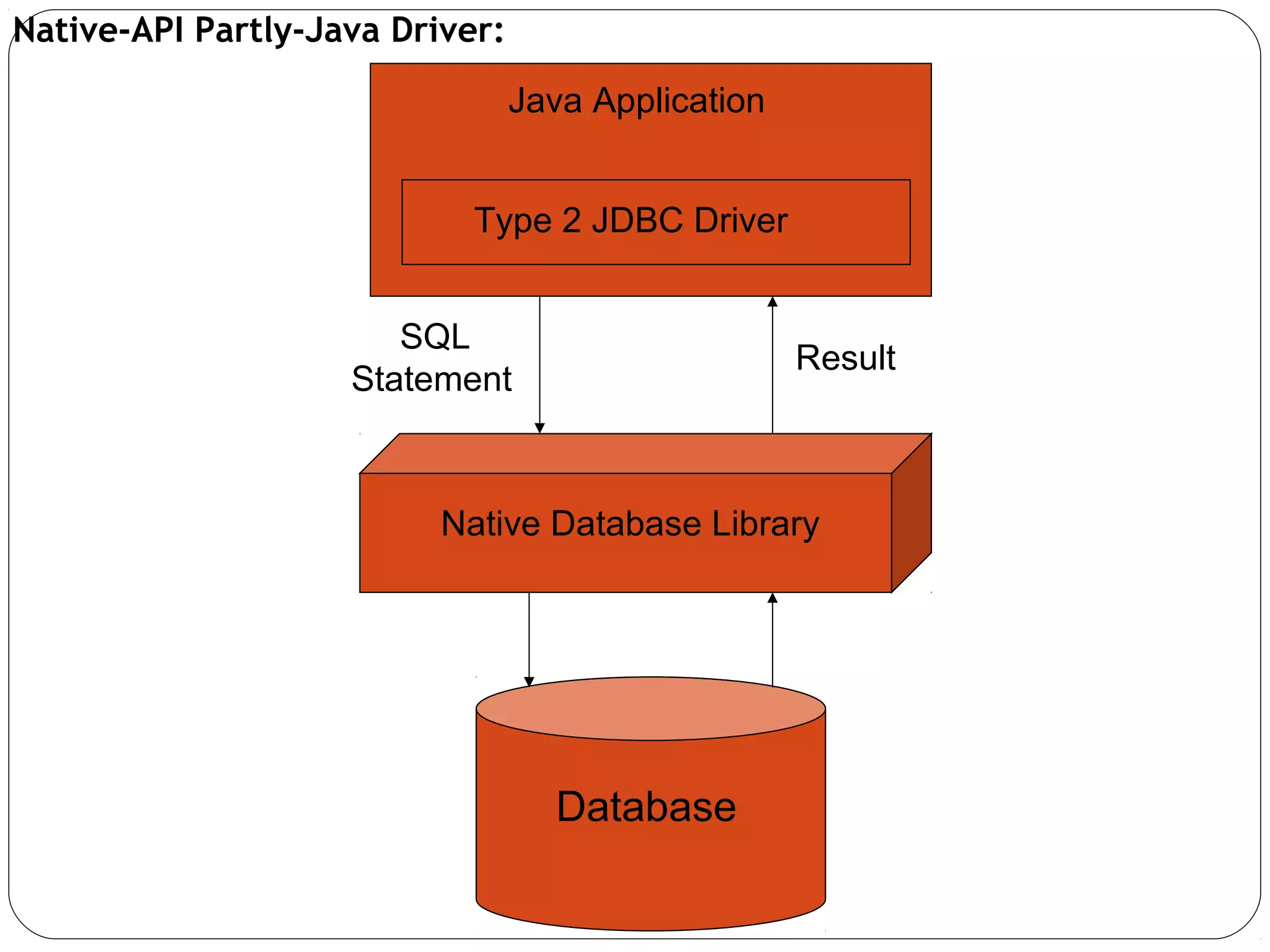
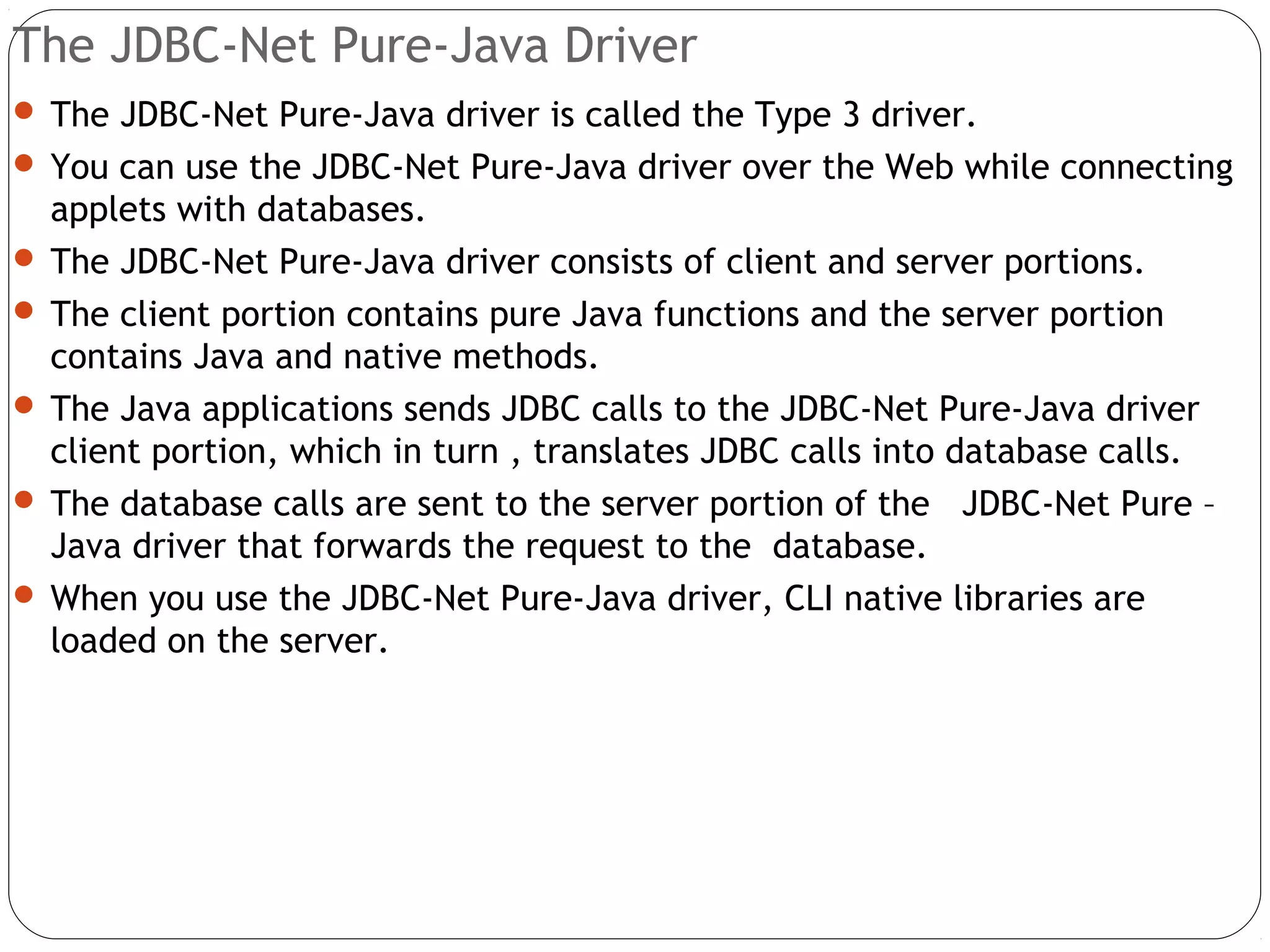
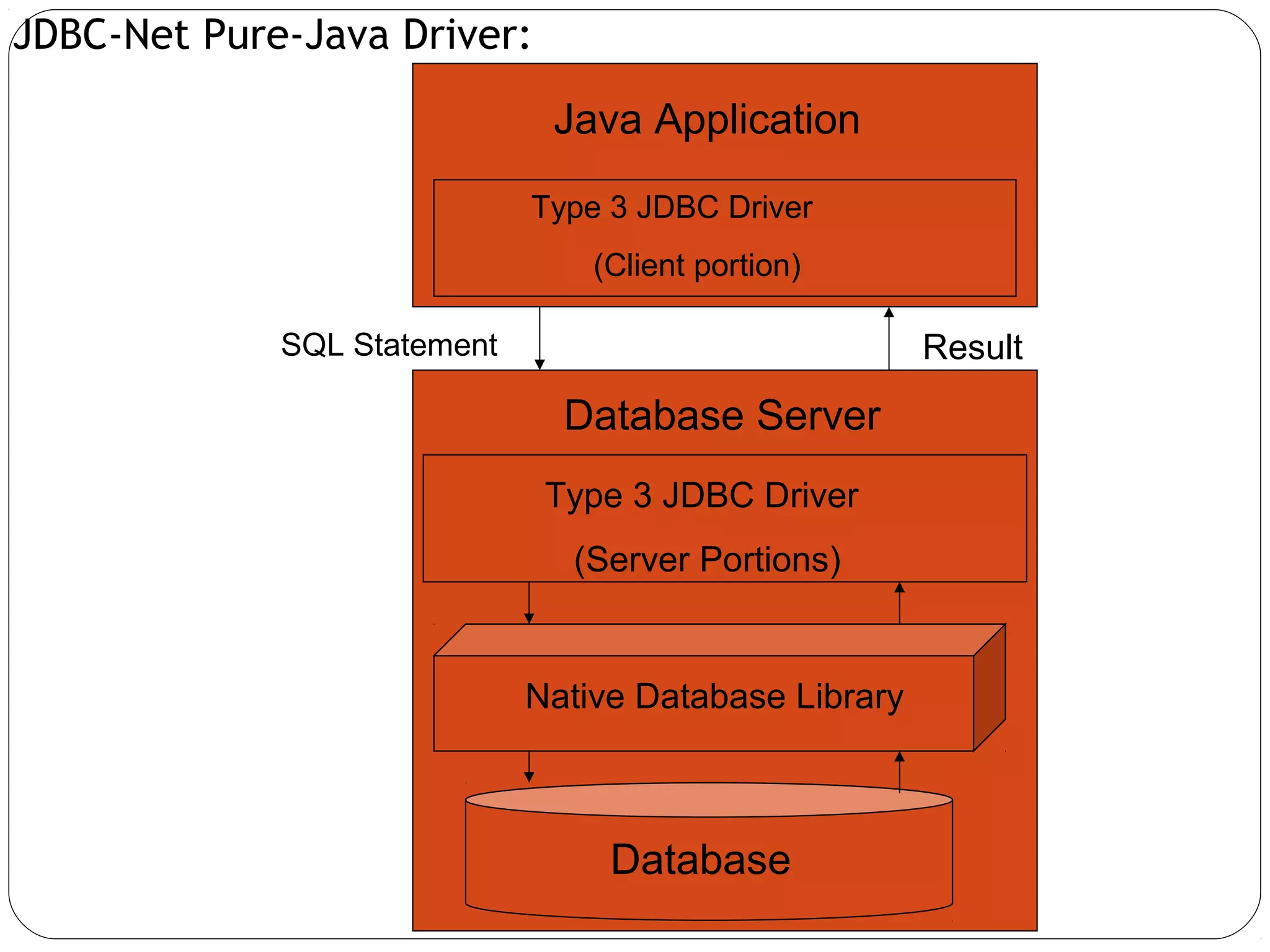
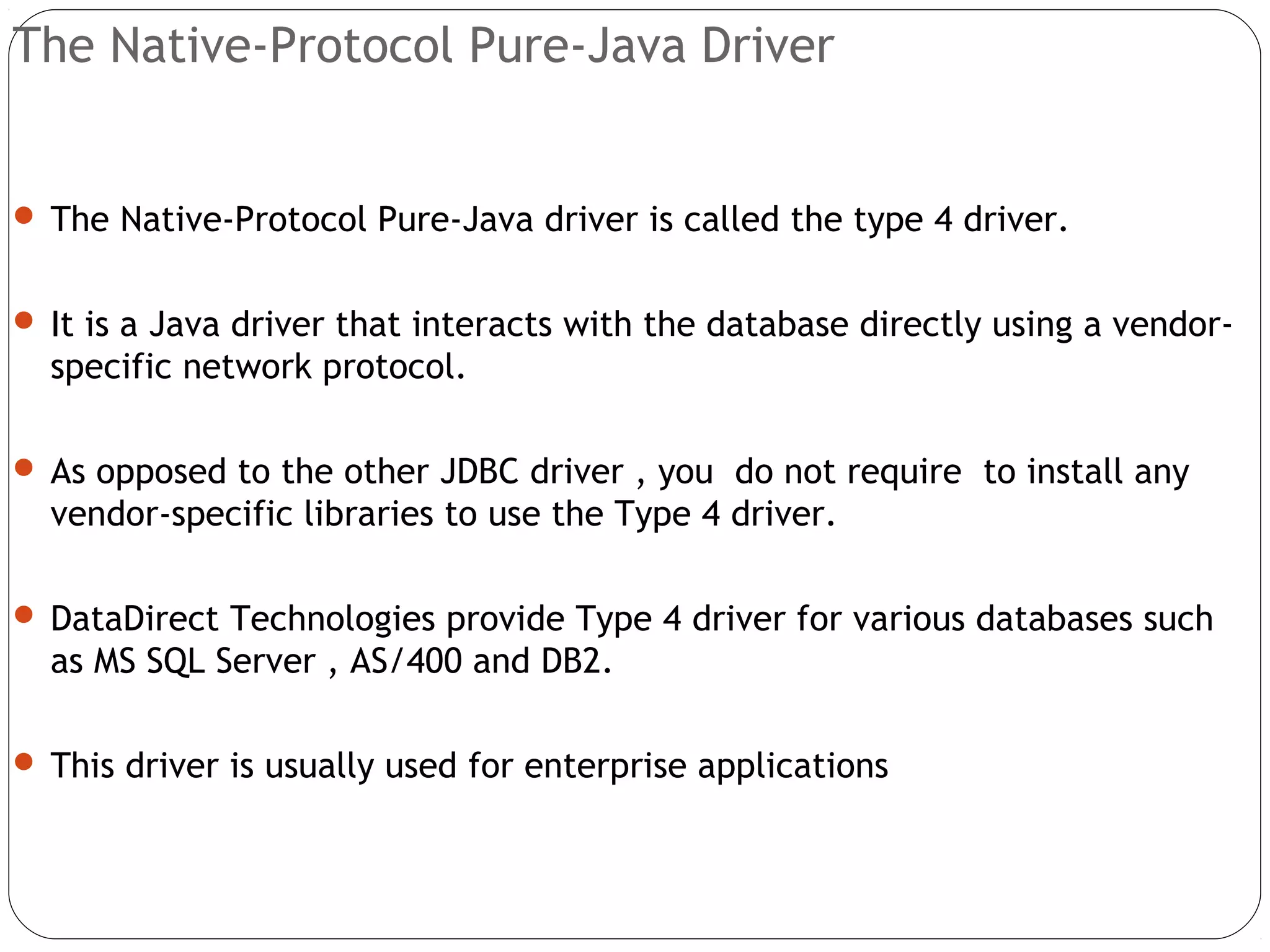
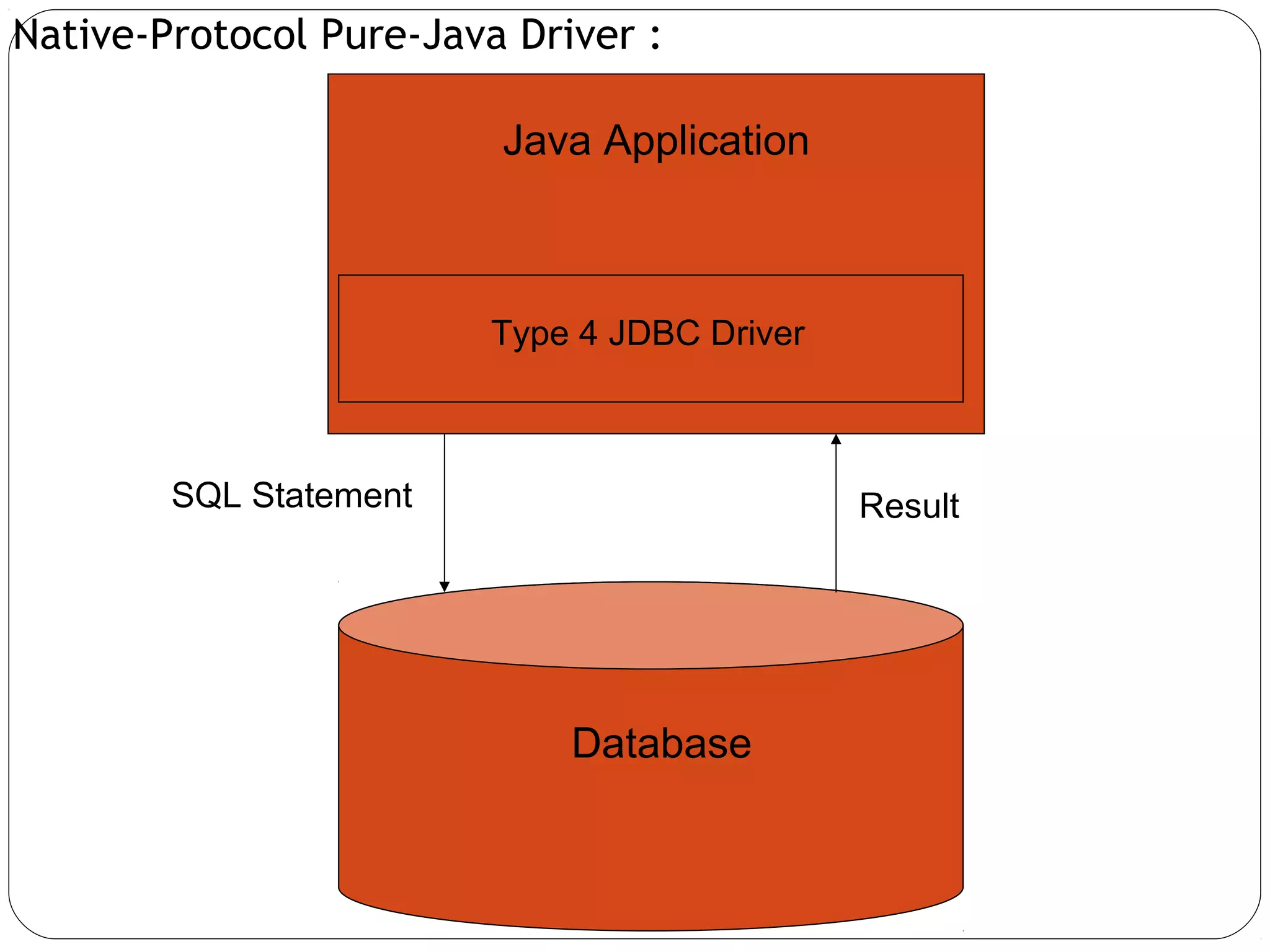
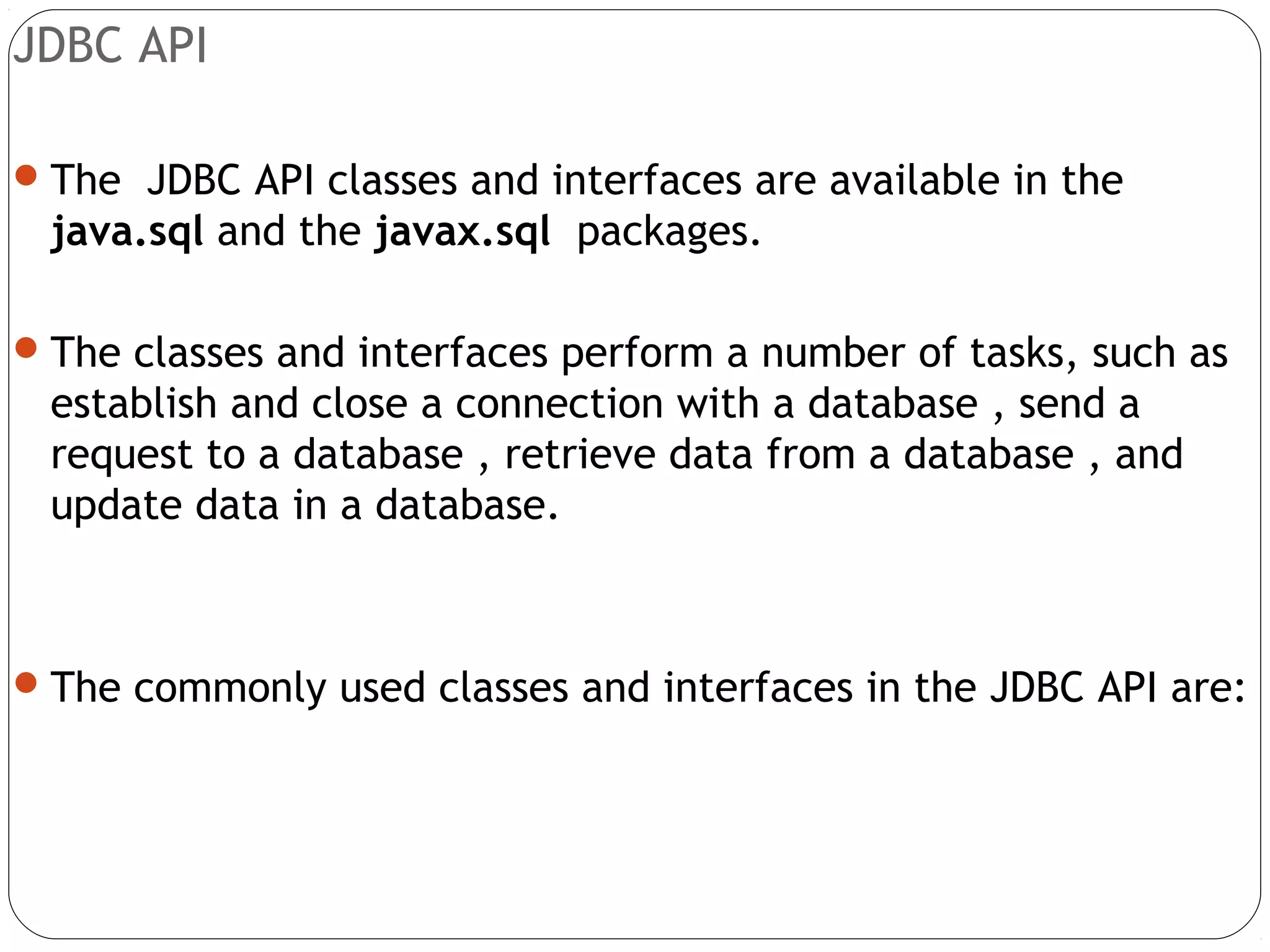
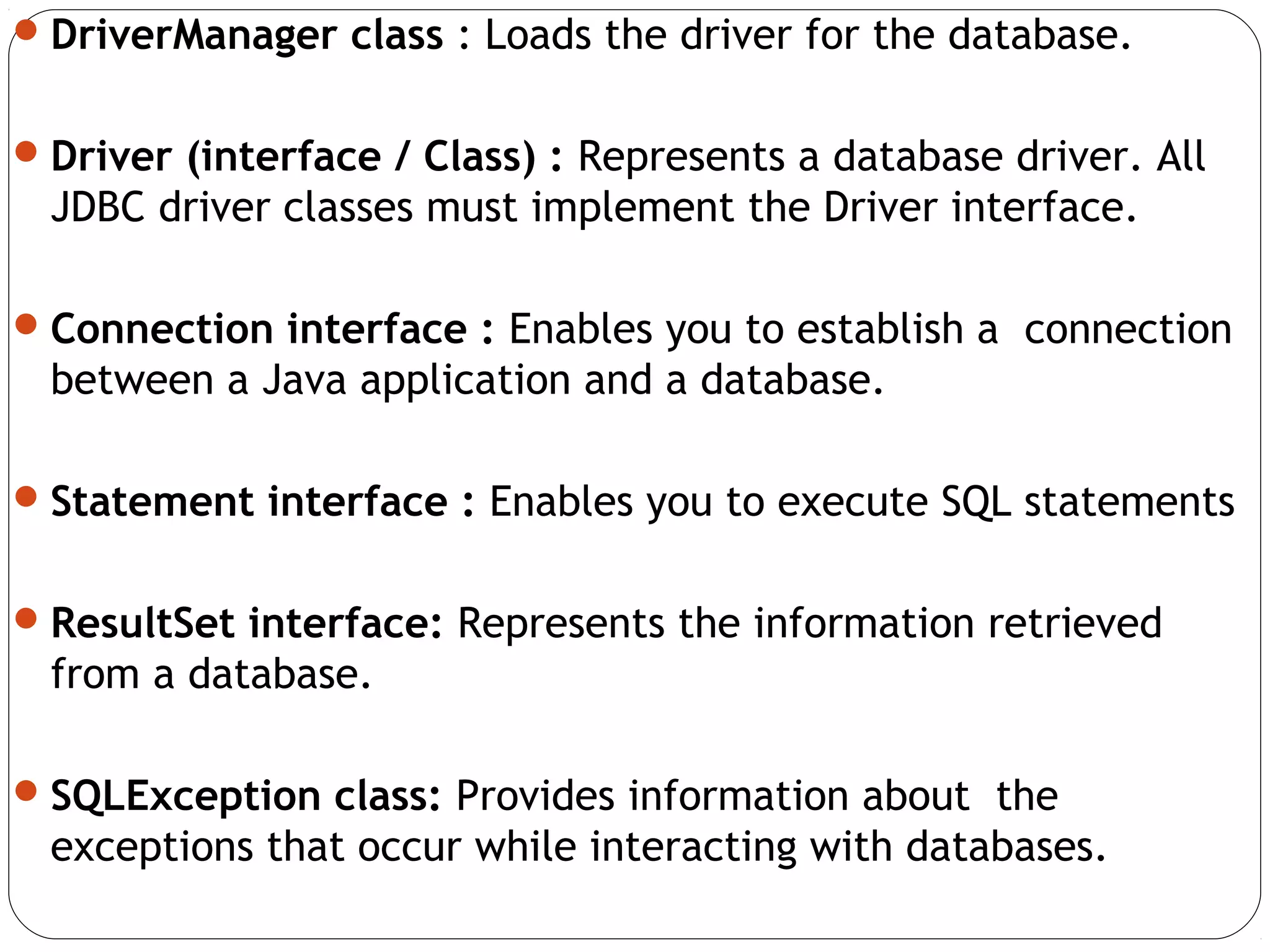

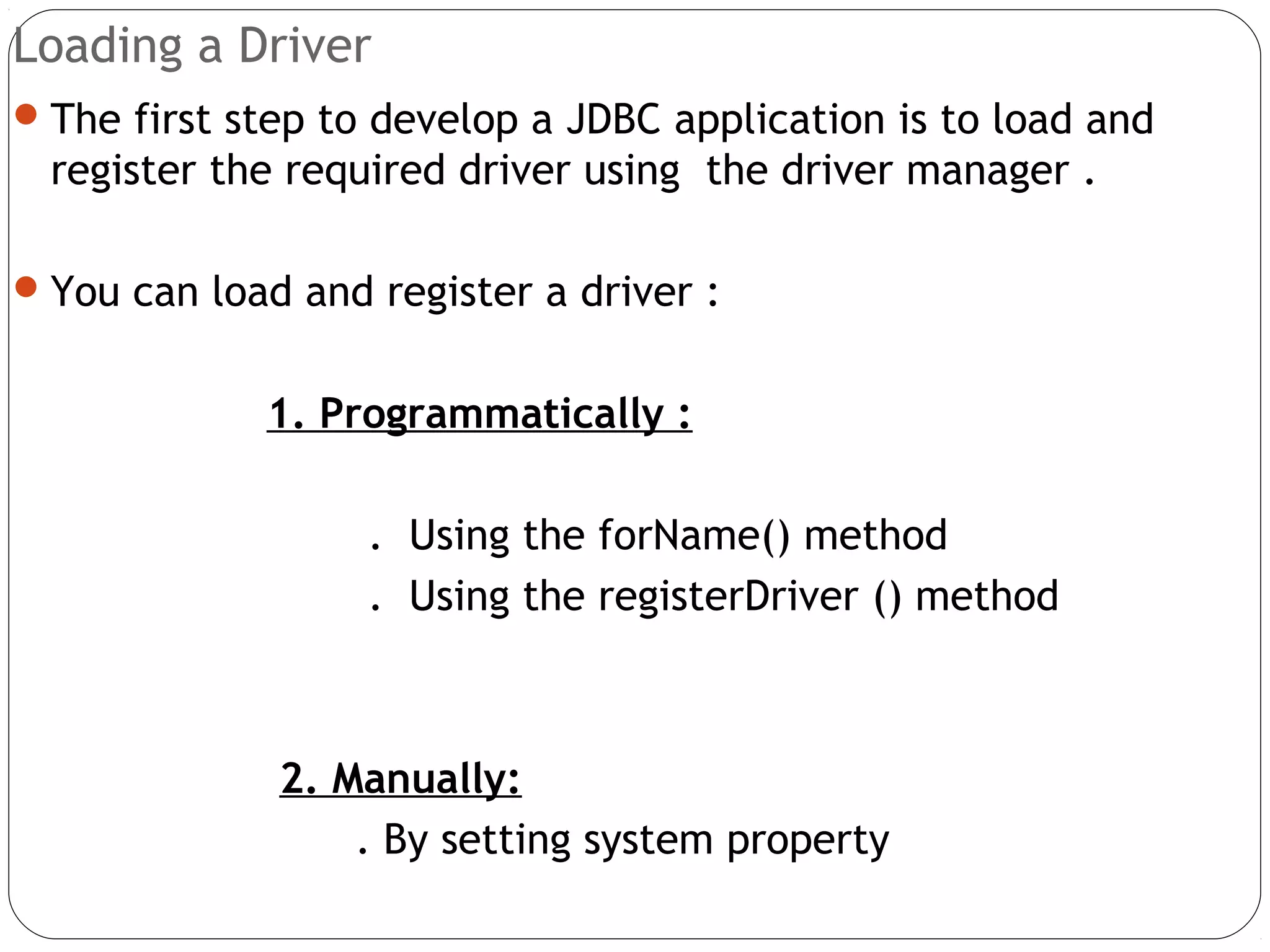
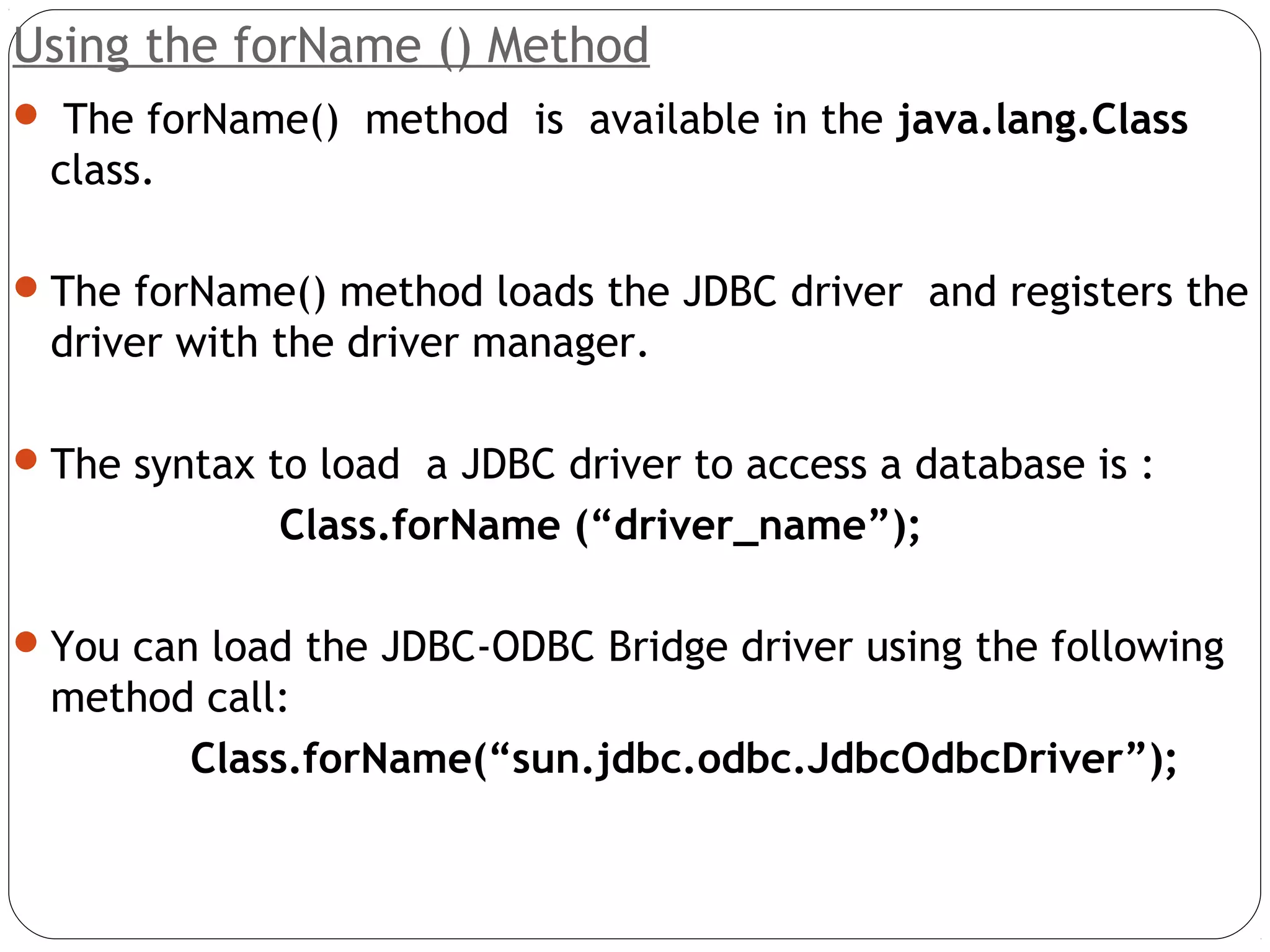
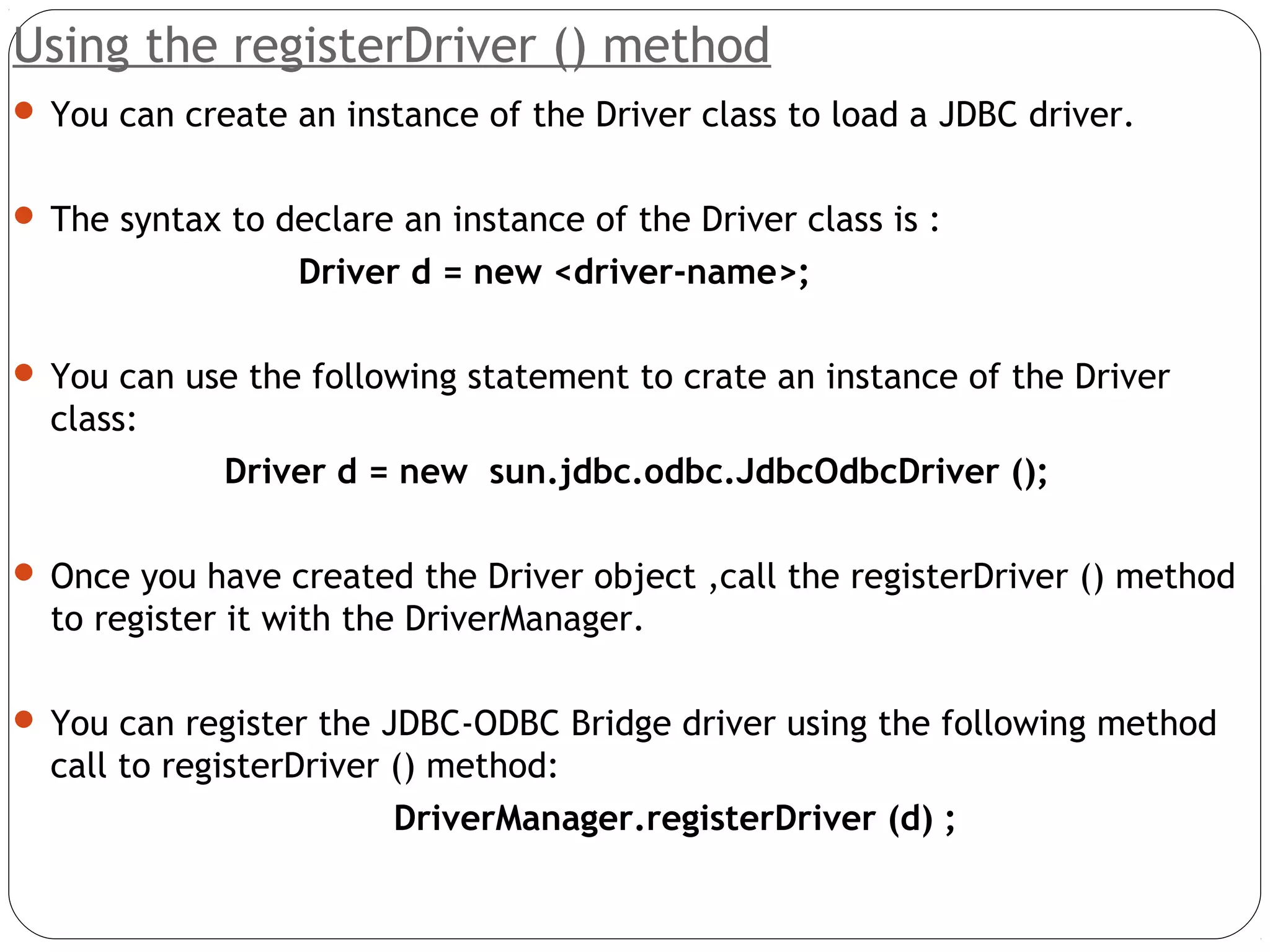
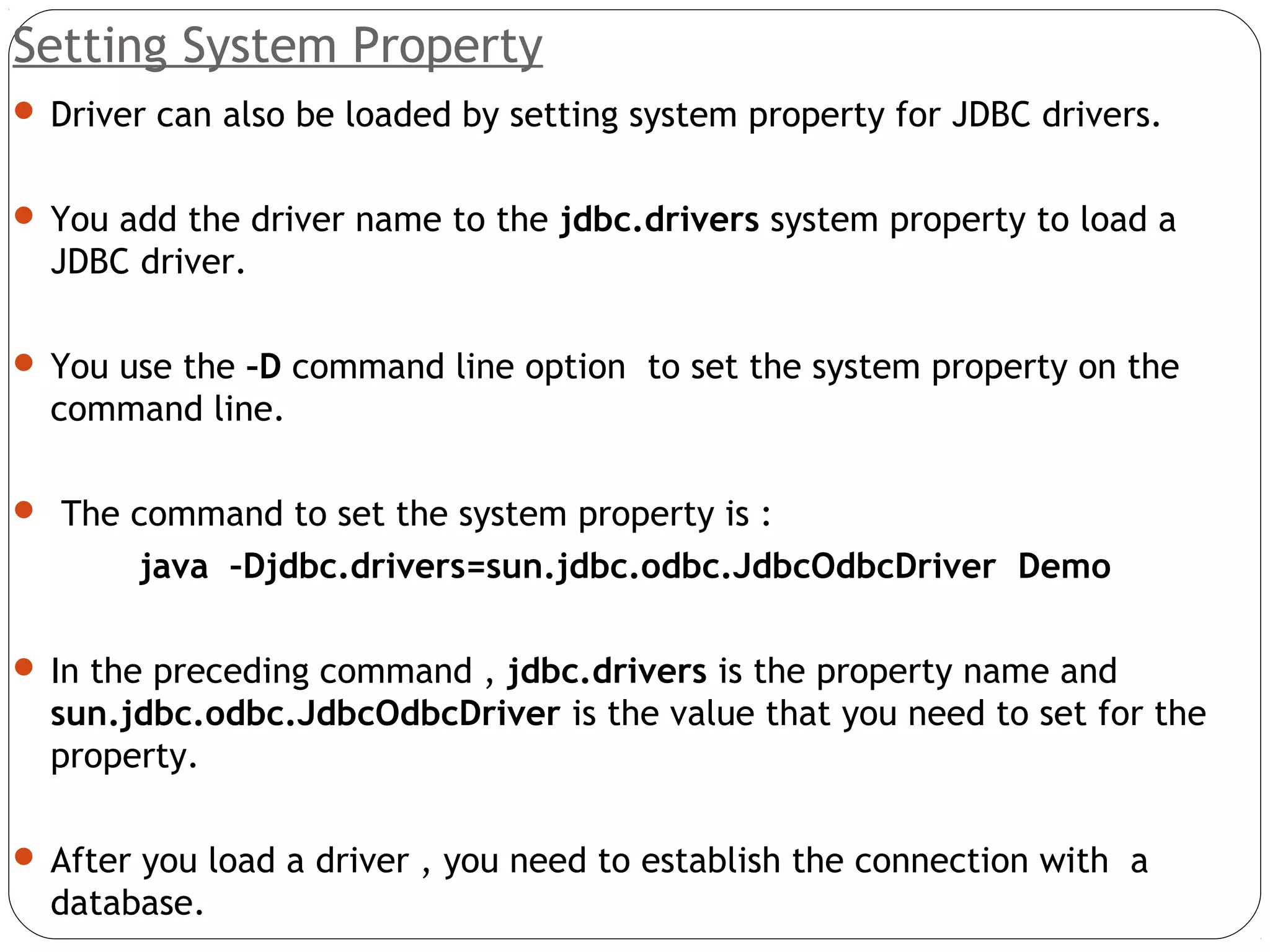
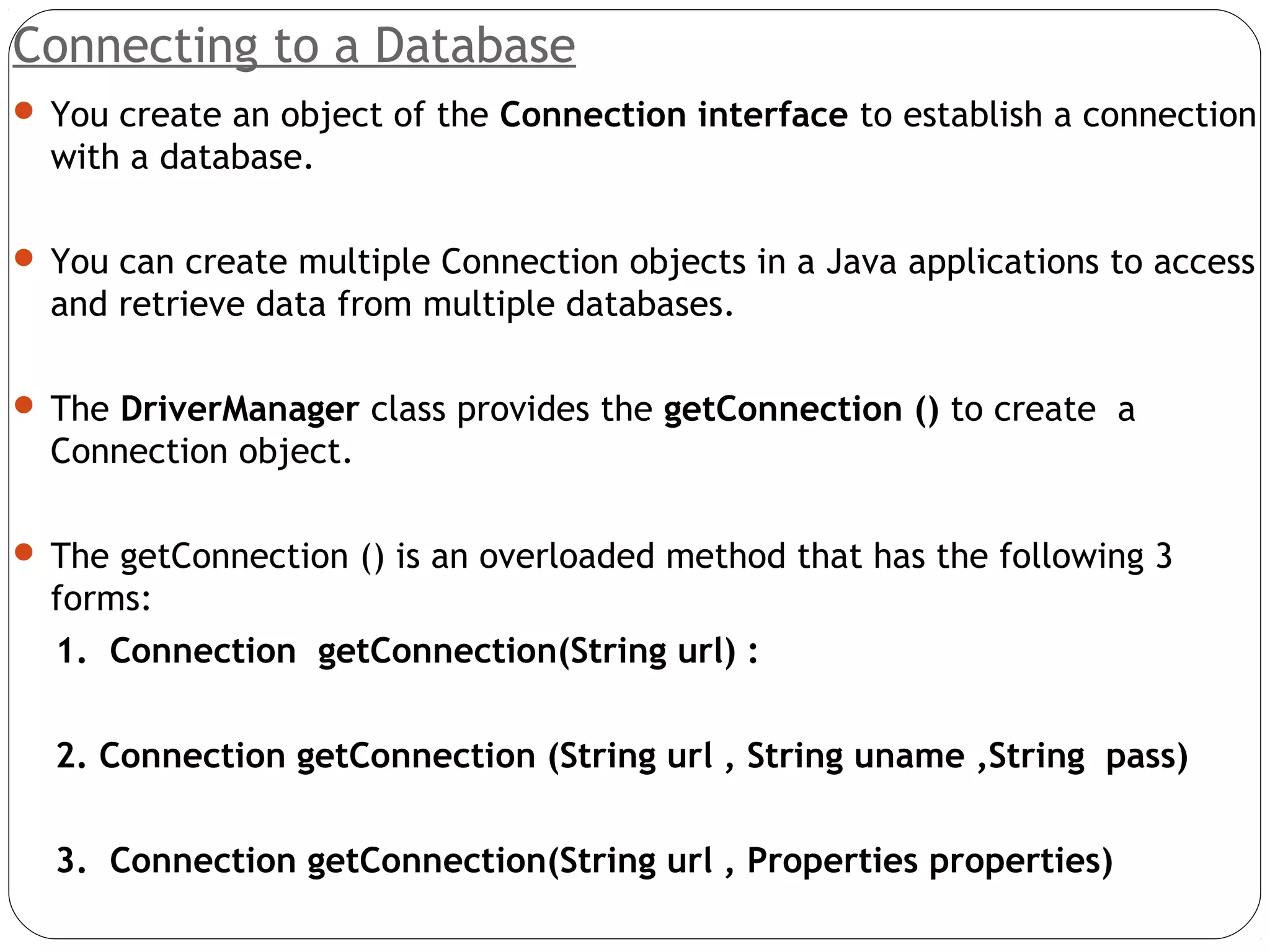
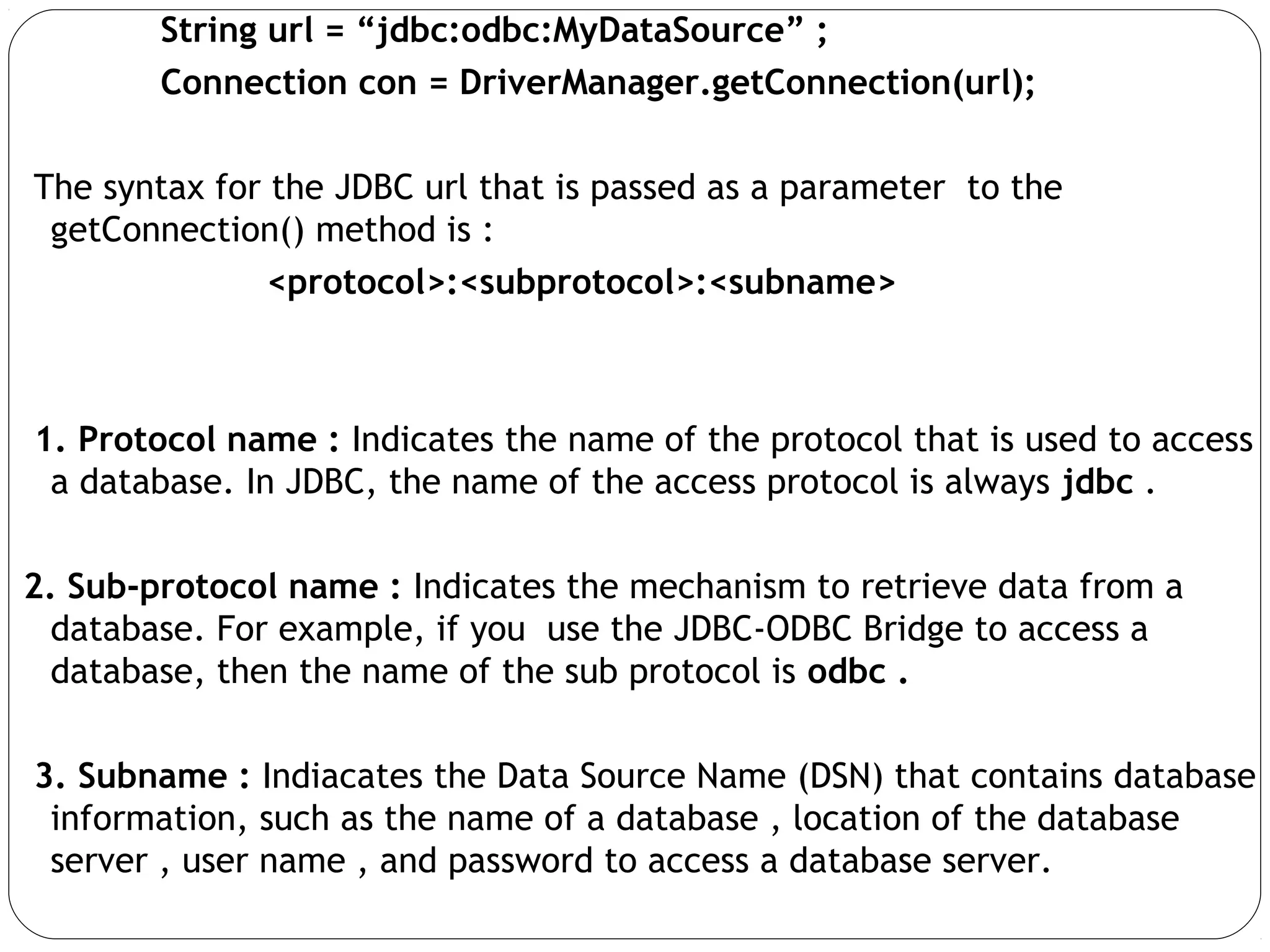



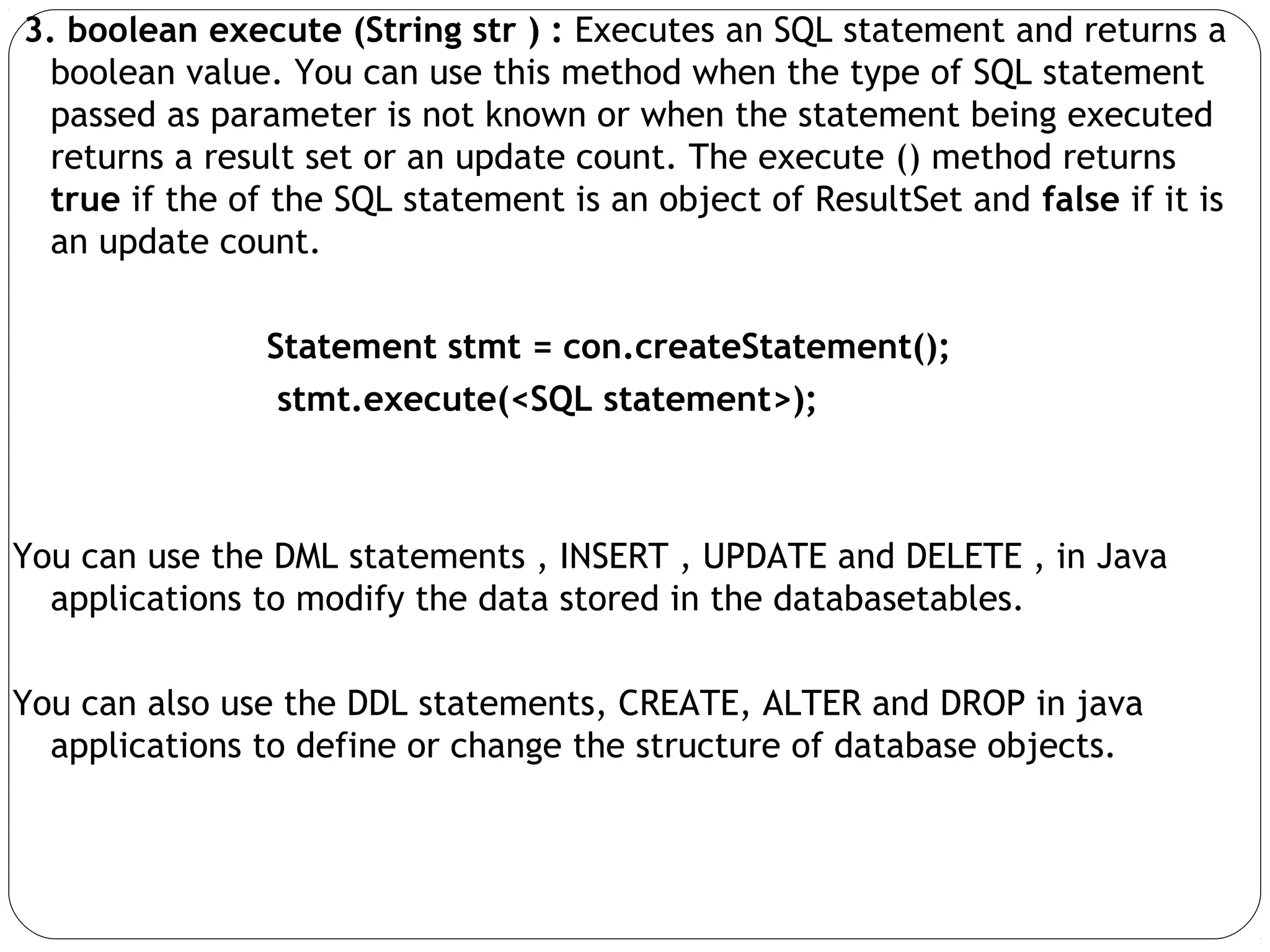



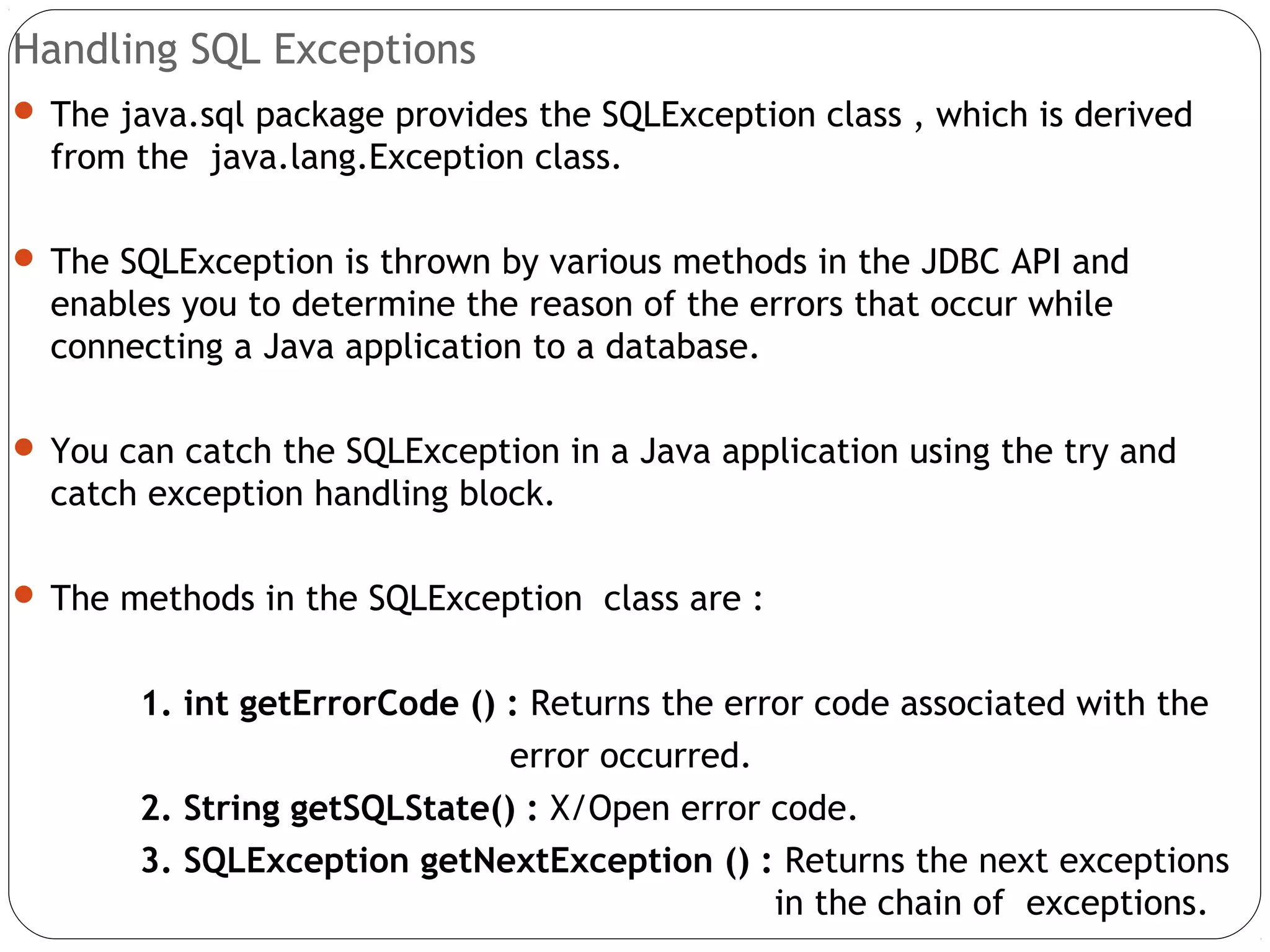


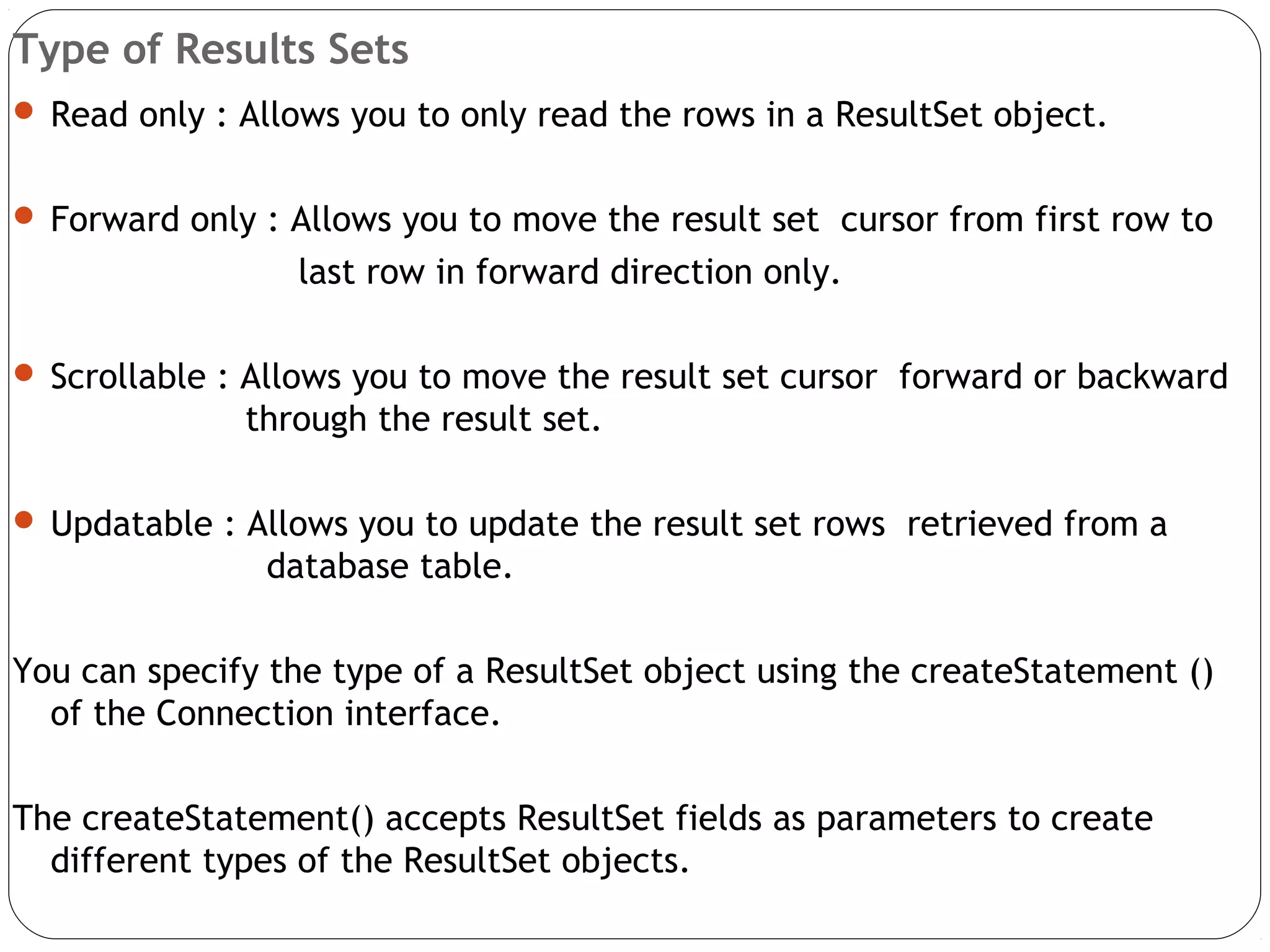


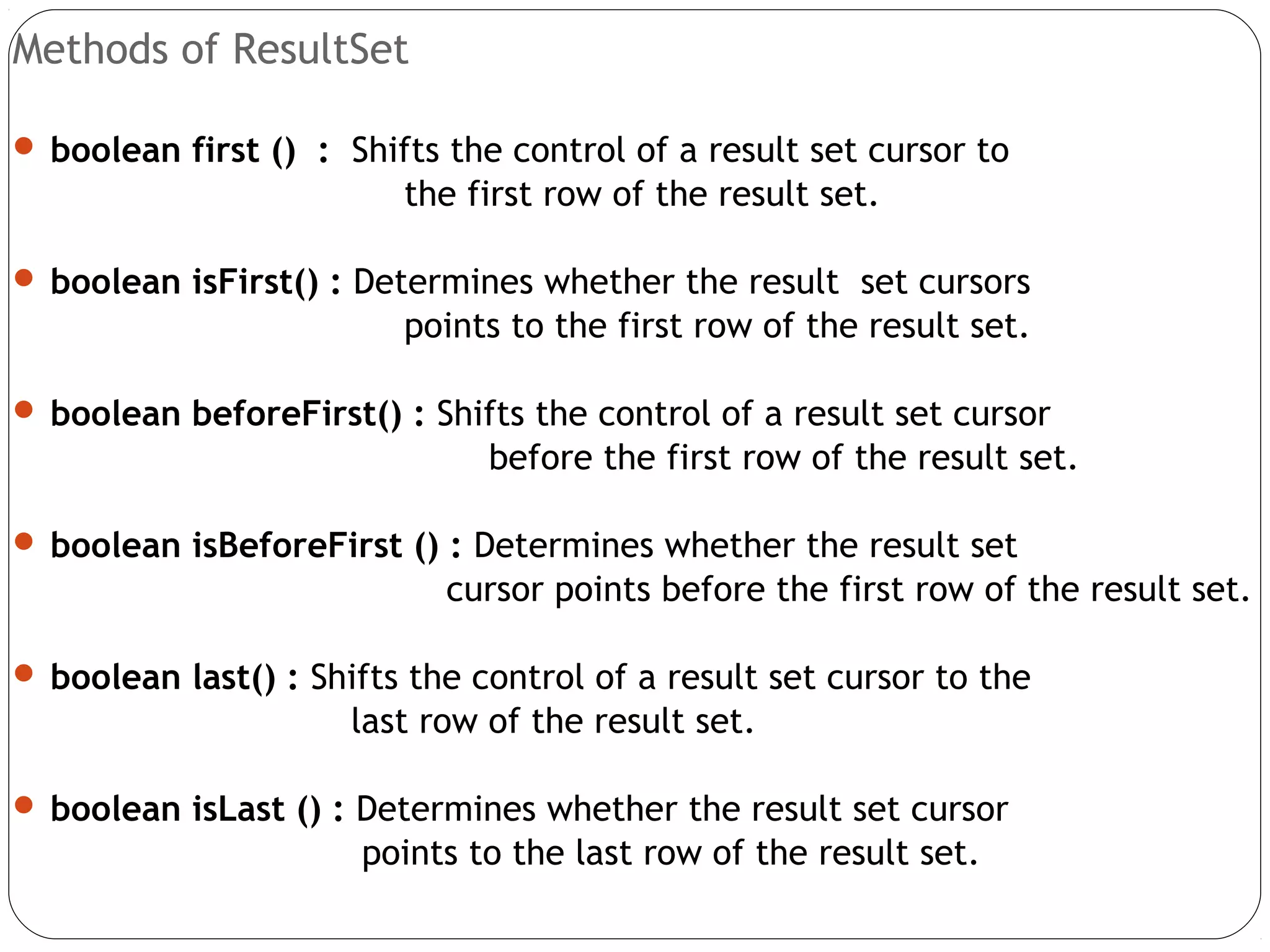
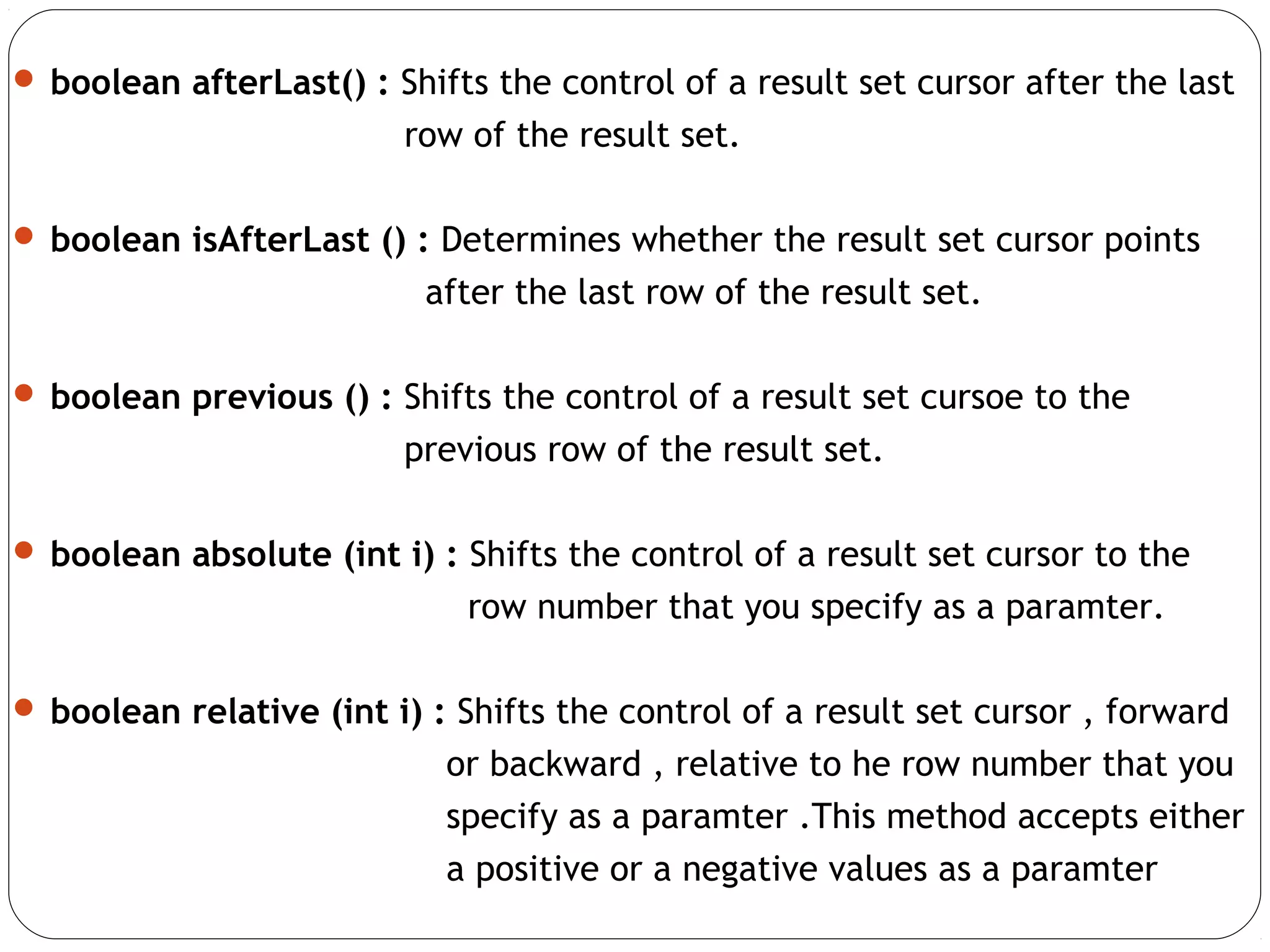
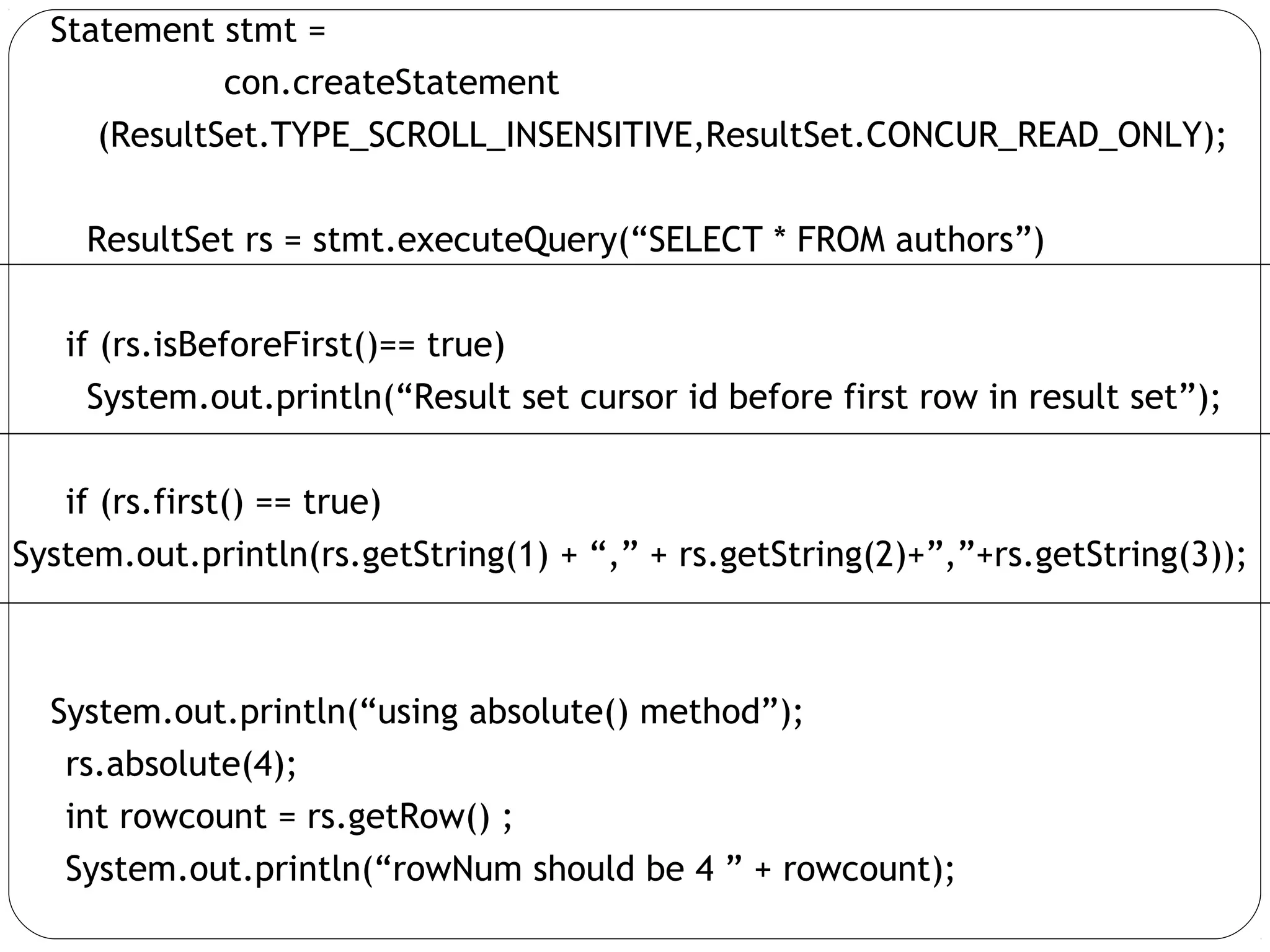
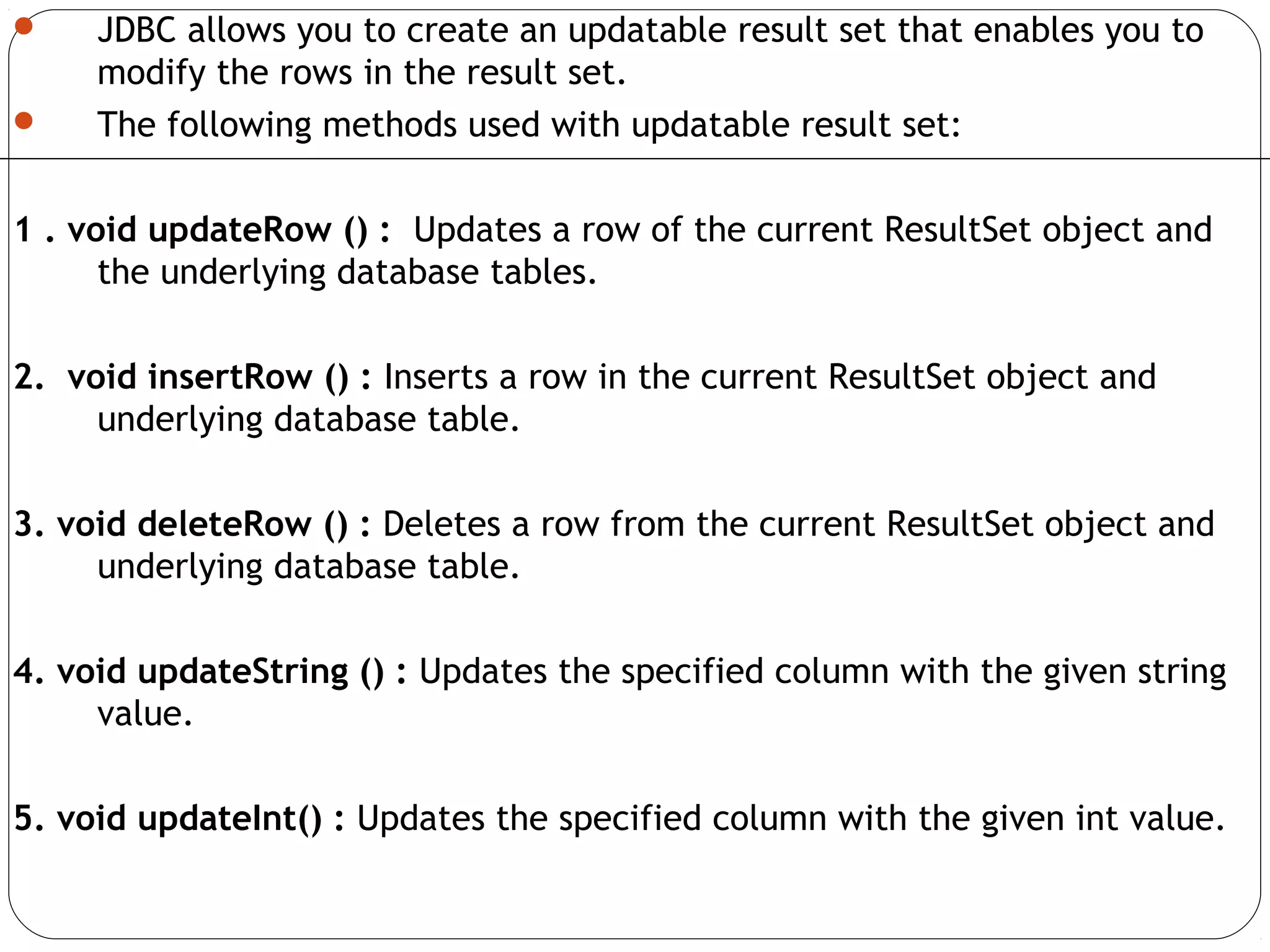
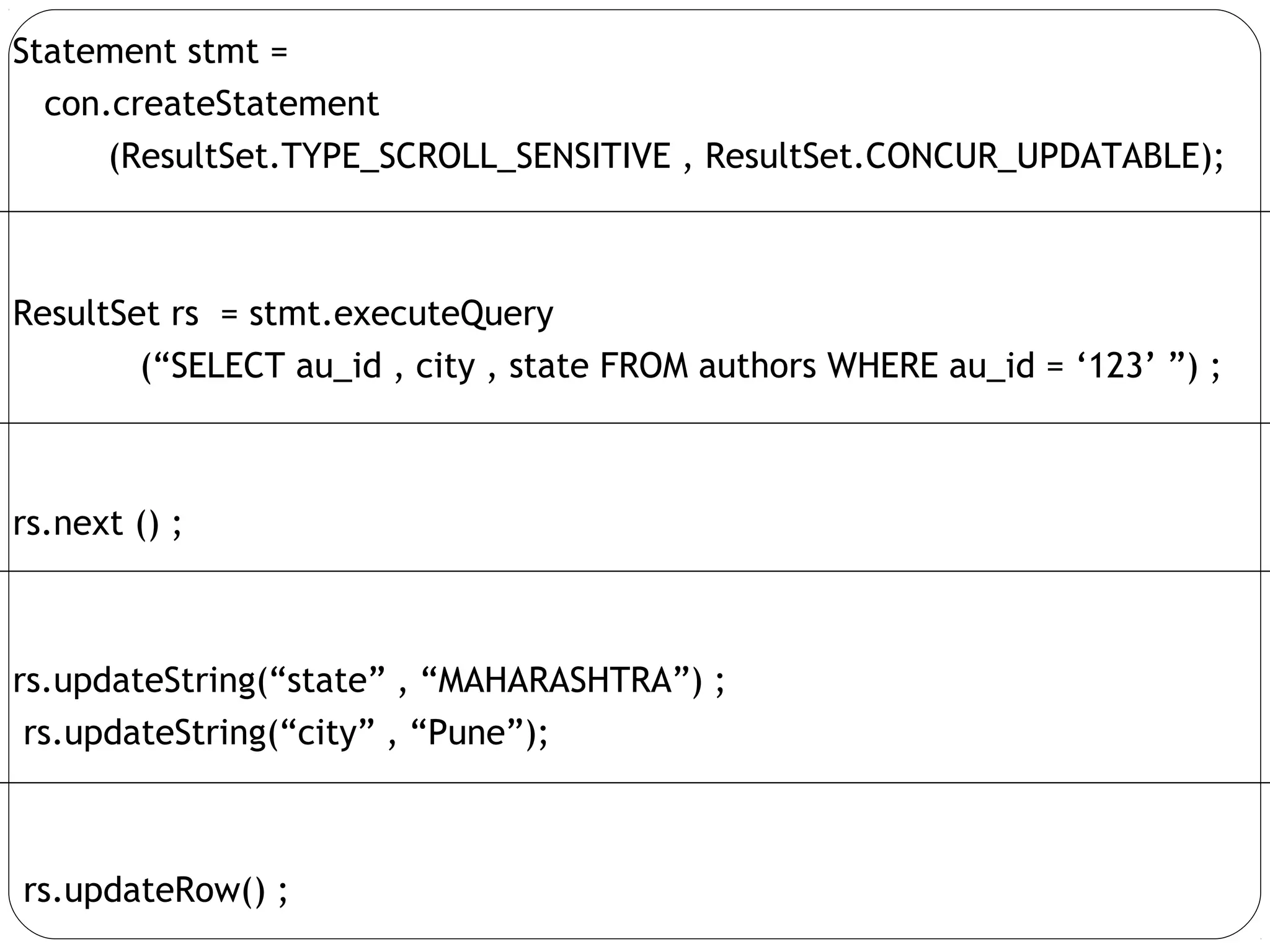
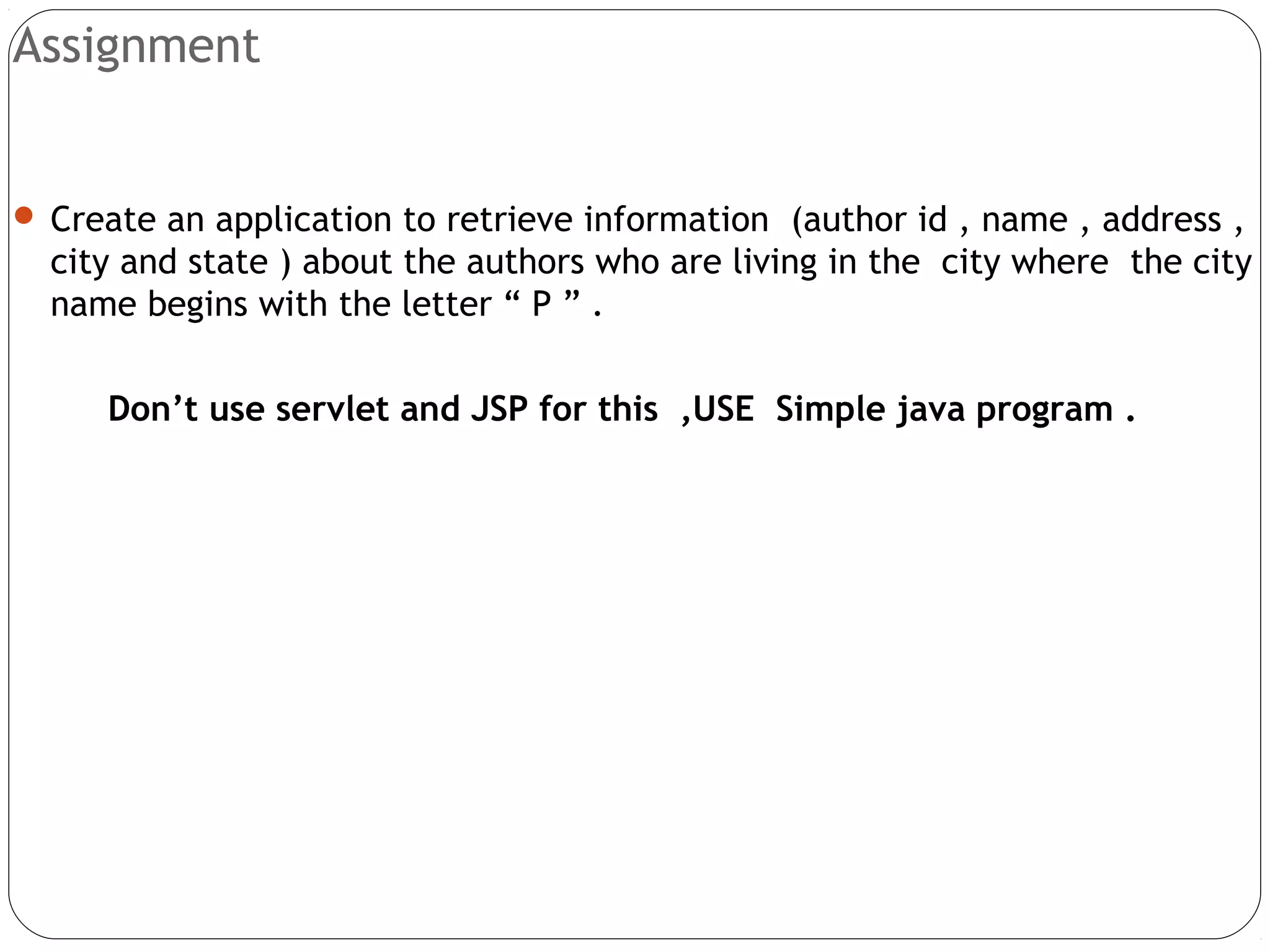
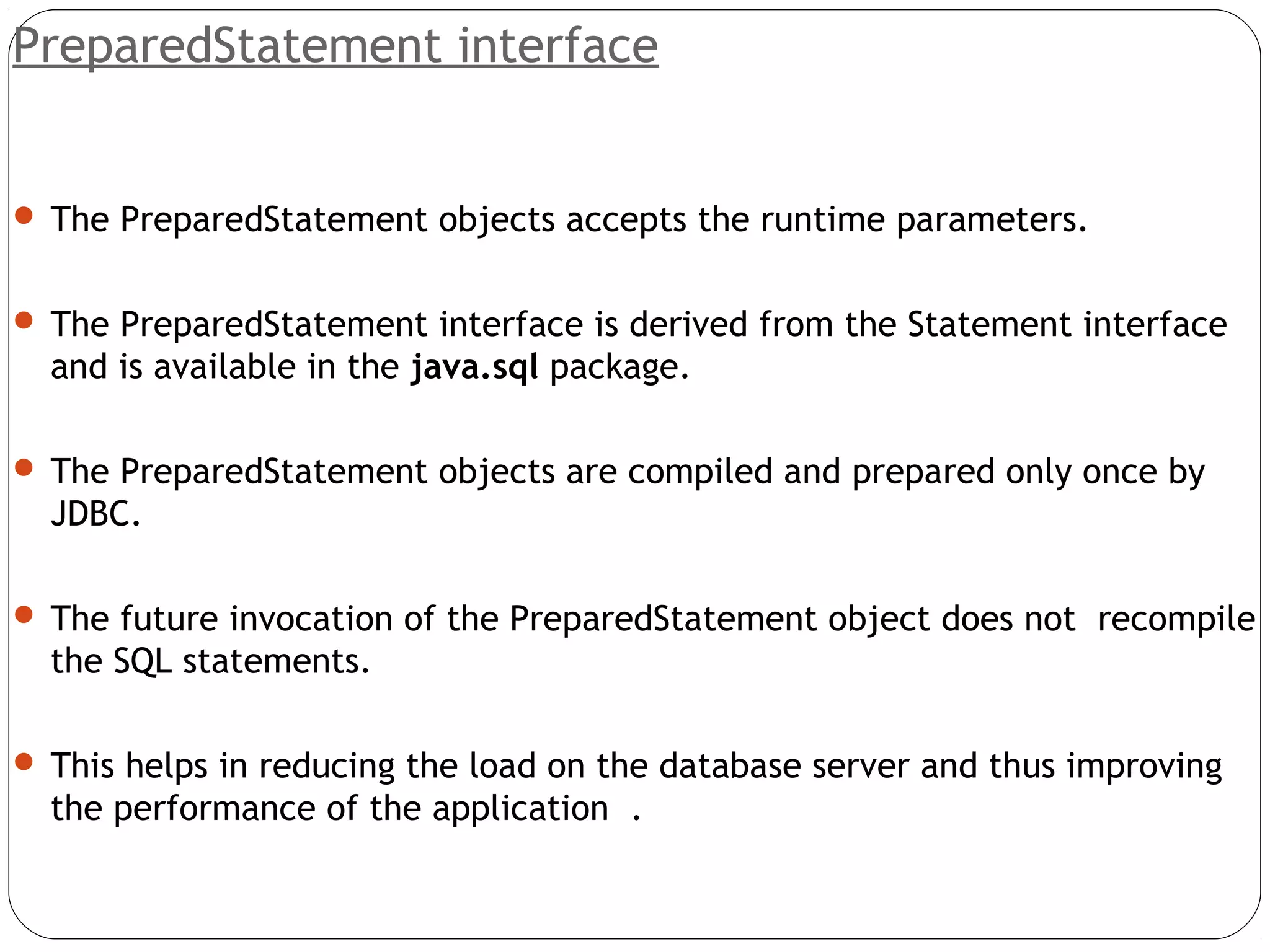
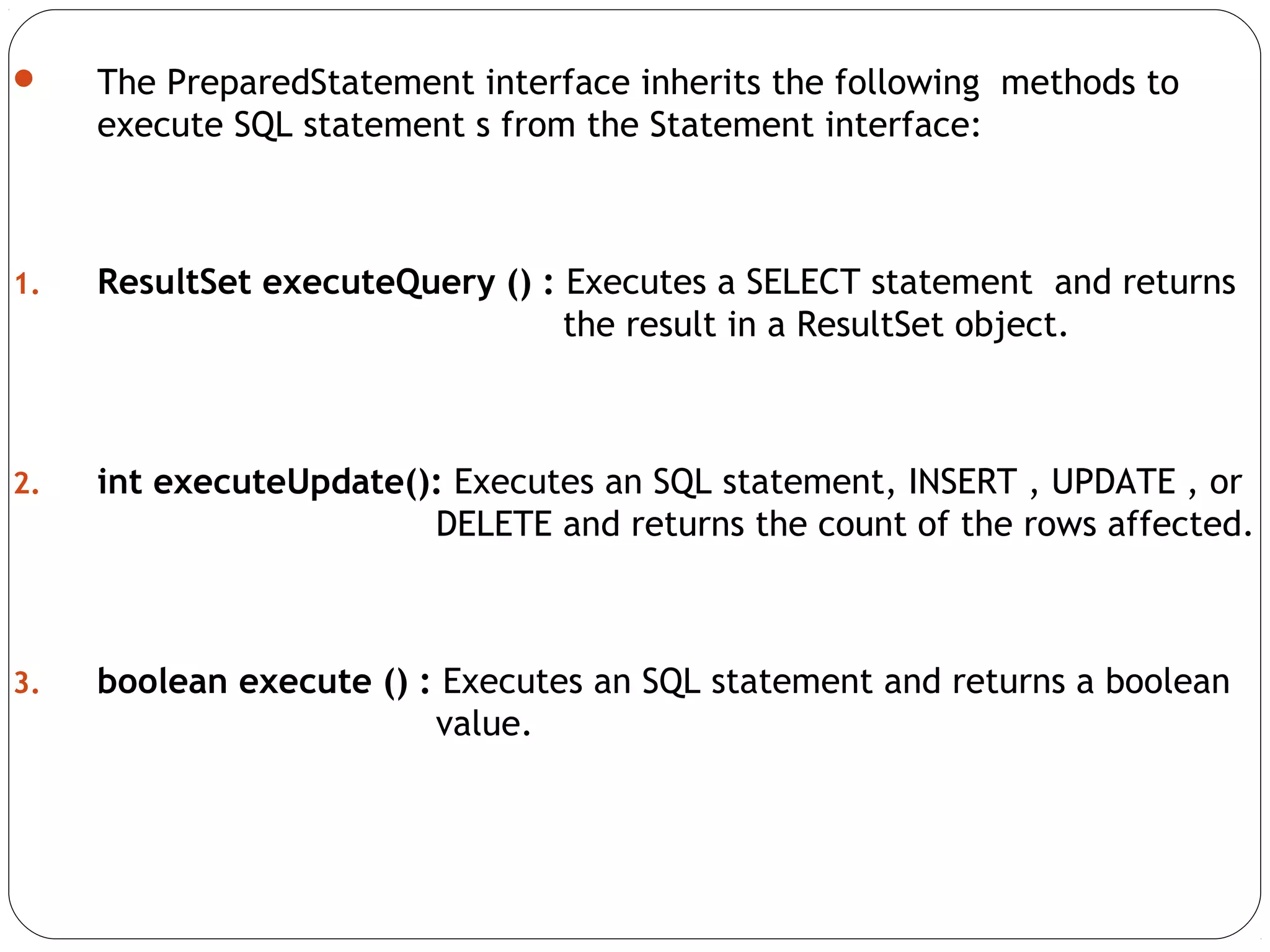
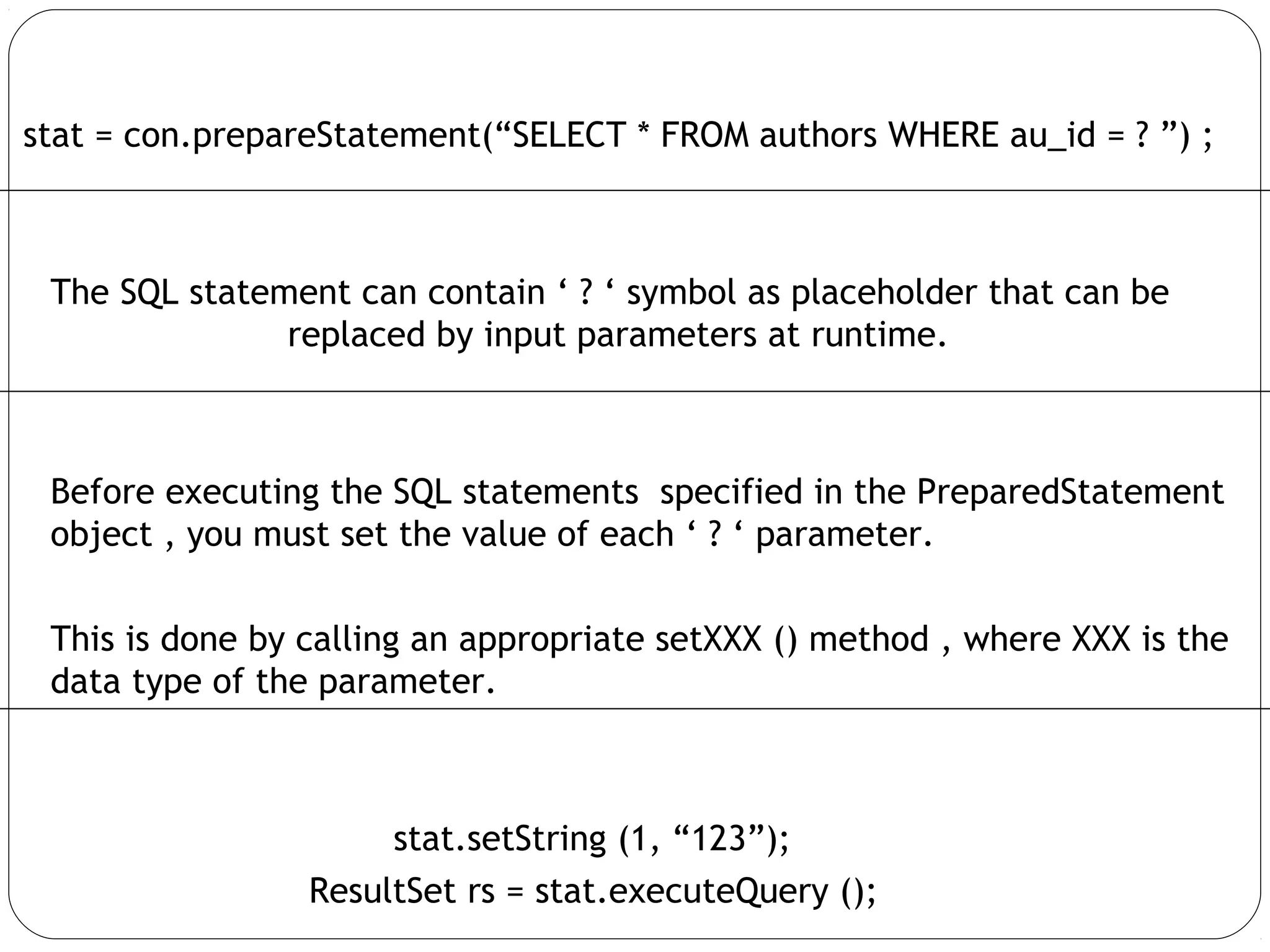
![ The PreparedStatement interface provides various methods to set the
value of the placeholders for the specific data types.
1. void setByte (int index , byte val) : Sets the java byte type value for
the parameter corresponding to index passed as a parameter.
2. void setBytes (int index , byte[] val) : Sets the Java byte type array
for the parameter corresponding to index passed as a parameter.
3. void setBoolean (int index , boolean val) : Sets the Java boolean type
value for the parameter corresponding to index passed as a parameter.
4. void setDouble (int index, double val) : Sets the Java double type
value value for the parameter corresponding to the index passed as a
parameter.](https://image.slidesharecdn.com/jdbcppt-150211014728-conversion-gate01/75/Jdbc-ppt-47-2048.jpg)
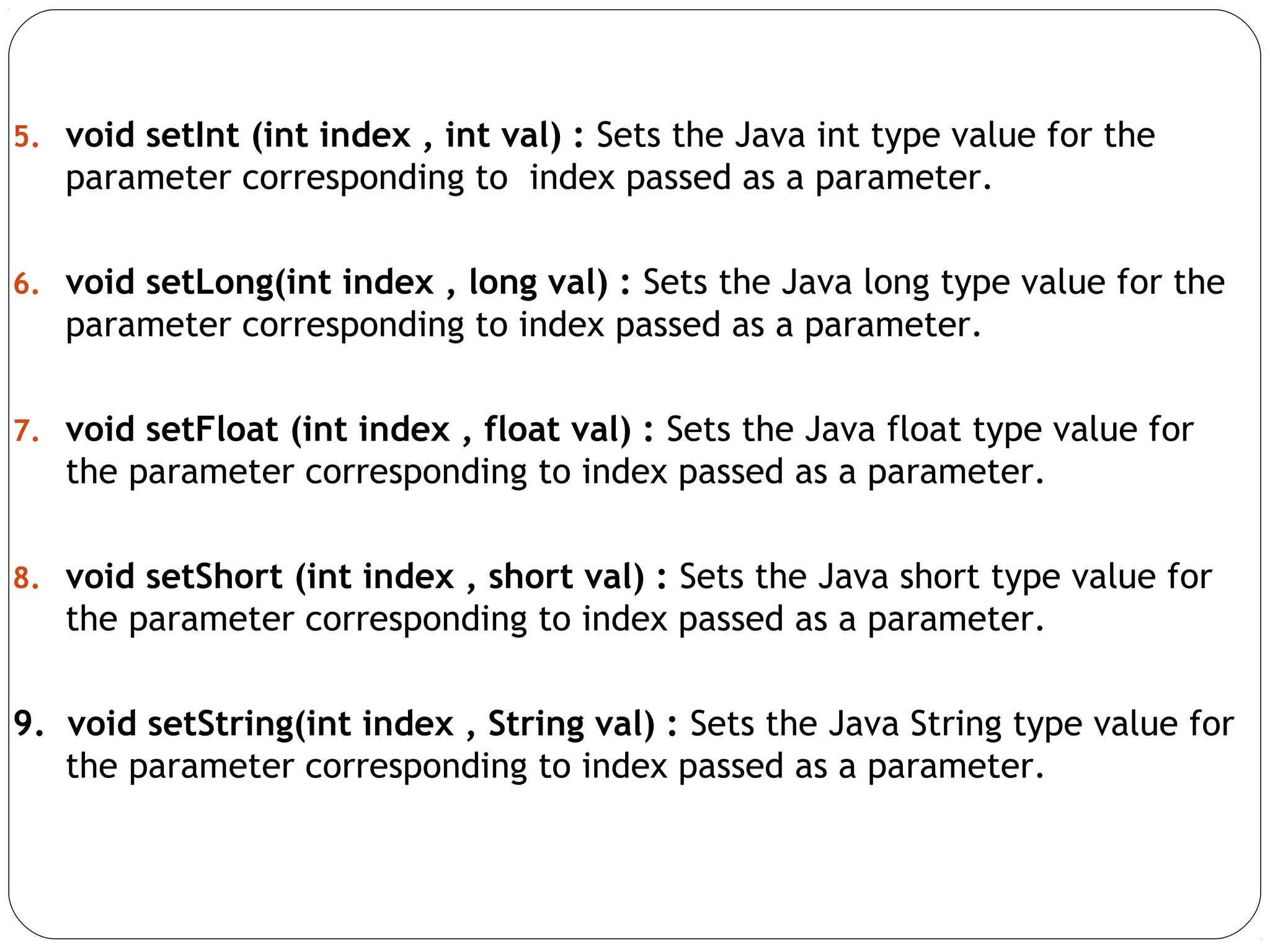
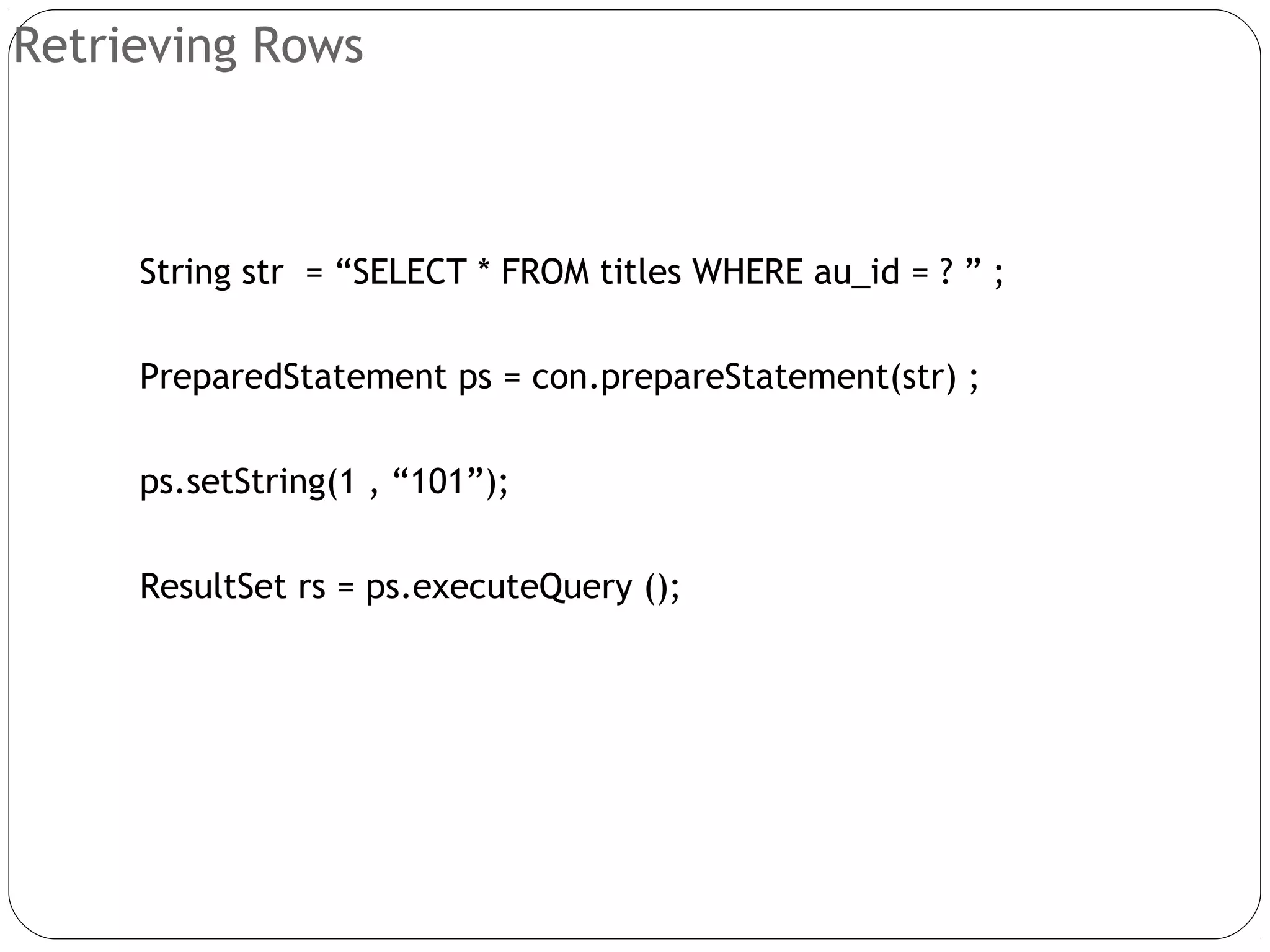
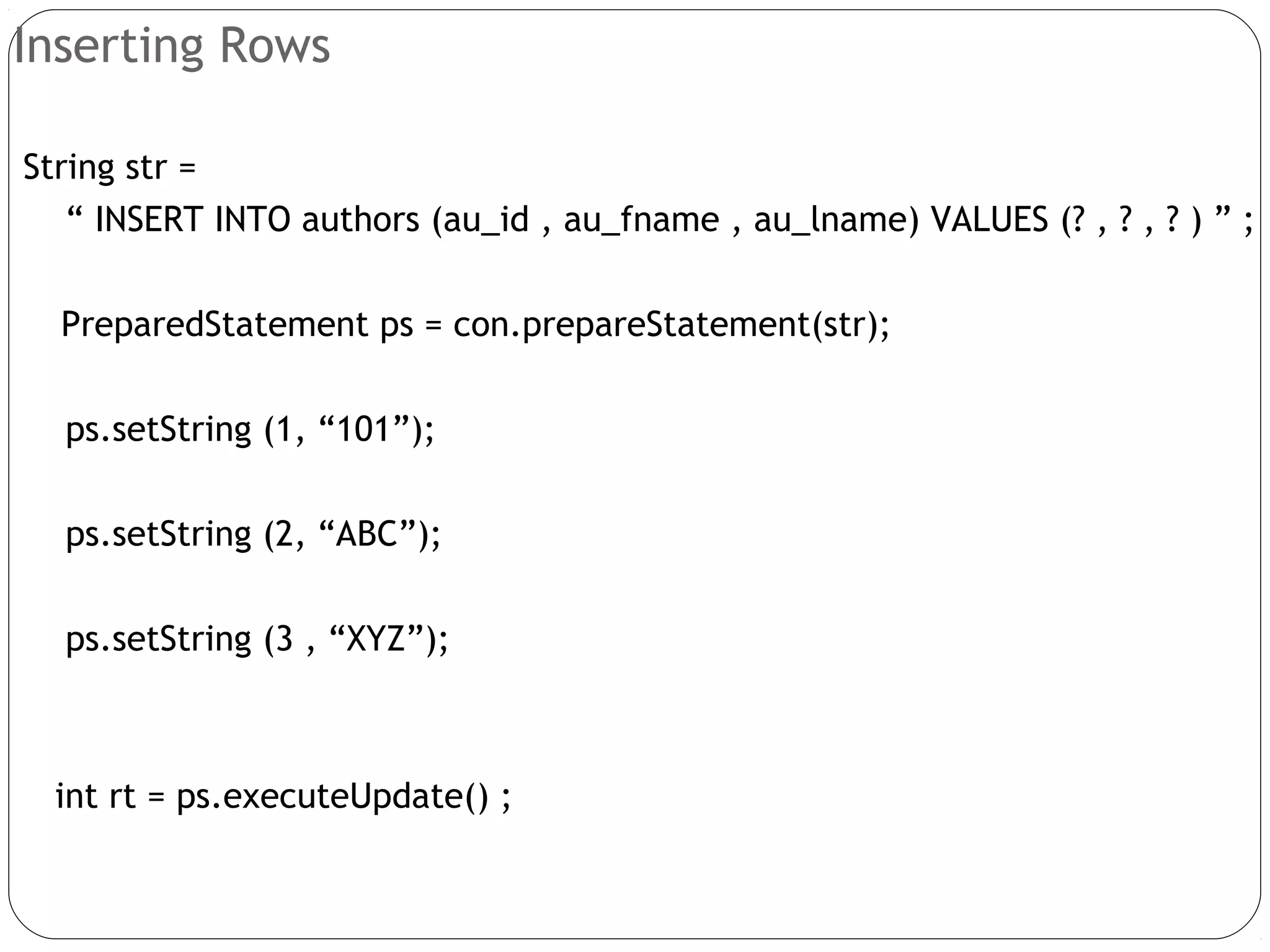
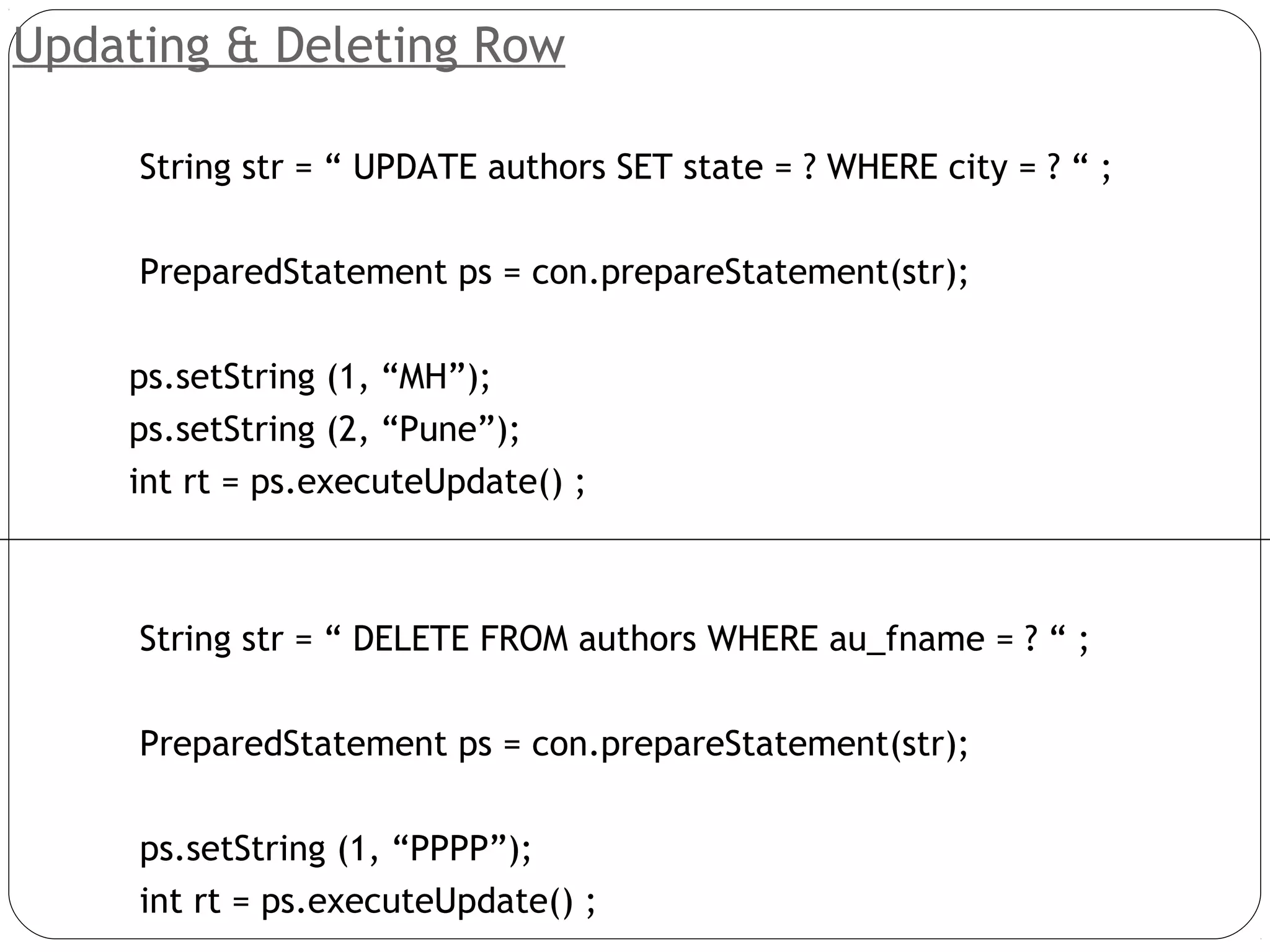
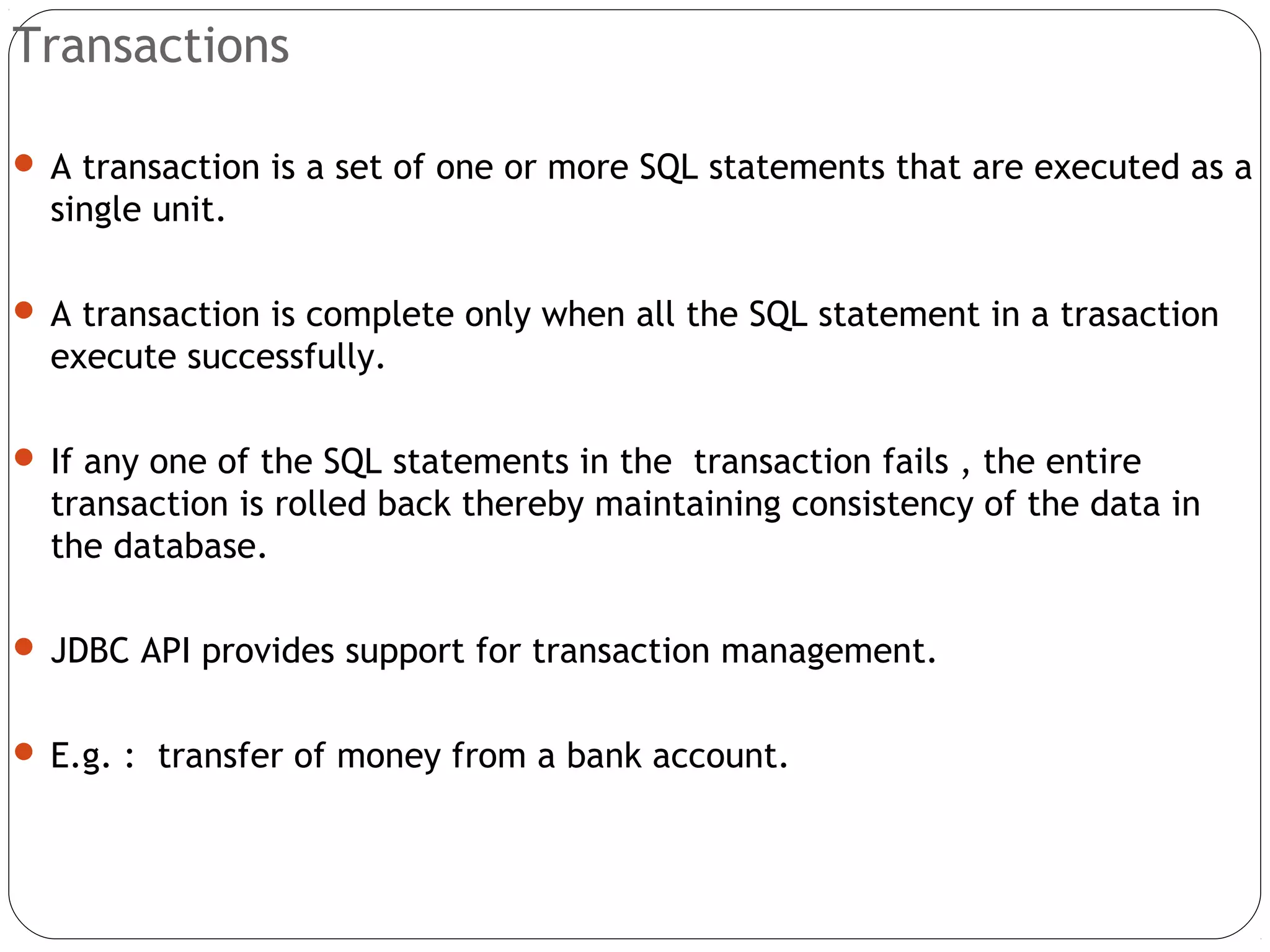
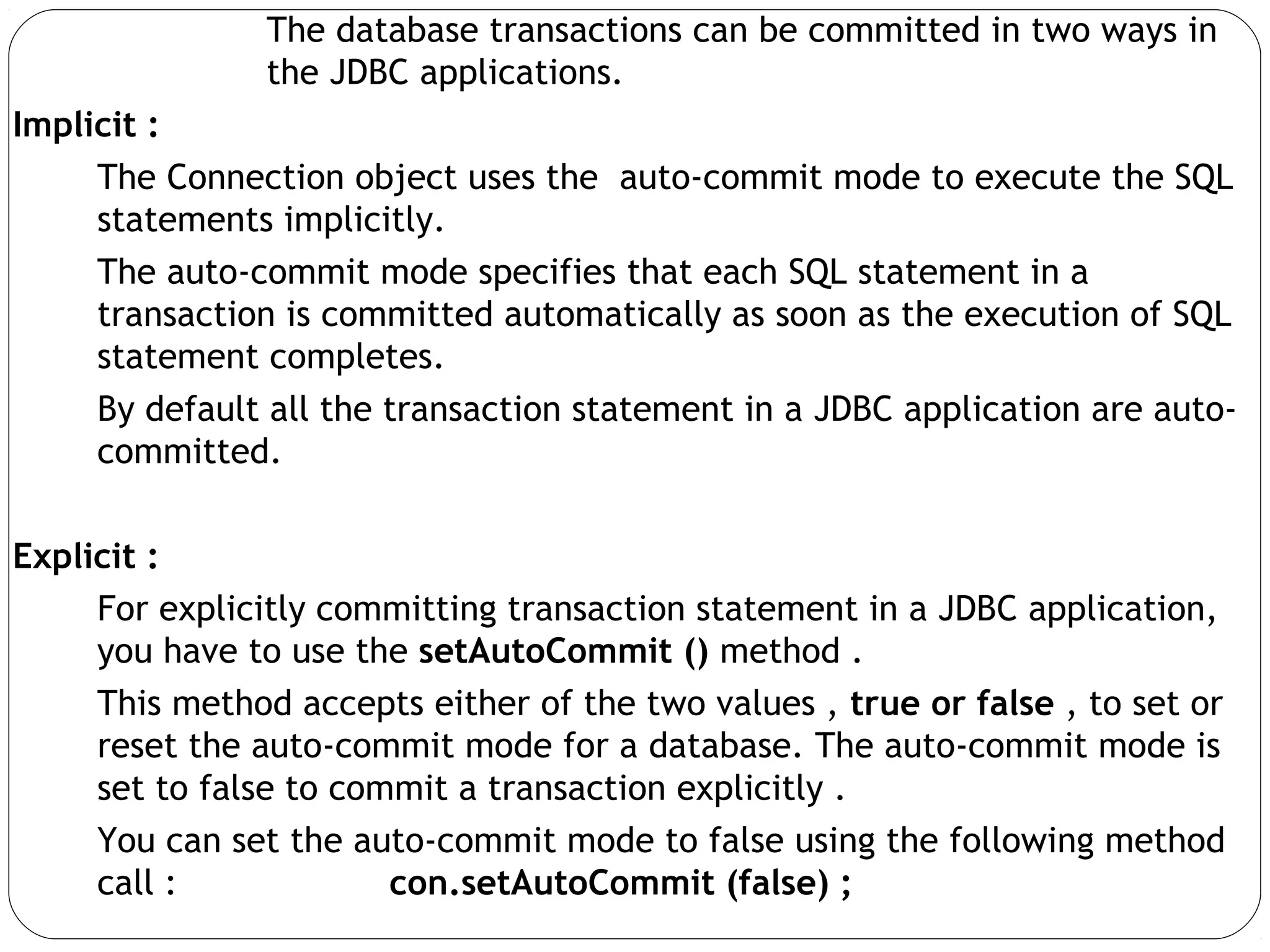
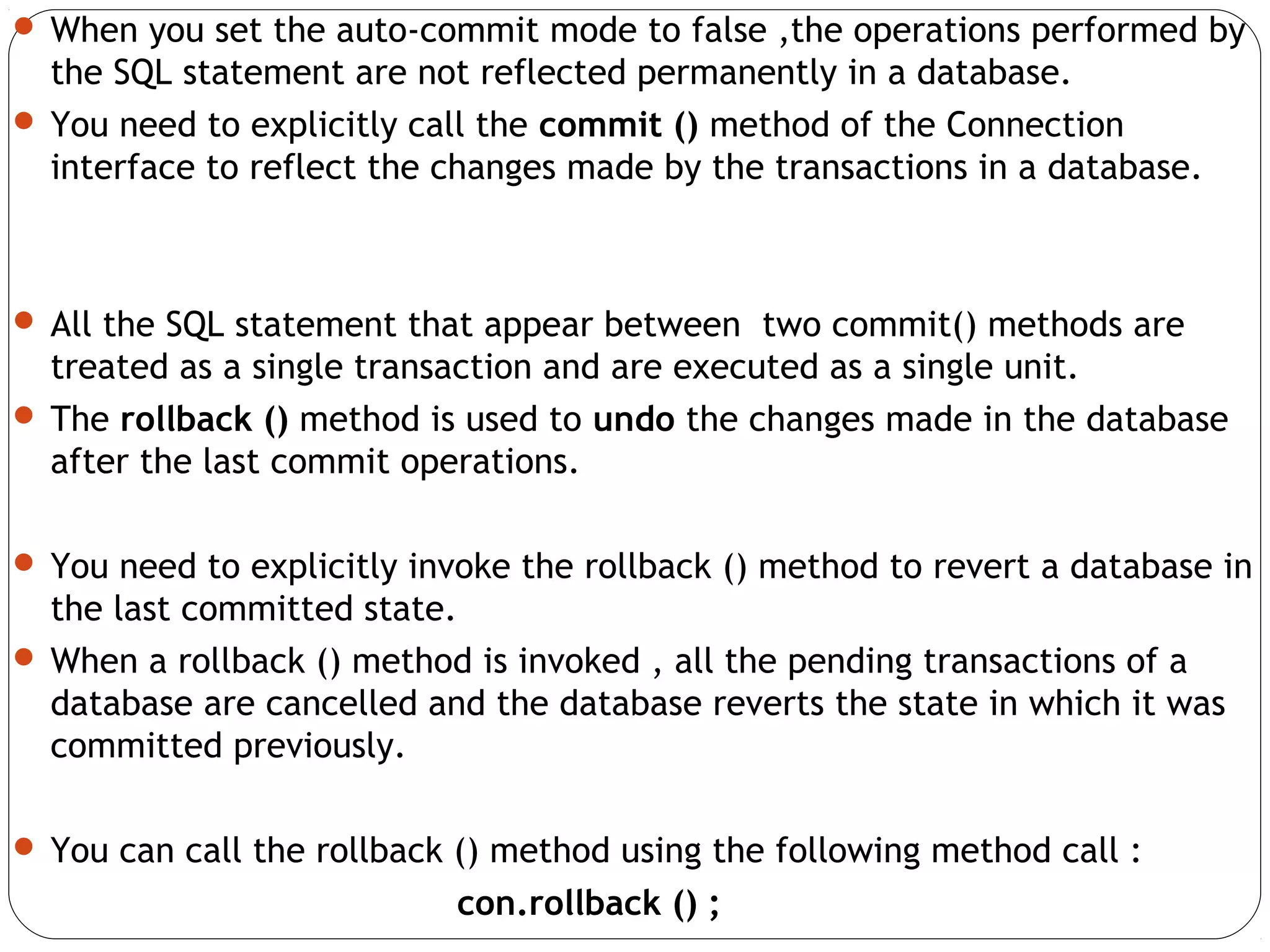
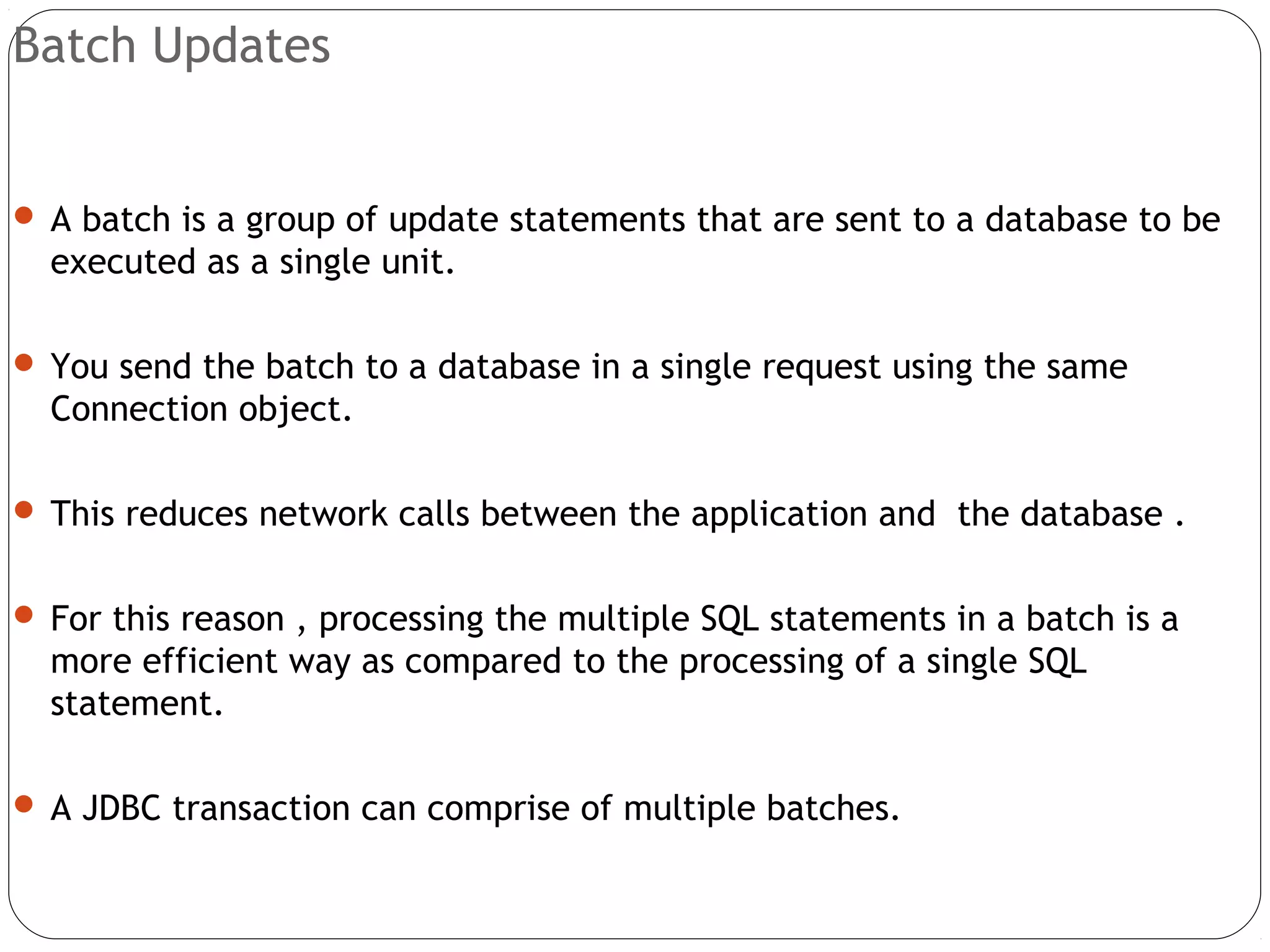
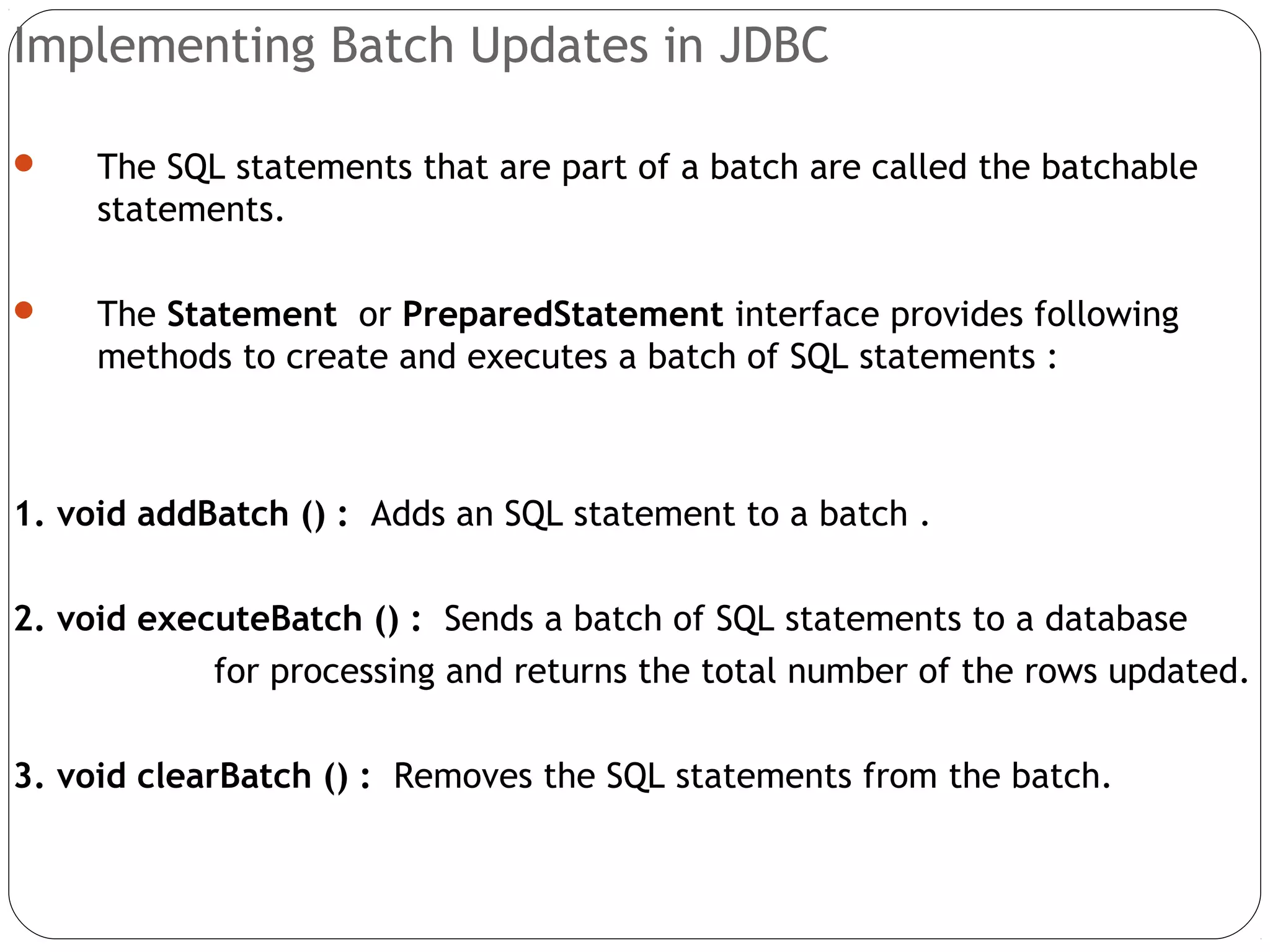

![con.setAutoCommit (false) ;
Statement stmt = con.createStatement () ;
stmt.addBatch(“INSERT INTO product (p-id , p-desc) VALUES
(1001,’PRINTER’) ”) ;
stmt.addBatch(“INSERT INTO product (p_id , p_desc) VALUES
(1002,’SCANNER’) ”);
The SQL statement in a batch are processed in the order in which the
statements appear in a batch.
int [] updcount = stat.executeBatch () ;](https://image.slidesharecdn.com/jdbcppt-150211014728-conversion-gate01/75/Jdbc-ppt-58-2048.jpg)
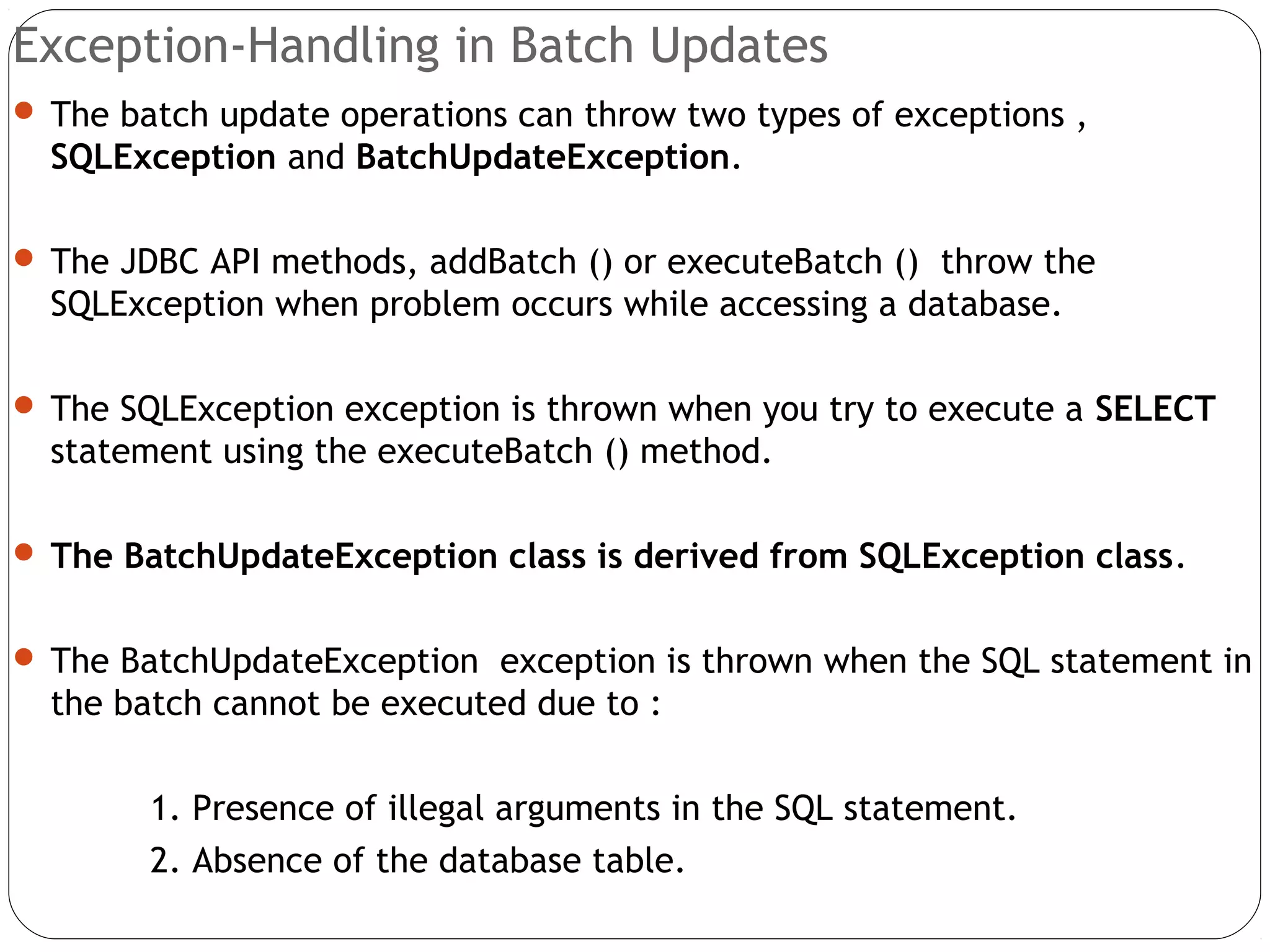
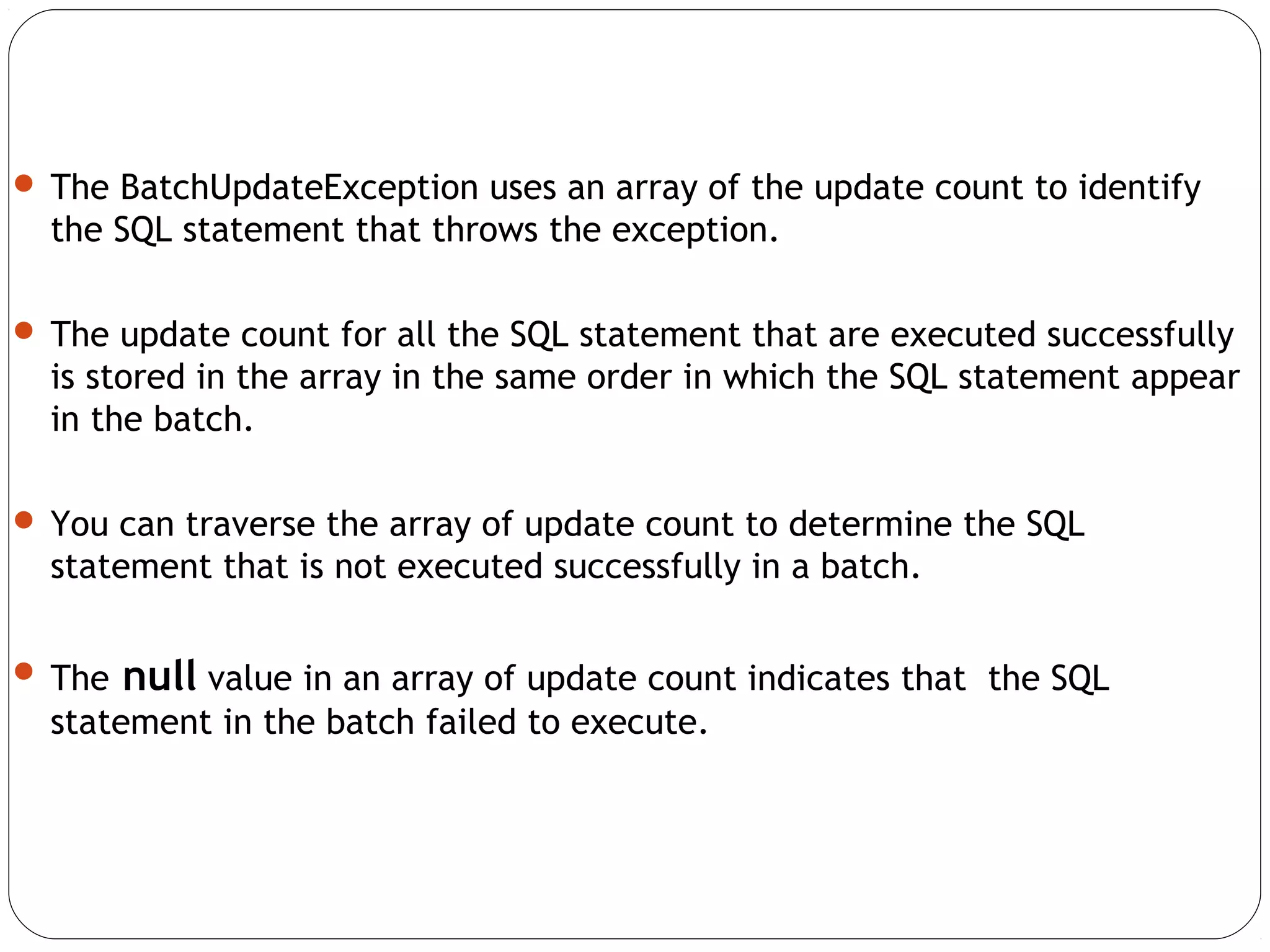
![import java.sql.*;
public class BatchUpdate
{
public static void main (String arg [])
{
try
{
/ * Batch Update Code comes here */
} catch (BatchUpdateException bexp)
{
System.err.println (“SQL Exception :” + bexp.getMessage ()) ;
System.err.println(“Update Counts”) ;
int [] count = bexp.getUPdateCounts();
for (int I = 0 ; i<=count.length ; i++ )
System.err.println(count[i]) ;
}
}](https://image.slidesharecdn.com/jdbcppt-150211014728-conversion-gate01/75/Jdbc-ppt-61-2048.jpg)
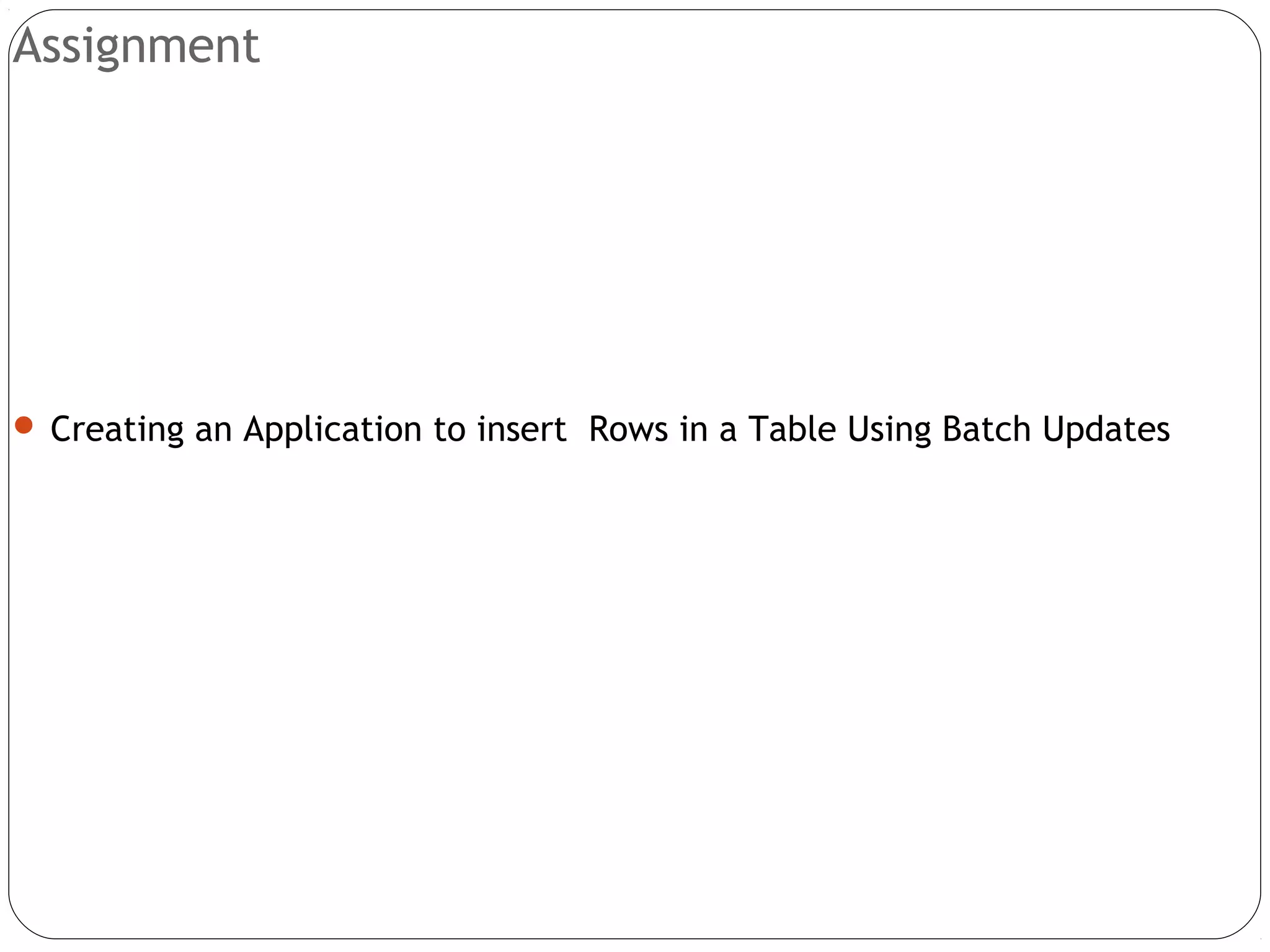
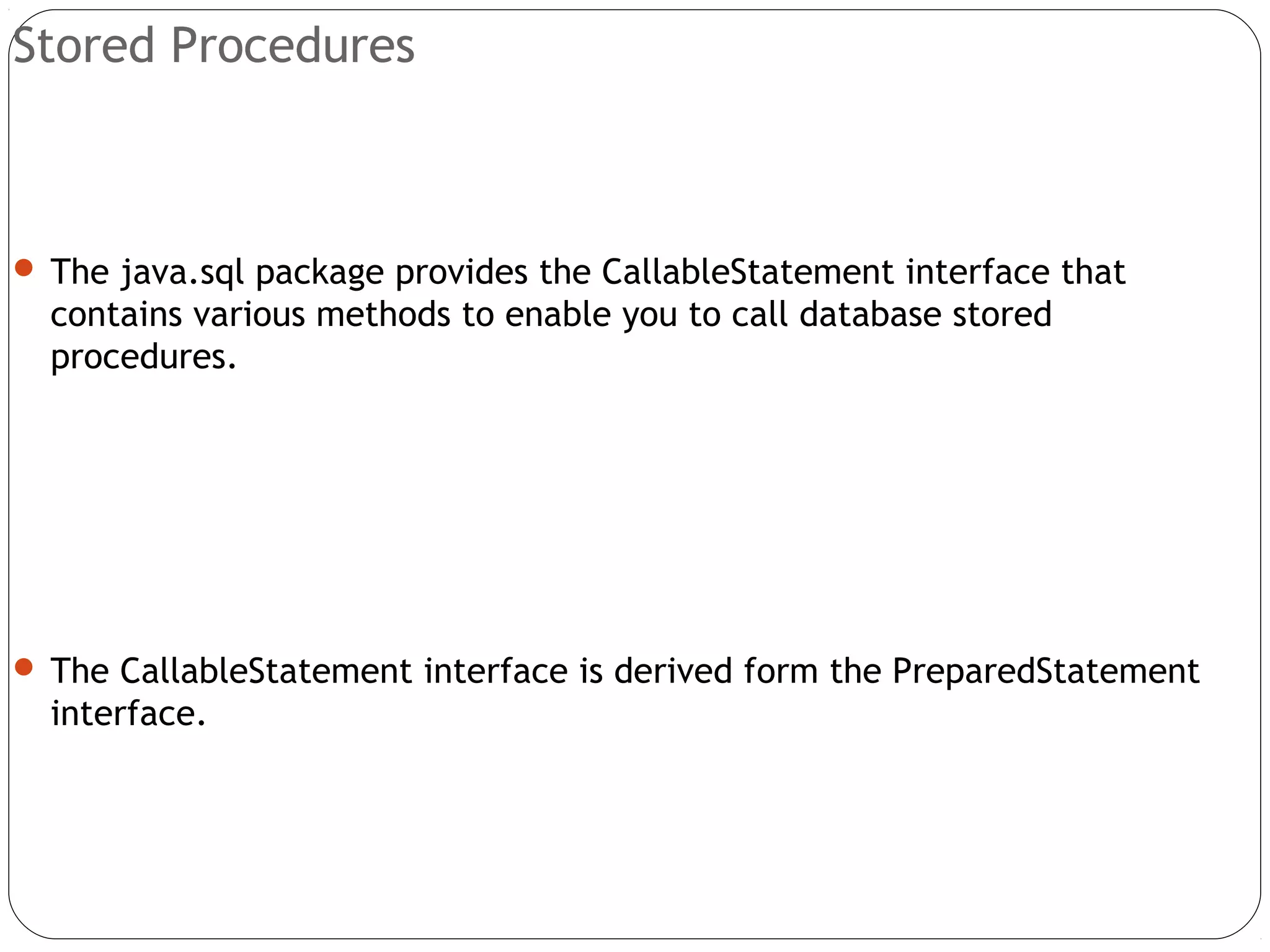
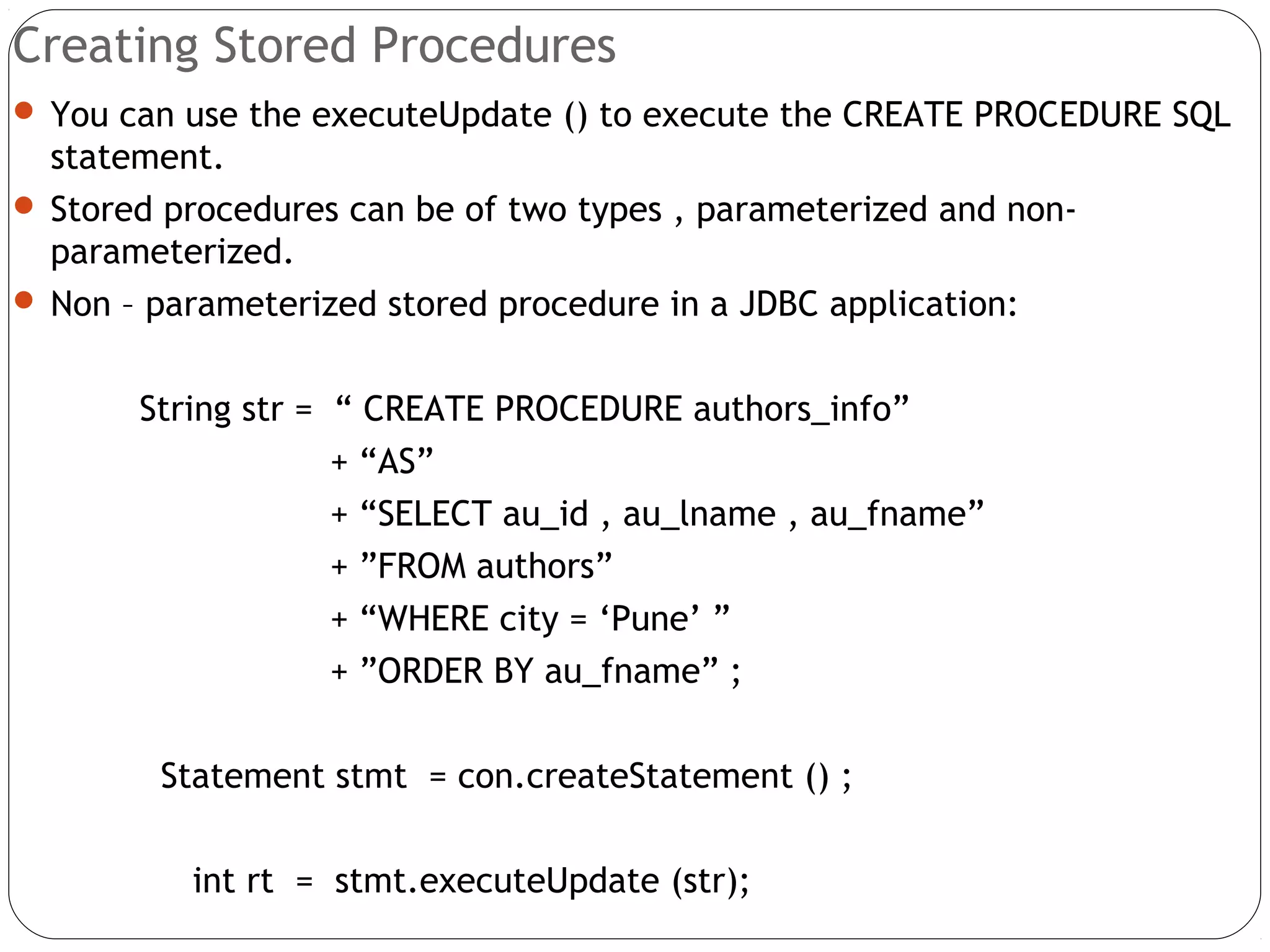

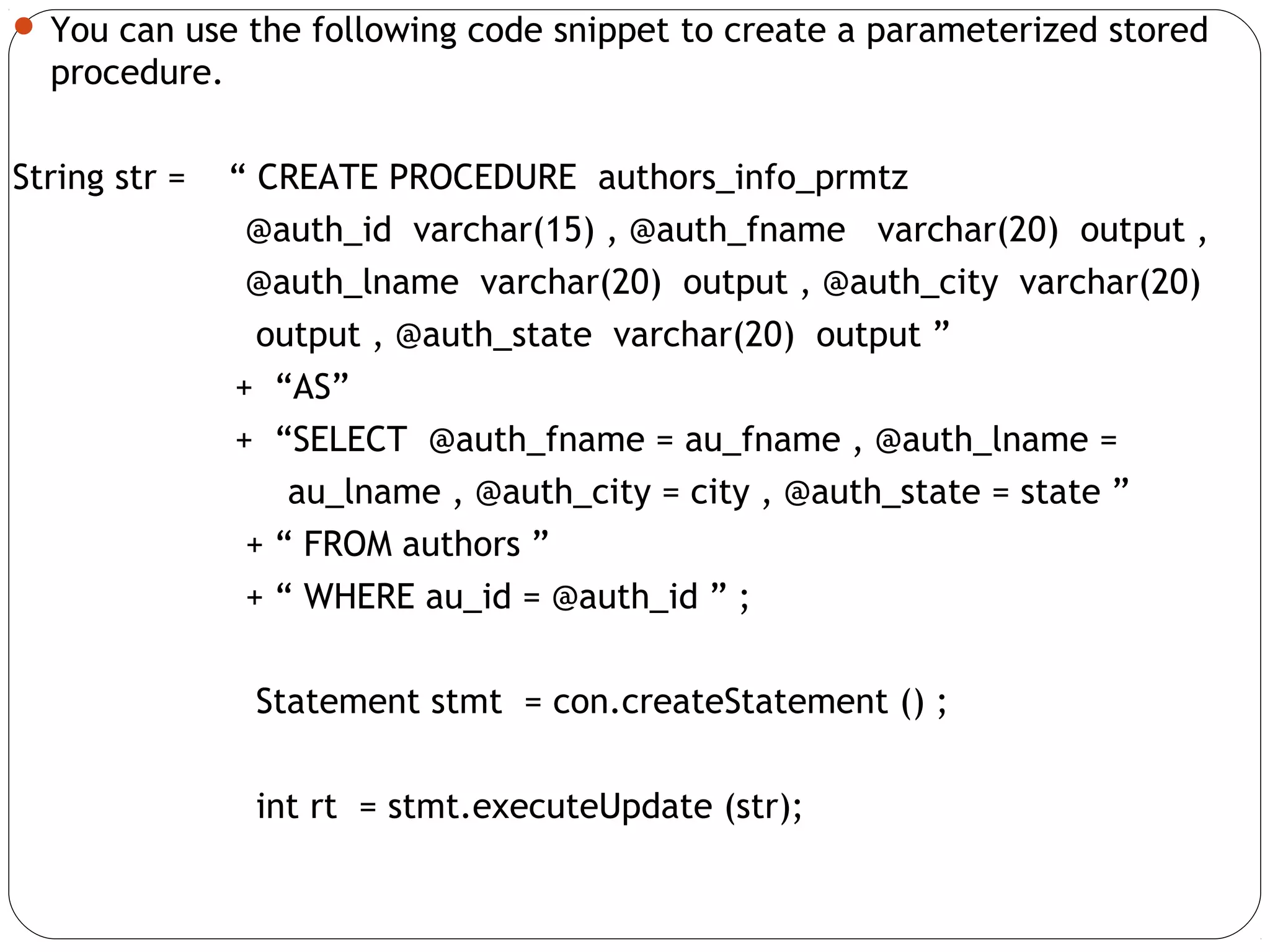

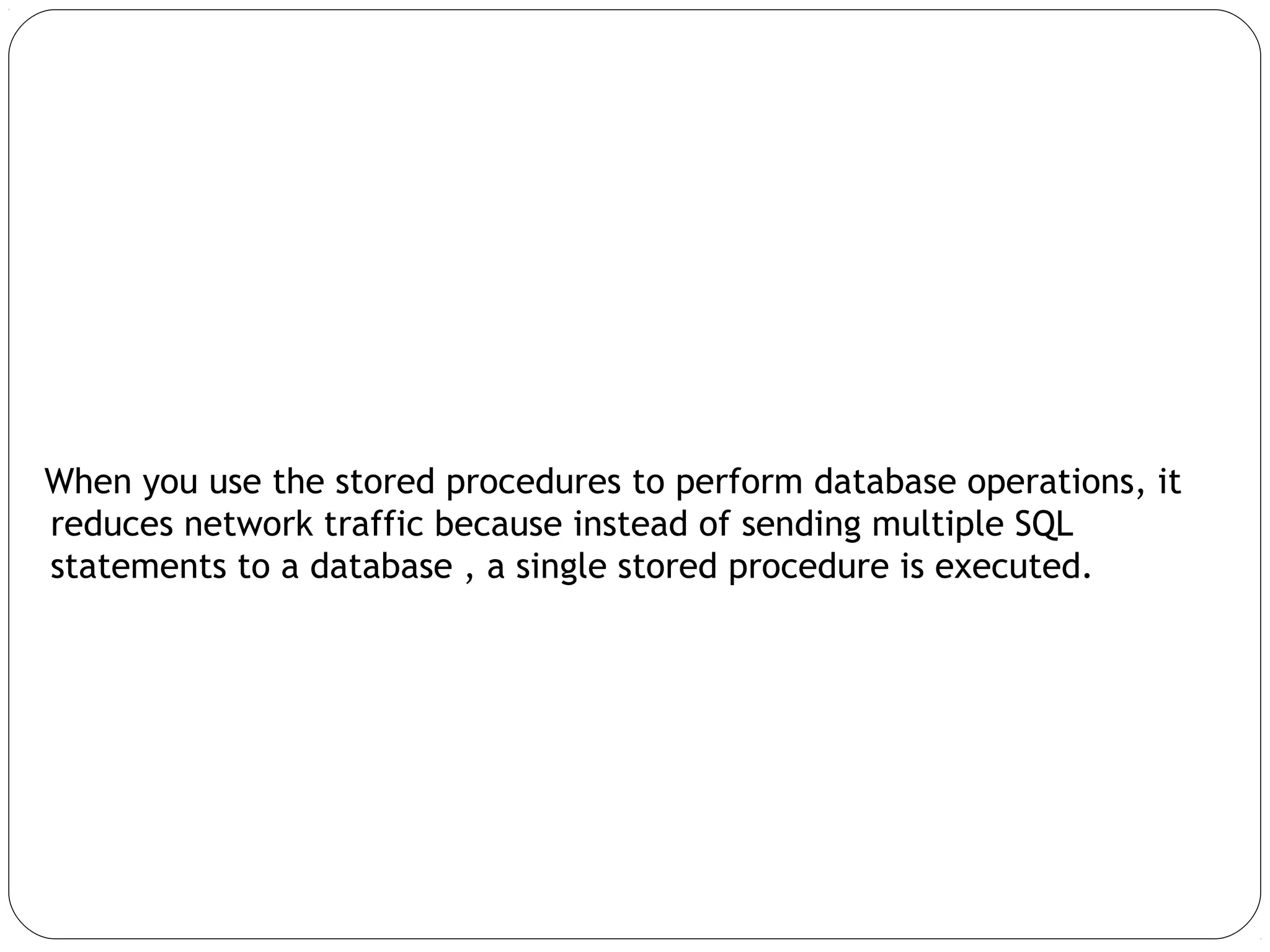


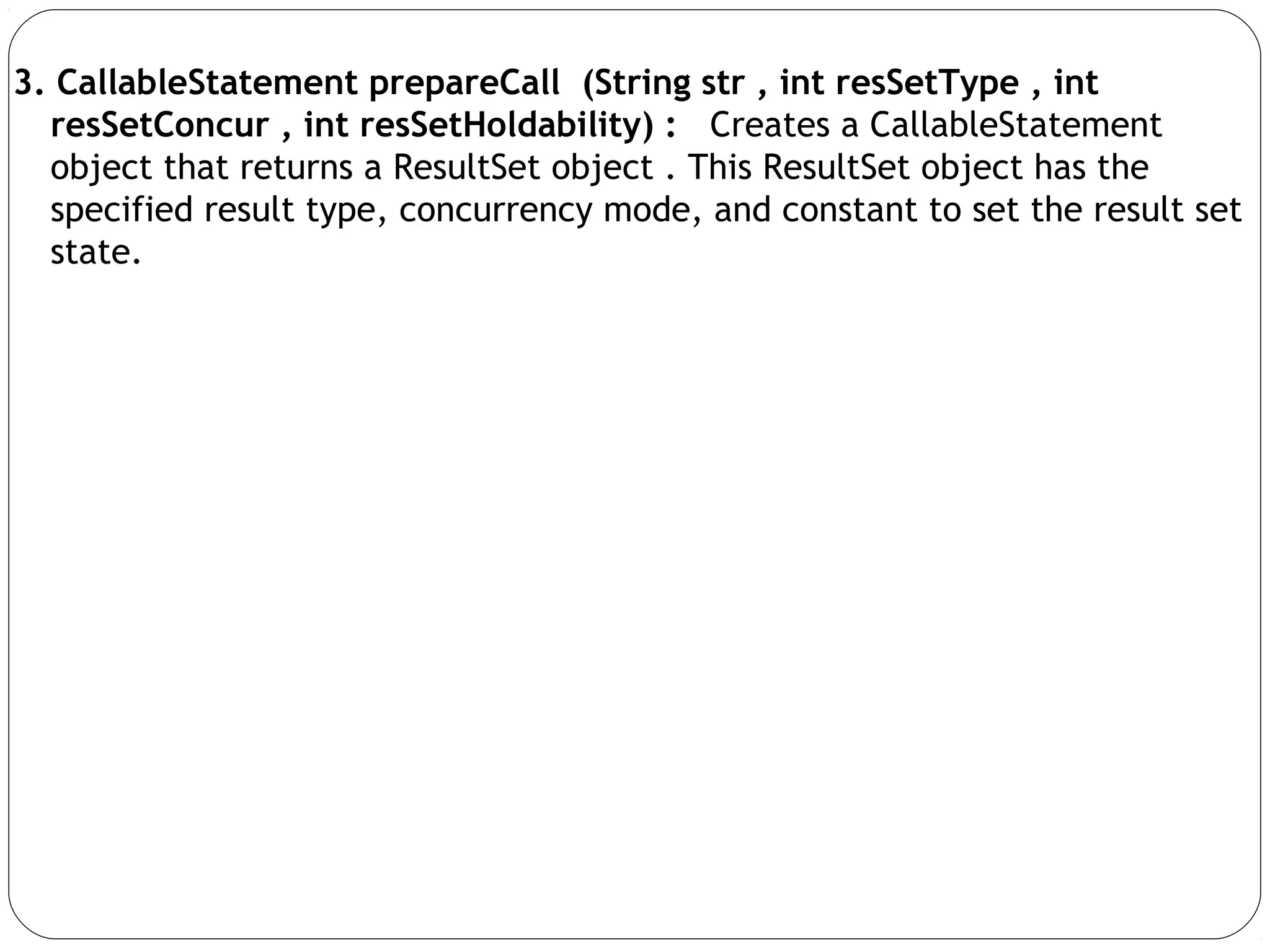
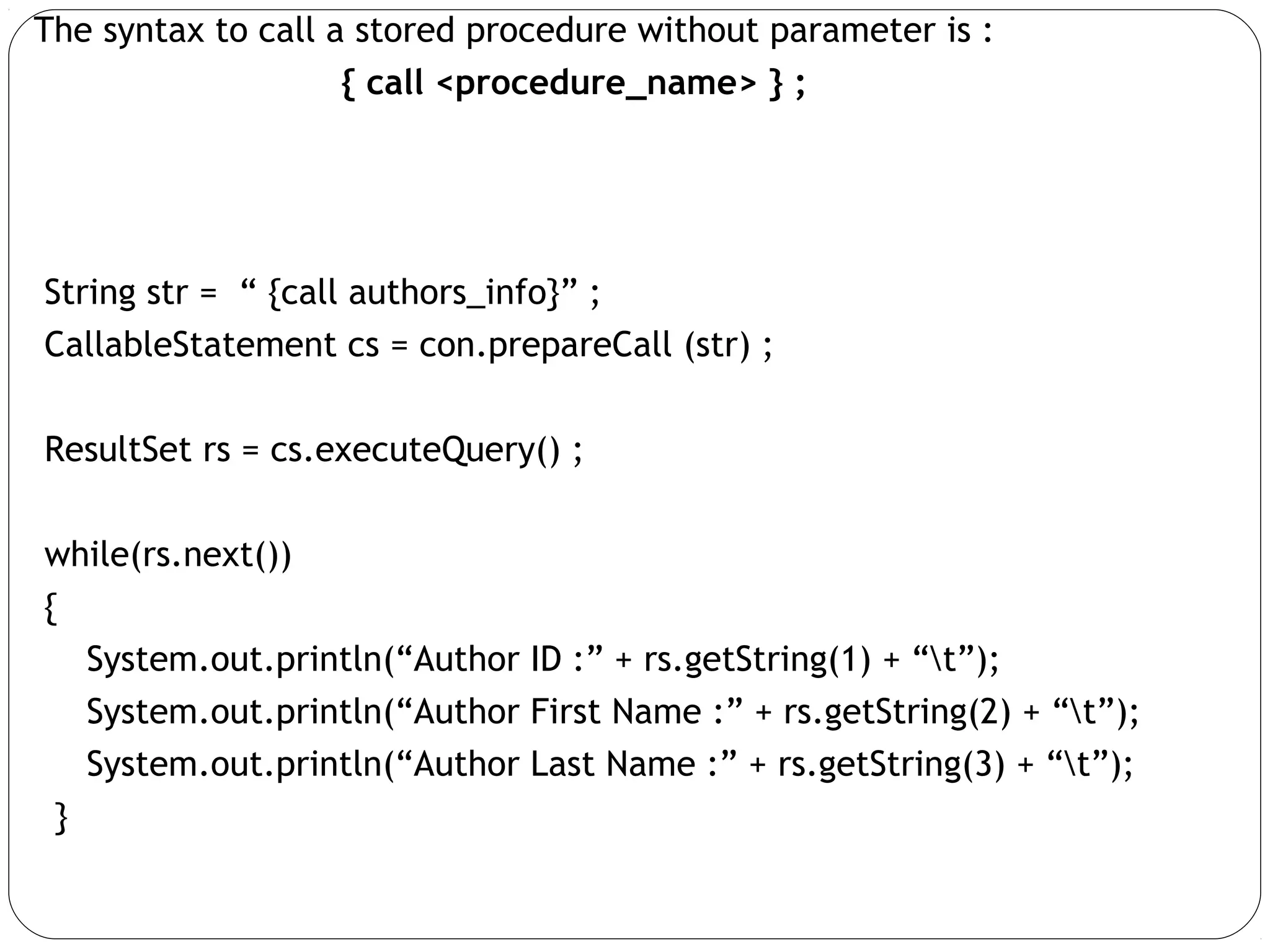
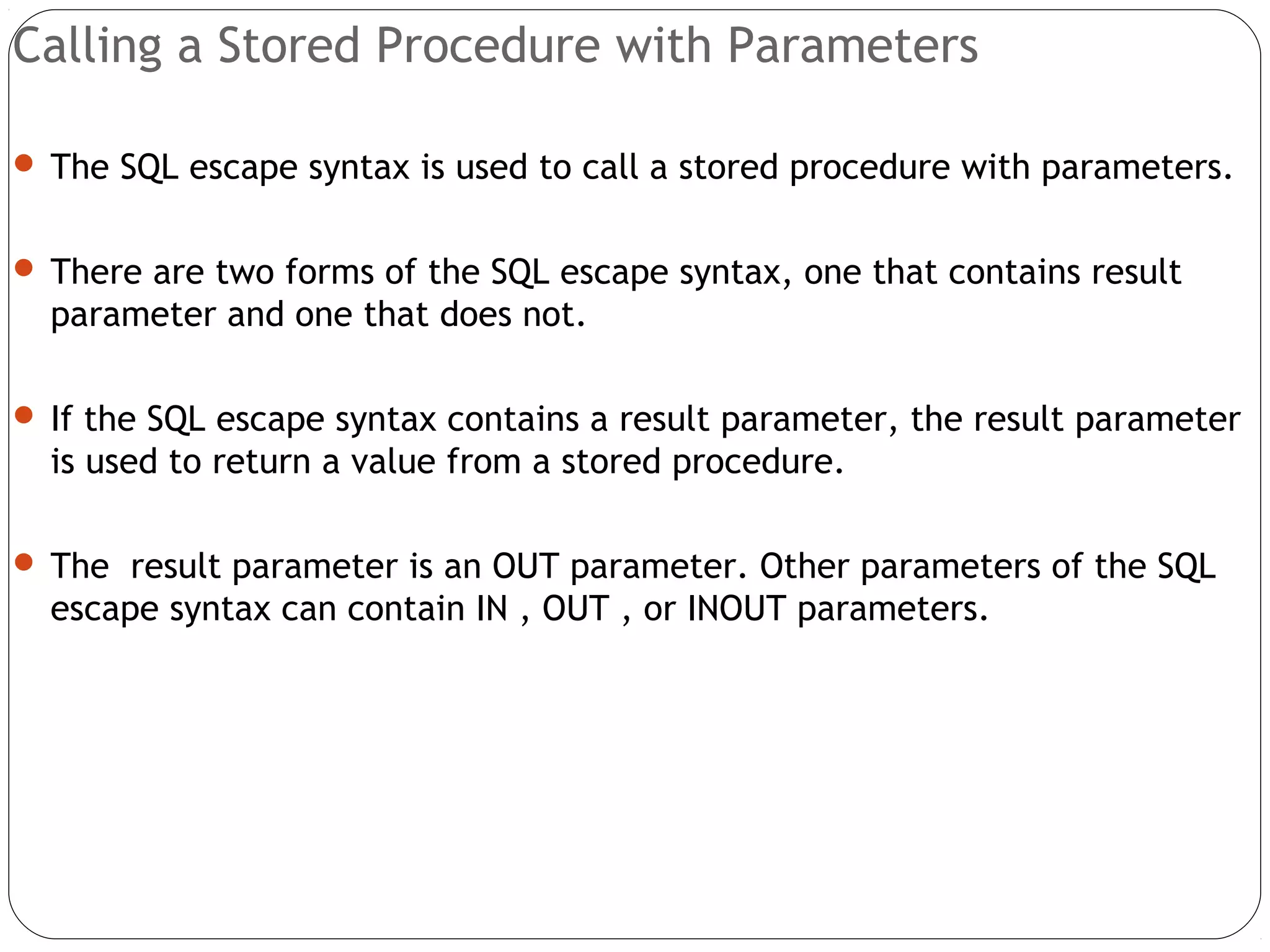
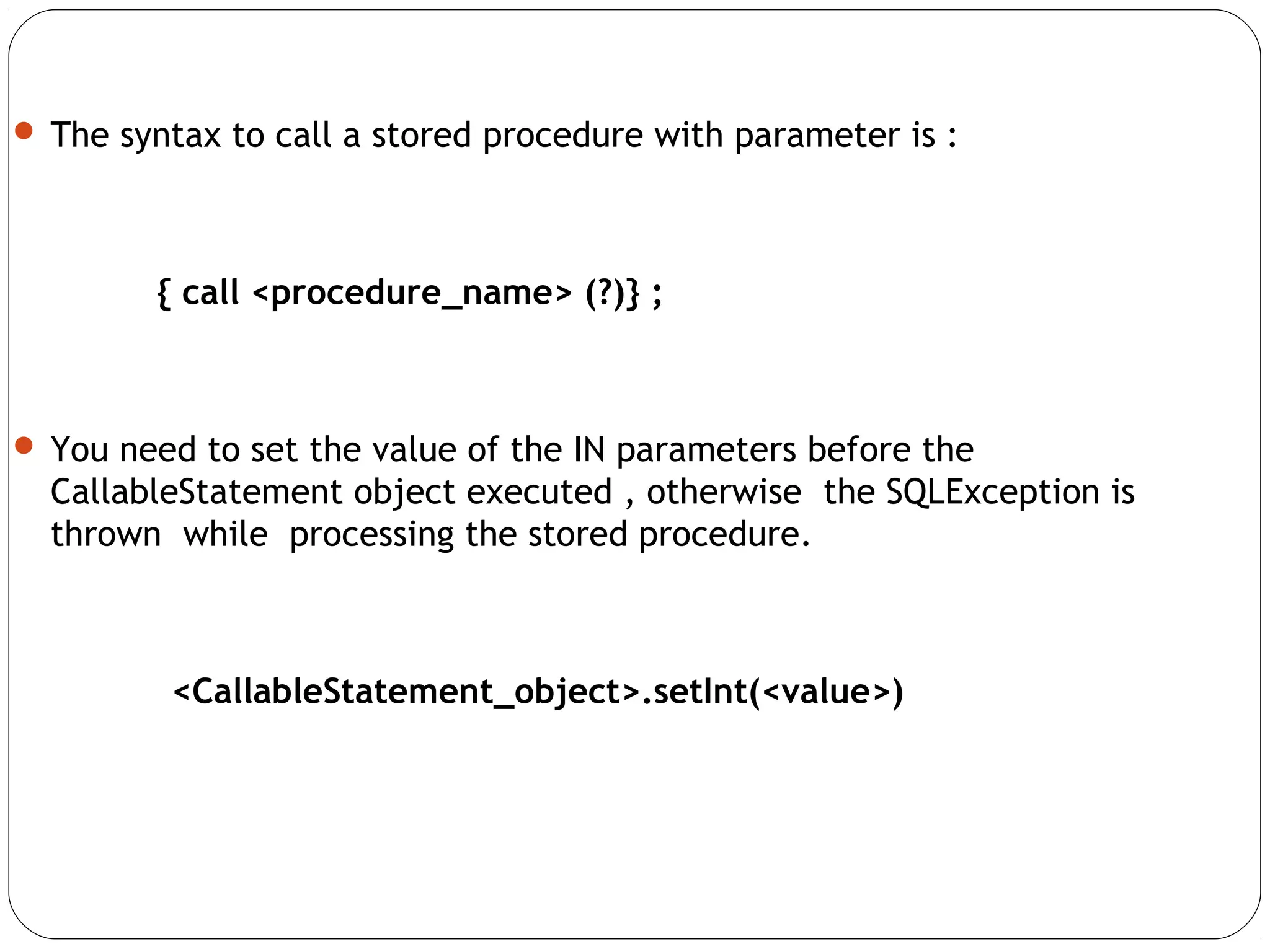
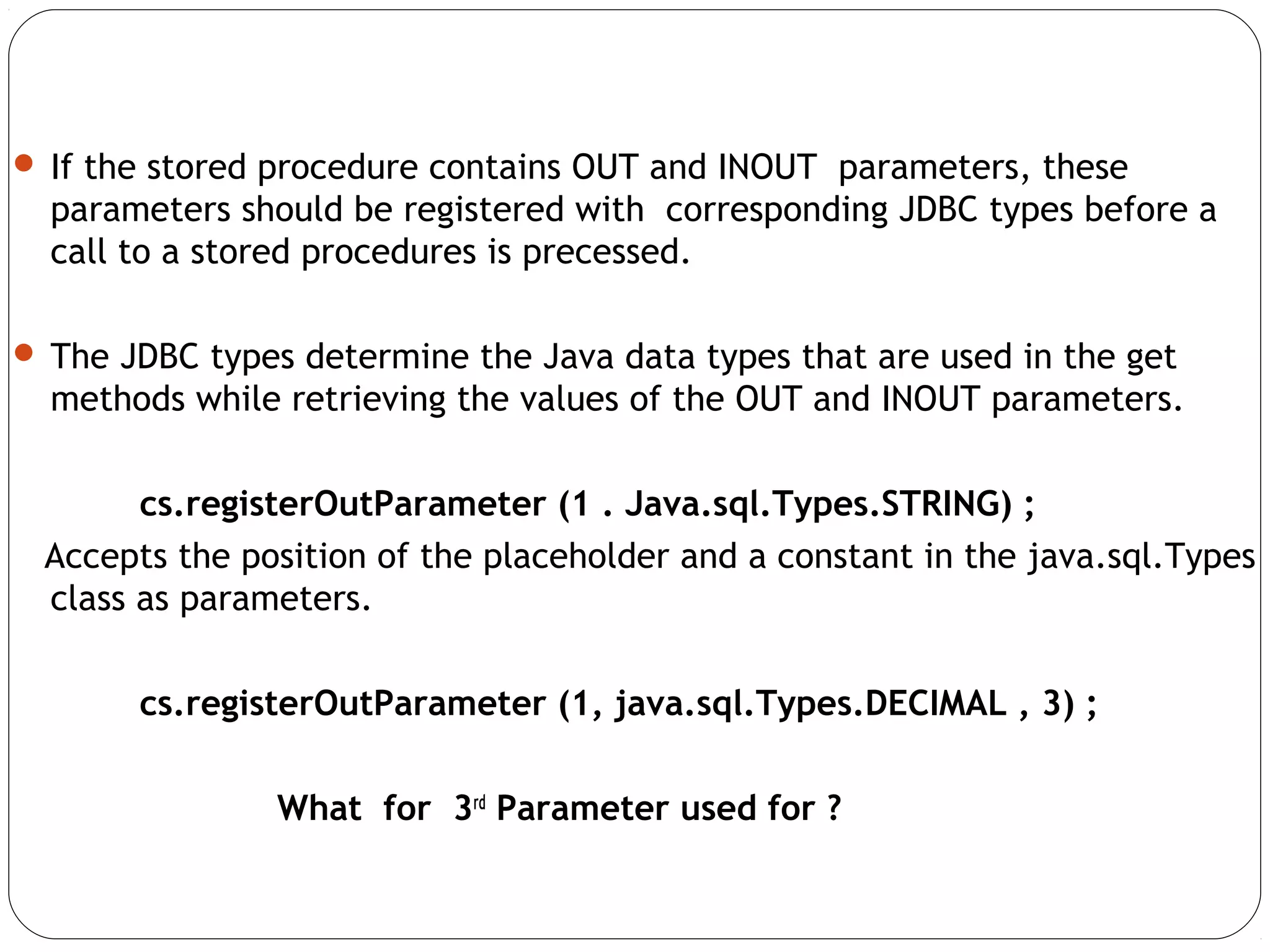
![import java.sql.*;
public class CallProc
{
public static void main(String arg [])
{
String id , fname , lname , address , city ;
try
{
String str = “ { call authors_info ( ? , ? , ? , ? , ? ) } ” ;
Class.forname (“sun.jdbc.odbc.JdbcOdbcDriver”);
Connection con = DriverManager.getConnection(“jdbc:odbc:DSN”) ;
CallableStatement cs = con.prepareCall (str) ;
// pass IN parameter
cs.setString (1 , “123-456” ) ;](https://image.slidesharecdn.com/jdbcppt-150211014728-conversion-gate01/75/Jdbc-ppt-76-2048.jpg)

